The Legend of Zelda game series encompasses numerous titles, making it one of Nintendo’s most successful and enduring franchises, alongside Super Mario. According to the Guinness Book of Records, it holds the distinction of being the longest-running series of action-adventure games and is widely regarded as one of the greatest game series in the history of game development.
For the past 23 years, one game within this series, The Legend of Zelda: Ocarina of Time, has maintained an unrivaled rating of 99 among critics on Metacritic, solidifying its position as the best game in the world. Game designers from various backgrounds have openly expressed their adoration for the series, often citing it as a major source of inspiration for their own creations.
In fact, the Houser brothers famously described Grand Theft Auto III as a fusion of “Zelda meets the Godfather,” highlighting the profound impact the series has had on the gaming industry. With such widespread admiration and influence, one might wonder how this legendary saga, spanning an impressive 35 years, came to be.
The origins of this epic journey lie in the visionary mind of Shigeru Miyamoto, the renowned game designer responsible for many of Nintendo’s iconic franchises. Drawing inspiration from his childhood expeditions in the hills and caves surrounding his hometown, Miyamoto sought to create a game that captured the essence of exploration and adventure.
Thus, in 1986, The Legend of Zelda was born, introducing players to a vast world filled with treacherous dungeons, enigmatic puzzles, and mythical artifacts. Its revolutionary open-world design, nonlinear gameplay, and immersive storytelling quickly captivated gamers worldwide, cementing its status as a groundbreaking masterpiece.
Since its inception, the series has continued to evolve, introducing new mechanics, memorable characters, and breathtaking landscapes with each iteration. From the enchanting melodies of the ocarina to the intricate swordplay, the games have consistently pushed the boundaries of what was thought possible in the realm of interactive entertainment.
As the years passed, The Legend of Zelda grew into a cultural phenomenon, captivating generations of players and transcending the boundaries of gaming. Its enduring legacy is a testament to the artistry, innovation, and timeless appeal that have made it an integral part of the gaming pantheon, forever etching its name in the annals of video game history.
Shigeru Miyamoto
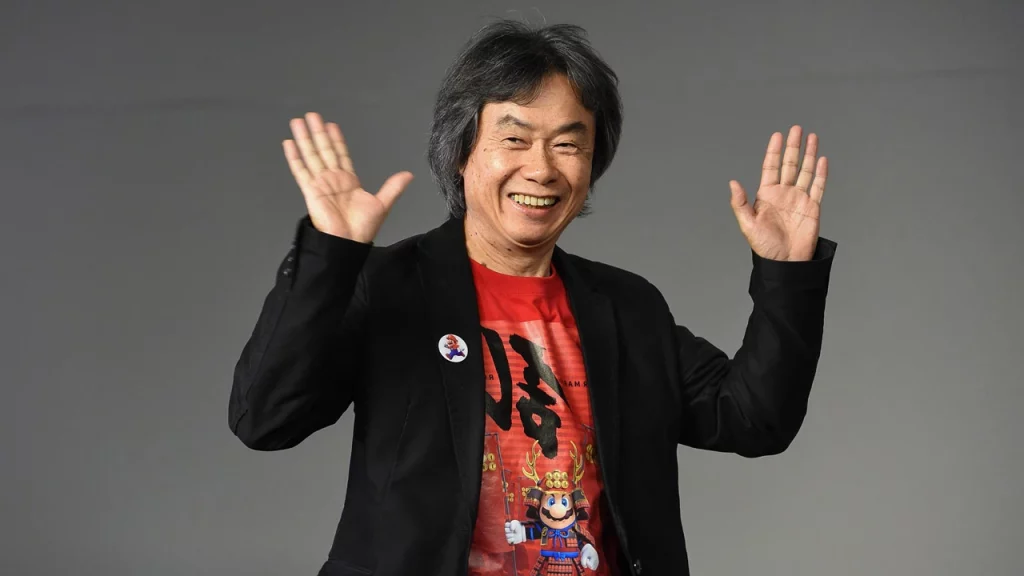
However, it is essential to begin the narrative not with the inception of the first installment, but rather a little earlier, at a pivotal moment for Nintendo as a whole. In 1977, a talented young artist and toy designer named Shigeru Miyamoto joined the company, which was still exploring the nascent realm of video games. Miyamoto’s work left a profound impression on the management and paved the way for his future endeavors in game development.
Initially, Miyamoto contributed to Nintendo as an art designer, leaving his mark on games such as Sheriff (1979) and Donkey Kong (1981). Interestingly, the original concept for Donkey Kong was intended to be based on the characters from the beloved comics and animated series, Popeye the Sailor. However, due to licensing complications, the characters had to be reimagined.
Nevertheless, this unexpected twist of fate proved to be a turning point for Miyamoto and Nintendo. With the need to create new characters for the game, Miyamoto introduced the world to Jumpman, who would later evolve into the iconic hero we now know as Mario. The immense popularity of Donkey Kong solidified Nintendo’s presence in the gaming industry and set the stage for even greater achievements to come.
Miyamoto’s creative vision and ability to breathe life into captivating characters and imaginative worlds became evident through Donkey Kong’s success. His remarkable talent and innovative approach would eventually lead him to conceptualize The Legend of Zelda series, forever changing the landscape of video games.
Thus, it was not only the birth of the first game in the series that marked a milestone for The Legend of Zelda, but also the fortuitous events that shaped Miyamoto’s career and propelled Nintendo into the forefront of gaming innovation.
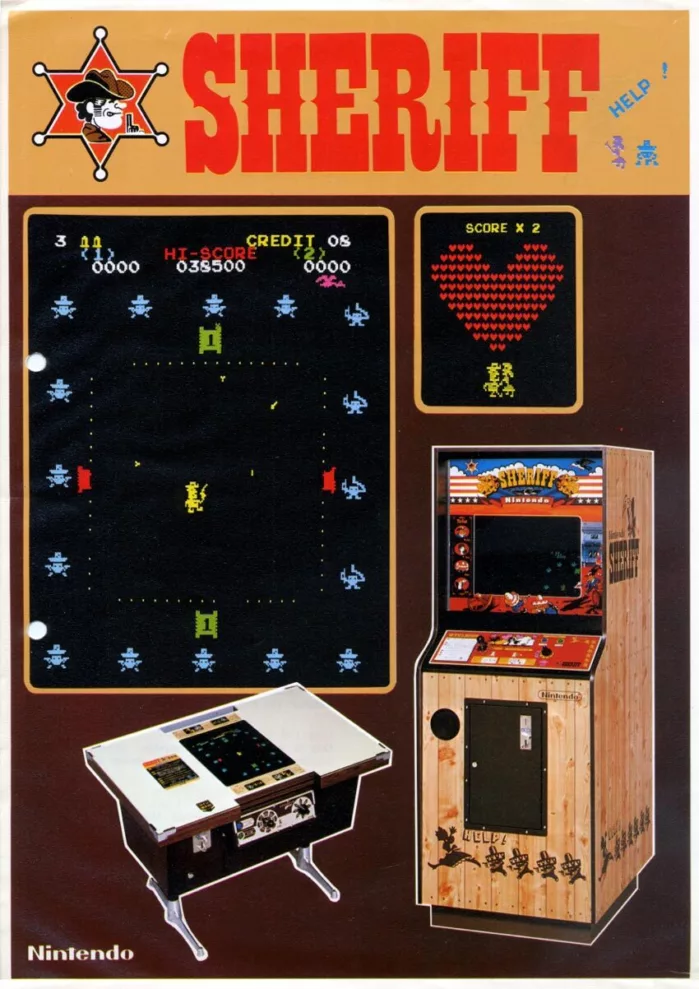
During this period, Nintendo keenly observed the rising demand for home consoles and embarked on the development of their own system, known as the “Family Computer” in Japan and later as the “Nintendo Entertainment System” (NES) internationally. When it hit the market in 1983, the initial lineup of games for the NES consisted mainly of ports from popular arcade titles, including the aforementioned Donkey Kong and its sequel. Additionally, Nintendo released a game based on the beloved Popeye the Sailor franchise.
However, the introduction of a new gaming platform necessitated the creation of fresh and engaging titles. Fortunately, Nintendo’s good fortune continued as they were able to recruit another exceptional designer who would play a pivotal role in the company’s growth—Takashi Tezuka.
Tezuka’s arrival at Nintendo brought forth a wealth of creativity and expertise. Collaborating closely with Shigeru Miyamoto, he contributed significantly to the development of numerous iconic games. Tezuka’s innovative design ideas and attention to detail helped shape the gameplay mechanics and visual aesthetics of Nintendo’s titles, ensuring their enduring appeal.
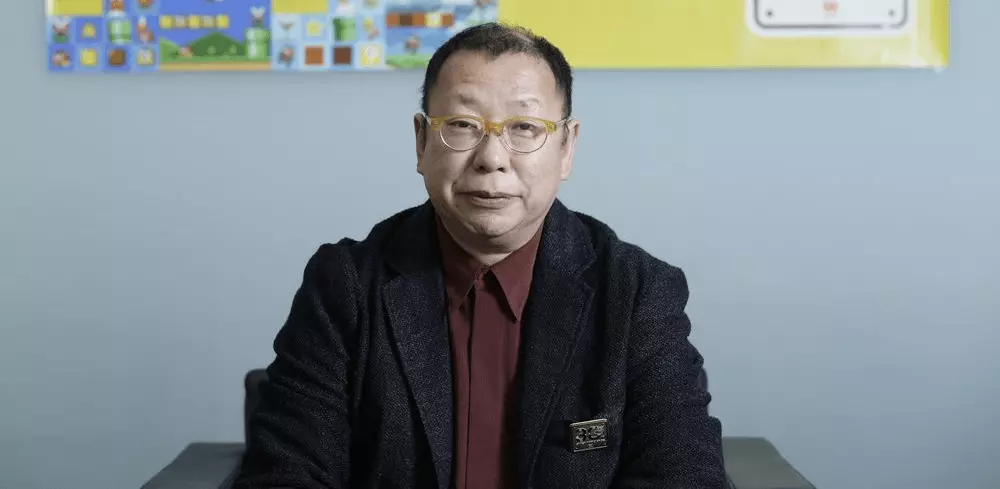
With Tezuka’s involvement, Nintendo expanded its repertoire of games, introducing memorable franchises like Super Mario Bros., The Legend of Zelda, and many others that would captivate generations of players. His contributions proved instrumental in solidifying Nintendo’s position as a leading force in the gaming industry, establishing a legacy of excellence that endures to this day.
The partnership between Miyamoto and Tezuka became a driving force behind Nintendo’s success, with their combined talents and shared passion for creating immersive and innovative gaming experiences shaping the company’s trajectory. Their collaborative efforts laid the foundation for the remarkable growth and influence that Nintendo would enjoy in the years to come.
The Legend of Zelda
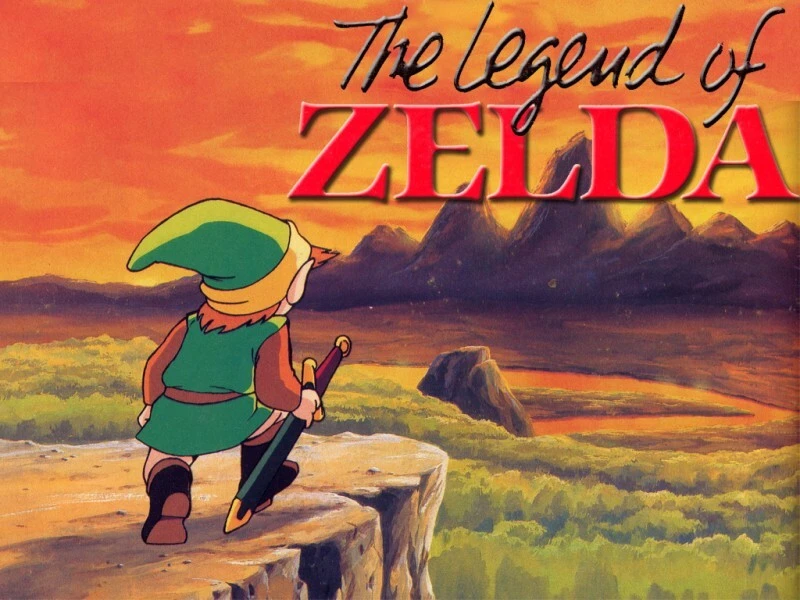
During the development of Super Mario Bros., Nintendo had plans to launch the Famicom Disk System, an add-on for the Famicom/NES that allowed data to be read and written from discs. To generate interest in this add-on, Nintendo needed a flagship game. This sparked Miyamoto’s curiosity, leading him to conceive a game concept centered around two players creating and exploring mazes. However, the prototype revealed that the act of creating mazes was not particularly engaging or exciting for average players, as opposed to exploring pre-designed levels.
Simultaneously, Miyamoto felt that the new game should stand apart from Mario. He sought to move away from linear gameplay and encourage players to contemplate their next steps and decisions.
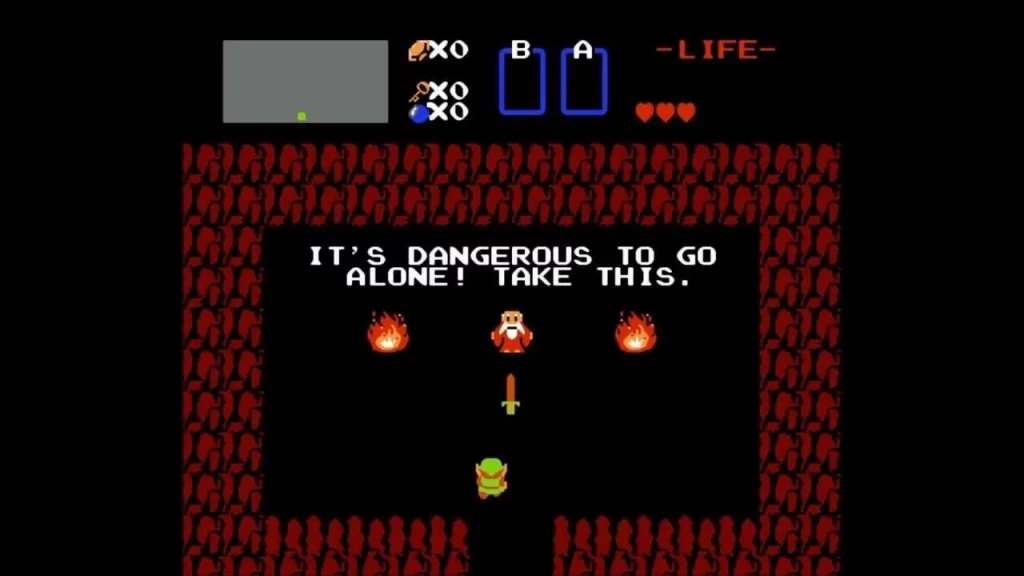
“As with the Mario series, I derived the concept for the Legend of Zelda series from my childhood adventures, exploring the diverse landscapes around my house—abundant with caves and mountains. Due to the limited availability of toys, I often resorted to crafting slingshots or using sticks and twigs to create puppets, finding ways to entertain myself.”
Shigeru Miyamoto
In the original concept of the new game, then still called “Adventure Title”, the player was asked to enter the dungeon from the start screen. Around the same time, Namco’s labyrinth-exploring RPG The Tower of Druaga was popular in Japan. Perhaps at that time, it was she who was taken as a reference, from which the development of a new concept began. But over time, the idea of exploring one dungeon grew into a journey through the open world with the study of many different labyrinths. The team also decided to reconsider the process of interaction between the player and the game world.
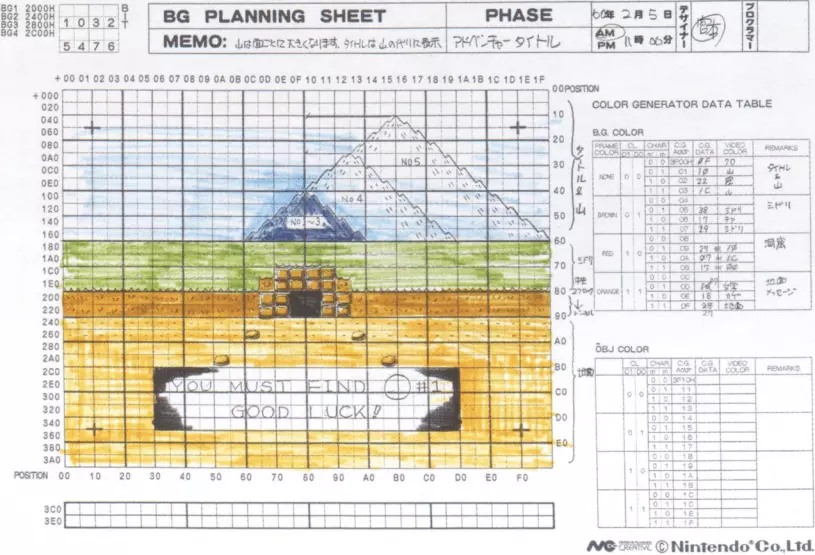
“Simply put, we made a decision to create a real-time adventure game. We wanted to move away from the traditional “push” and “drag” interactions within menus. If you needed to push something, we wanted players to apply force in the right direction.”
Takashi Tezuka
Originally, the team had envisioned time travel as the core concept for the story and plot. It was from this idea that the protagonist of the series, Link, derived his name, symbolizing a “connection” between different time periods. As Link would navigate between the past and the future, he would forge a “link” between these temporal realms. Eventually, the initial time travel concept was discarded, but the name persisted.
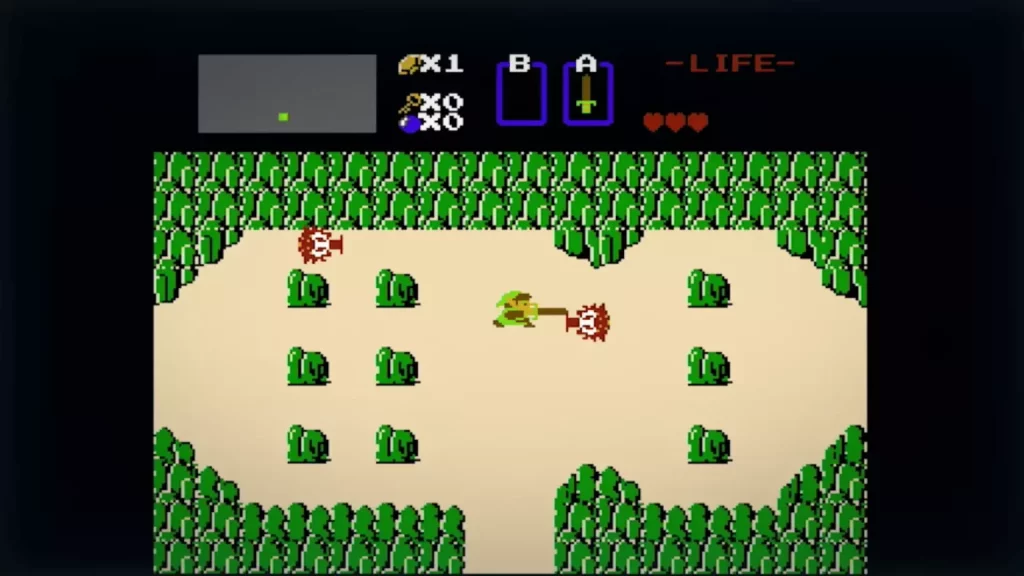
It is also intriguing to note that Link is among the few protagonists in the games who are left-handed. However, his original design featured him as right-handed. As development progressed, the decision was made to redesign him as left-handed to facilitate the creation of the game’s pixel art. This alteration eventually became a defining characteristic of Link’s image, except for two instances on the Nintendo Wii and in Breath of the Wild.
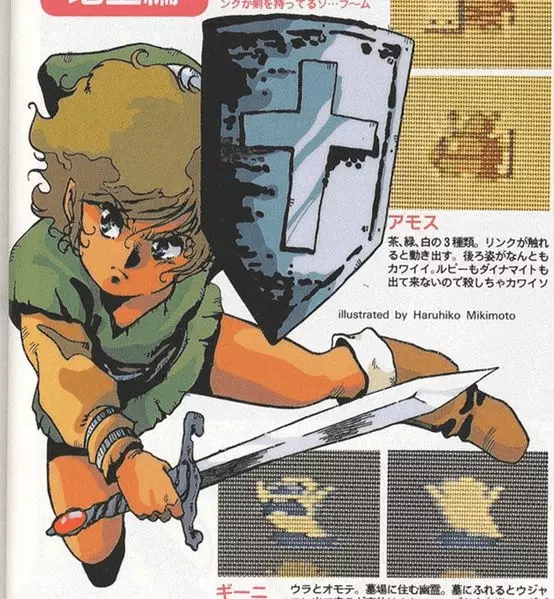
During the course of development, the game’s plot underwent several changes until Keiji Terui, renowned screenwriter of Dr. Slump and Dragon Ball, took charge. He proposed a much simpler concept rooted in medieval European conflicts. Interestingly, this shift played right into Miyamoto’s hands, who had frequently incorporated the “damsel in distress” theme in his earlier Sheriff game and other works. Consequently, Zelda, a princess named after the wife of American novelist Scott Fitzgerald, assumed the role of the “troubled lady” this time. In an interview, Miyamoto revealed that he was so captivated by the melodic quality of her name that he decided to name the entire game after her.
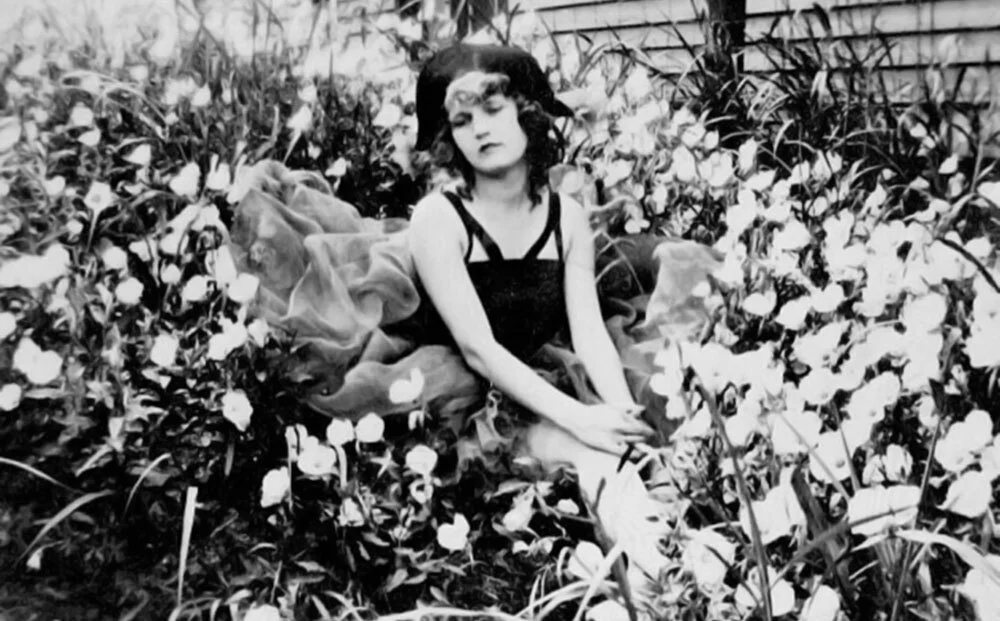
However, The Legend of Zelda was not primarily focused on its plot; it revolved around the player’s own story. It emphasized how players would explore the vast world and the diverse encounters they would face along the way. Due to this, Miyamoto dedicated significant attention to seemingly insignificant details that subtly shaped the overall experience. One such example was the game’s music.
I remember how he (Miyamoto) made me make a lot of different sounds for the flute. He was very picky about that sound. “He shouldn’t just be ‘good’. I want it to be more mysterious, “he told me many times.
Koji Kondo
Throughout the development process, the team faced numerous limitations imposed by the Famicom hardware. Similar to the creation of Super Mario Bros., they found ways to incorporate intriguing mechanics within these constraints. However, it was also necessary to abandon certain ideas along the way.
We had a lot of things that we wanted to implement but could not due to hardware limitations. For example, for Level 7 with the entrance to the dungeon, we simply changed the texture to earth when the water dried up, but we wanted the water to actually evaporate. And there you can burn a few small trees, but we planned to give you the opportunity to burn one big one.
Shigeru Miyamoto
During the development phase, a few errors were encountered, including one related to the length of the game itself. Initially, the dungeons were meticulously drawn on checkered paper, with each cell representing a single room. Tezuka, responsible for creating the game map, handed these drawings to programmer Toshiko Nakago for implementation. However, a mistake occurred, resulting in the game’s map being only half the size of the original plan. Fortunately, Miyamoto saw an opportunity in this setback and suggested utilizing the second half as an unlockable “Second Quest,” enhancing the overall game experience.
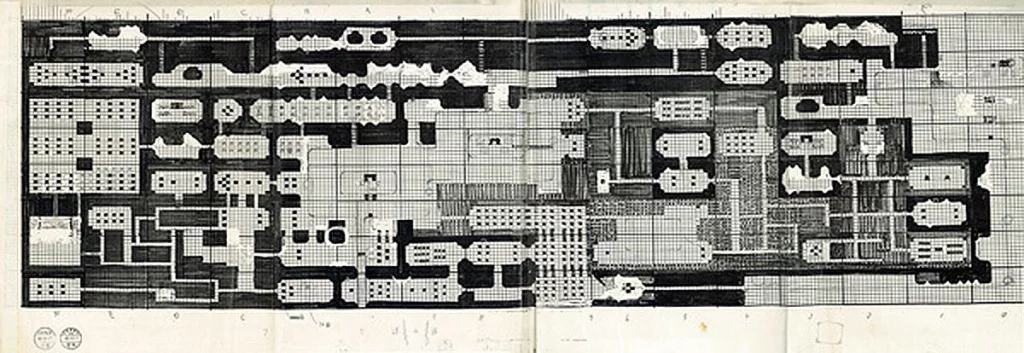
However, despite all the difficulties in development, The Legend of Zelda went on sale in Japan on February 21, 1986 on the Famicom Disk System and was an incredible success. The game offered incredible possibilities for its time, being one of the first non-linear story games. As a result, The Legend of Zelda sold 6.5 million copies on the Famicom and NES, received critical and casual acclaim, and is still frequently featured on all-time best game lists.
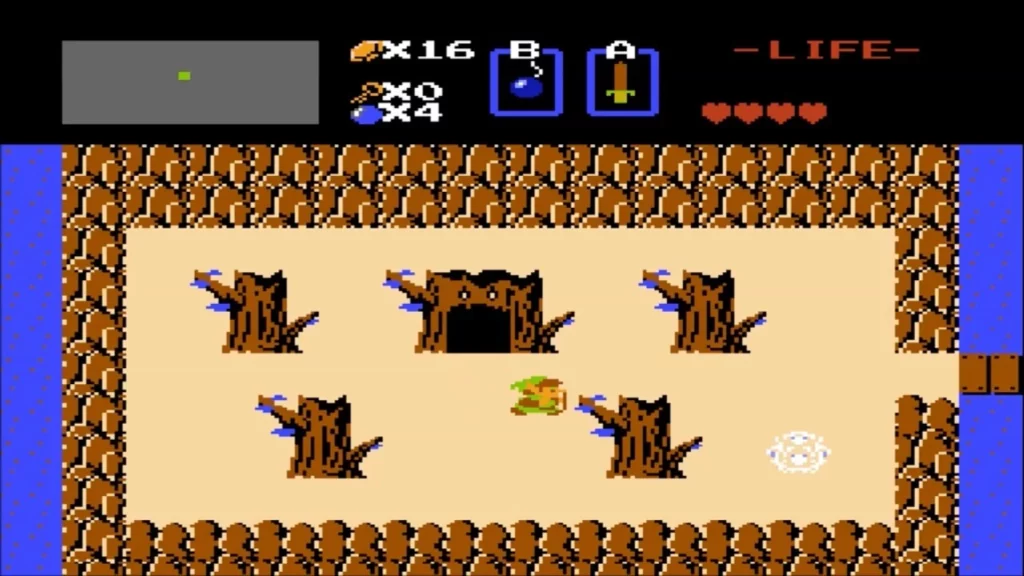
The Legend of Zelda has had numerous ports to different consoles. Nowadays, one of the easiest and legal ways is through NES/Famicom for Nintendo Switch Online.
The Legend of Zelda: The Adventure of Link
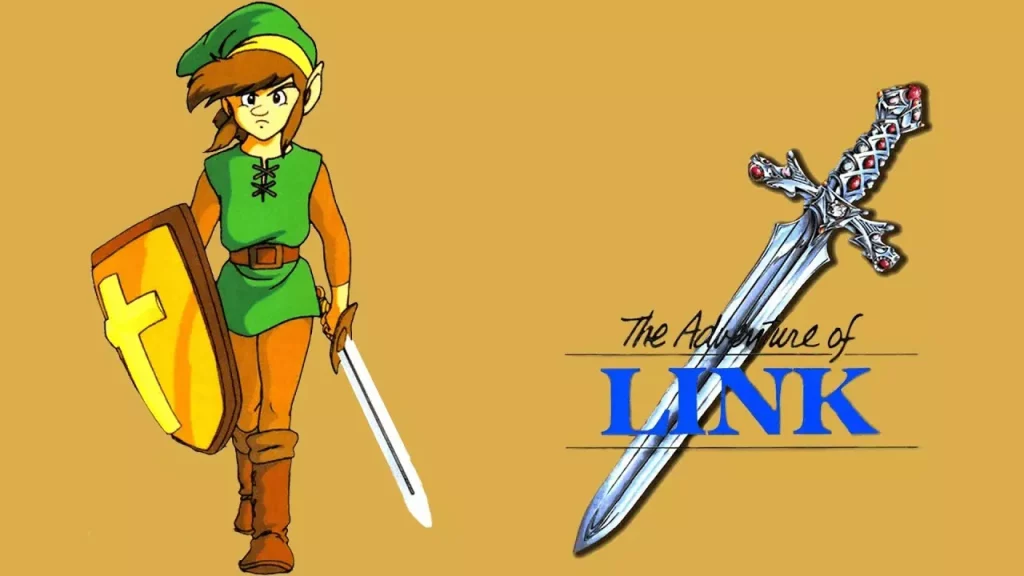
The second installment of The Legend of Zelda, known as Zelda II: The Adventure of Link, diverged from the expectations of many. This was mainly because the game was not originally intended to be part of the series. It was developed by a separate team, although they incorporated the ideas of Miyamoto and Tezuka, who desired to introduce Zelda in a side-scrolling format.
The core of this new team consisted of graphic designer Tadashi Sugiyama, who had previously contributed to the development of Ice Climbers and Baseball, serving as the game designer and development lead, with Yasuhisa Yamamura assisting. The original creators of the first game were primarily occupied with Super Mario Bros. 2 and 3 at the time, but they still provided some assistance. Tezuka devised the main concept for the story, while Miyamoto conceived a combat system that would suit the game’s distinct perspective, setting it apart from its predecessor.
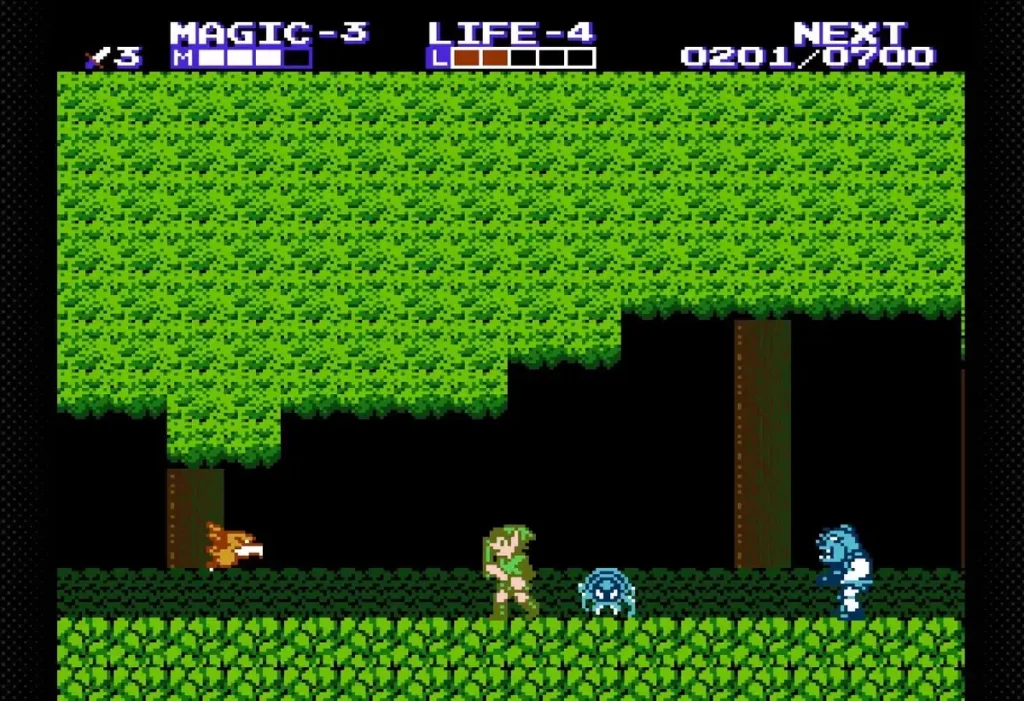
However, the top view still remained, albeit only while moving around the world. When exploring dungeons and fighting, everything looked more like Mario. It is also the only part of the series that has a full-fledged set of characteristics that includes gaining experience for killing monsters. Therefore, The Adventure of Link can be considered the only RPG in the series.
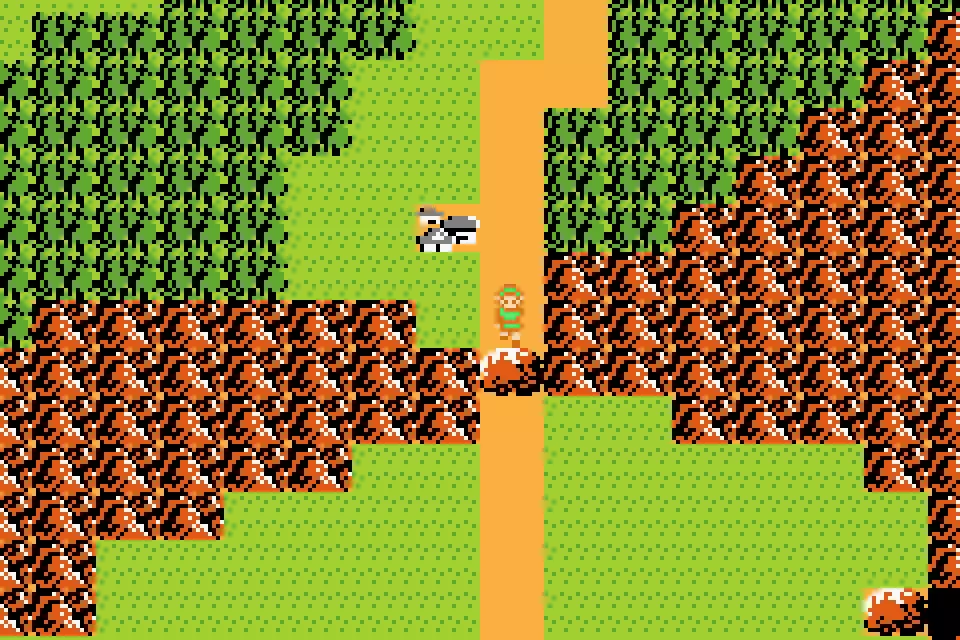
While older games seem difficult by today’s standards, The Adventure of Link was considered difficult even then.
“I remember one day when a client called me and said, ‘I just can’t defeat the final boss.’ Upon inquiring about his game progress, it became evident that he was fully equipped. This meant that he had to rely solely on his skills to overcome the challenging boss. It appeared as if he was playing on behalf of his son… and it evoked a sense of sympathy within me.”
Tadashi Sugiyama
The Adventure of Link made its debut in Japan on the Famicom Disk System in January 1987, followed by a worldwide release for the NES in 1988. Despite receiving a relatively cooler reception compared to its predecessor, the game managed to sell a total of 4.3 million copies. Although fans may not fondly remember The Adventure of Link and deem it less successful, this installment had a notable impact on the series’ development. It introduced lore elements that would later resurface in Ocarina of Time, as well as the inclusion of magic for progression and the introduction of items that would become integral to the entire series.
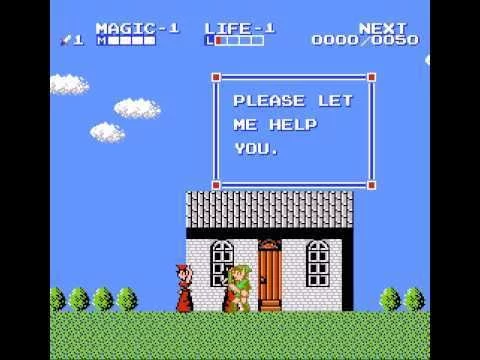
Similar to the first game, The Adventure of Link is also available for enjoyment on the NES/Famicom platform through Nintendo Switch Online.
The Legend of Zelda: A Link to the Past
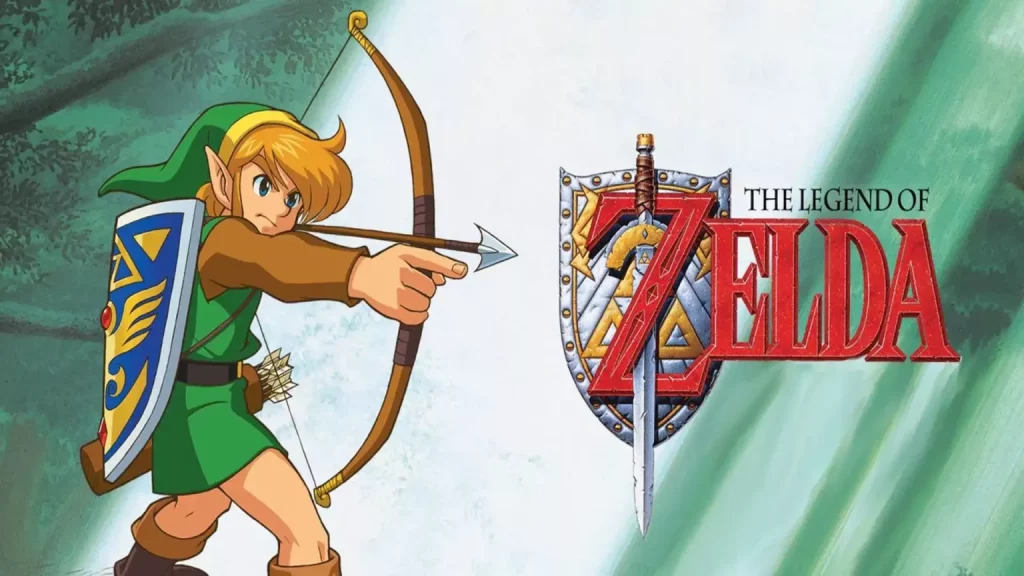
One year after the release of The Adventure of Link, in July 1989, a prototype of a new 16-bit console was unveiled to a select group of Nintendo developers. This console would later become known as the Super Nintendo Entertainment System (SNES). Immediately following the presentation, work commenced on two games simultaneously: sequels to Super Mario Bros. and The Legend of Zelda. However, the development of the new Zelda installment had actually begun earlier, predating the release of The Adventure of Link.
During the initial stages of development, Shigeru Miyamoto sought to identify the distinctive elements that set The Legend of Zelda apart from other similar games. He arrived at the conclusion that player freedom was a key factor. The ability to experiment with mechanics, explore different methods of interaction, and navigate a path to victory through personal mistakes, learning from and overcoming them. Alongside this realization, Miyamoto intended to expand upon the ideas of the previous entries, providing even more opportunities for interaction with the game world and granting greater freedom of action. Thus, the initial year of development was primarily dedicated to planning and gathering ideas.
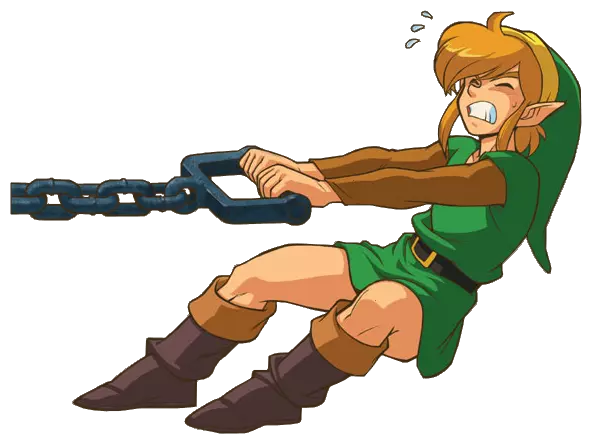
Following the introduction of the SNES prototype to the team, the experimentation phase kicked into high gear. The team actively sought to translate their ideas into the realm of the new hardware, with some concepts finding success while others did not. This is how the pushing mechanics from the first game evolved. In addition to granting players the ability to pull items and manipulate switches, the inclusion of the d-pad on the new gamepad enabled movement in eight directions, opening up vast opportunities for experimentation and exploration for both players and developers.
However, not all ideas found their footing. Alongside the surviving actions of “talk,” “push/pull,” “lift/throw,” and “run,” Miyamoto’s team experimented with actions like “dance” and “eat.” Ultimately, these ideas were abandoned, as was the possibility of diagonal sword strikes, which proved challenging for players to execute. Instead, the team opted to increase the attack range of the sword. They also explored the concept of weapon changes and combinations, such as the ability to combine bombs with a bow. Miyamoto insisted that Link always carry a sword and shield as part of his iconic image.
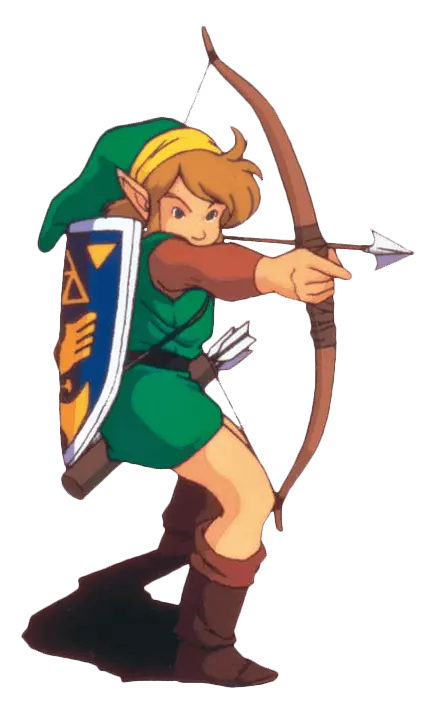
Simultaneously, the ideas that were not initially accepted were not entirely discarded, but rather kept in waiting for future implementation. One such idea was the concept of time travel, which gave Link his name in the first game, and it eventually emerged in A Link to the Past. However, in the early stages of development for what was originally referred to as Zelda III, the team discussed the possibility of traversing not only between the past and the future but among three distinct worlds that would intertwine and be influenced by Link’s actions. It was even contemplated that one of these worlds could be set in a science-fiction backdrop, adding an intriguing twist to the game’s narrative.
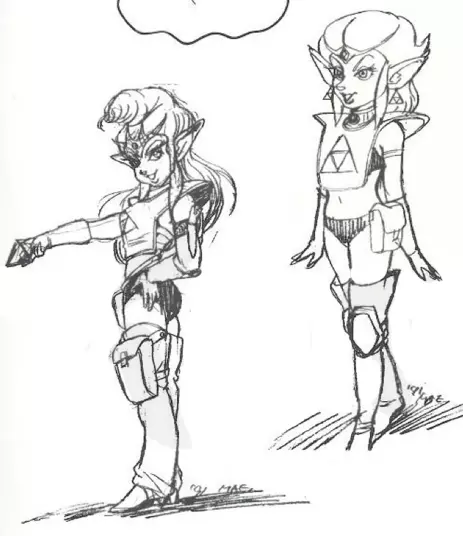
During the mid-stage of the game’s development, Tezuka expressed his concerns about the complexity and confusion that the concept of three worlds could create. As a result, the idea was set aside, and the number of dimensions was reduced to two. Meanwhile, Kensuke Tanabe, the game designer and producer of Super Mario Bros. 2, suggested the concept of traversing between the “World of Light” and the “World of Darkness.” Interestingly, this concept would go on to serve as the foundation for many installments in the series.
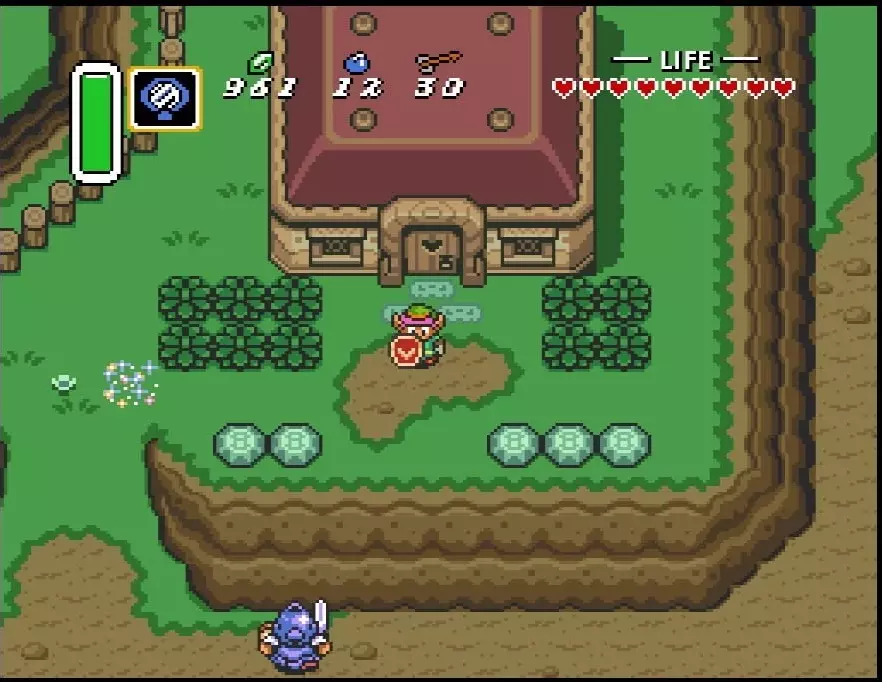
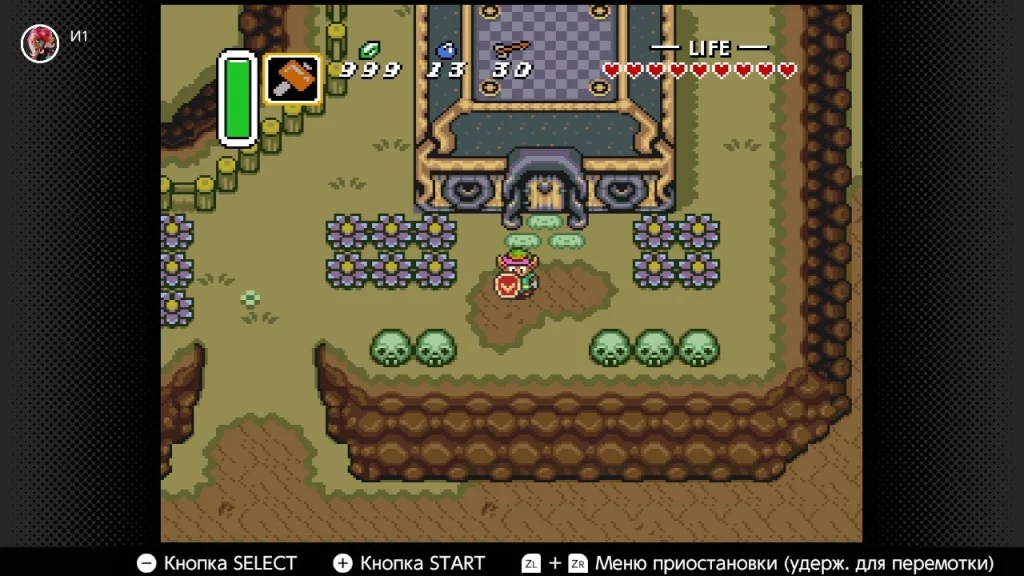
During the development of A Link to the Past, the team aimed to create an uplifting adventure that would resonate with Nintendo fans worldwide. As part of this goal, they embarked on redesigning Link’s image to give him a more mature appearance. However, Miyamoto emphasized the importance of maintaining a balance, ensuring that the hero didn’t appear “too cool and serious.” Consequently, Link retained elements of playfulness in his design, reflecting Miyamoto’s vision for the character.
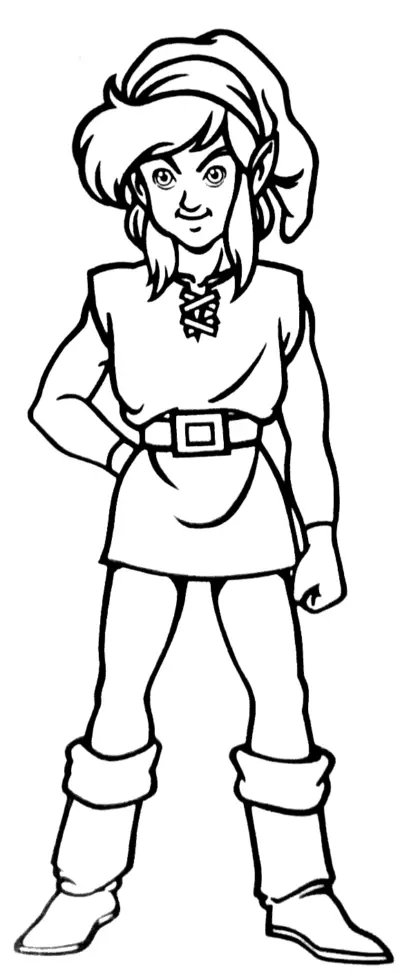
Also, it was in Link to the Past that the iconic “Master’s Sword” appeared.
Kensuke Tanabe came up with a truly memorable scene for the hero’s awakening when we began this project. In the heart of the forest, where sunlight filtered through the leaves, the Master Sword stood poised, awaiting the arrival of a worthy wielder. As light streamed through the foliage, Link drew his sword in a breathtaking moment.
Takashi Tezuka
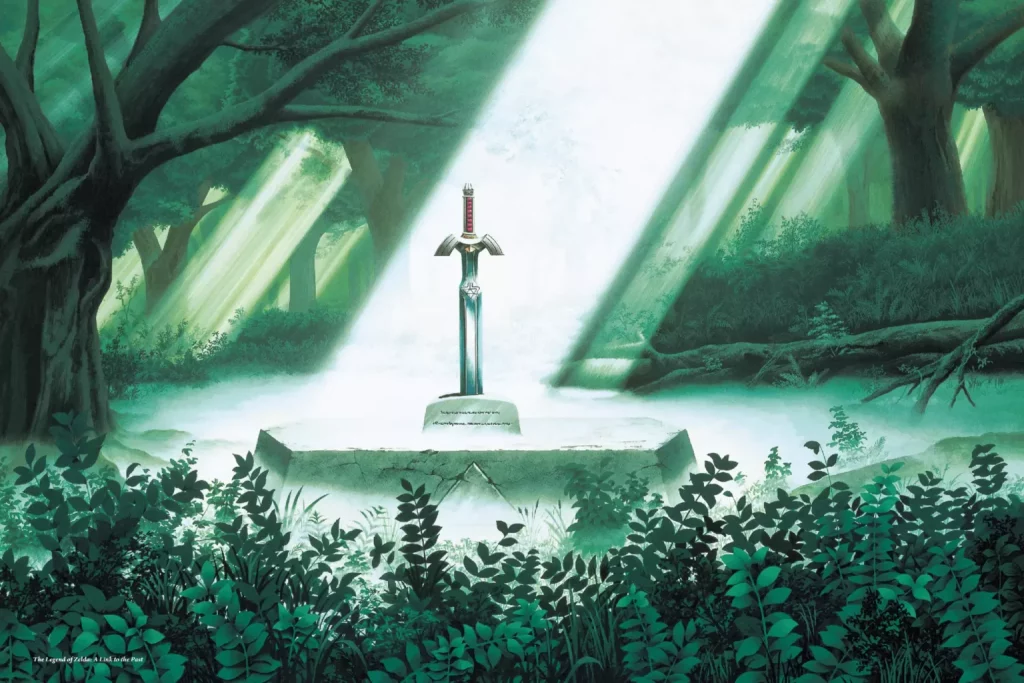
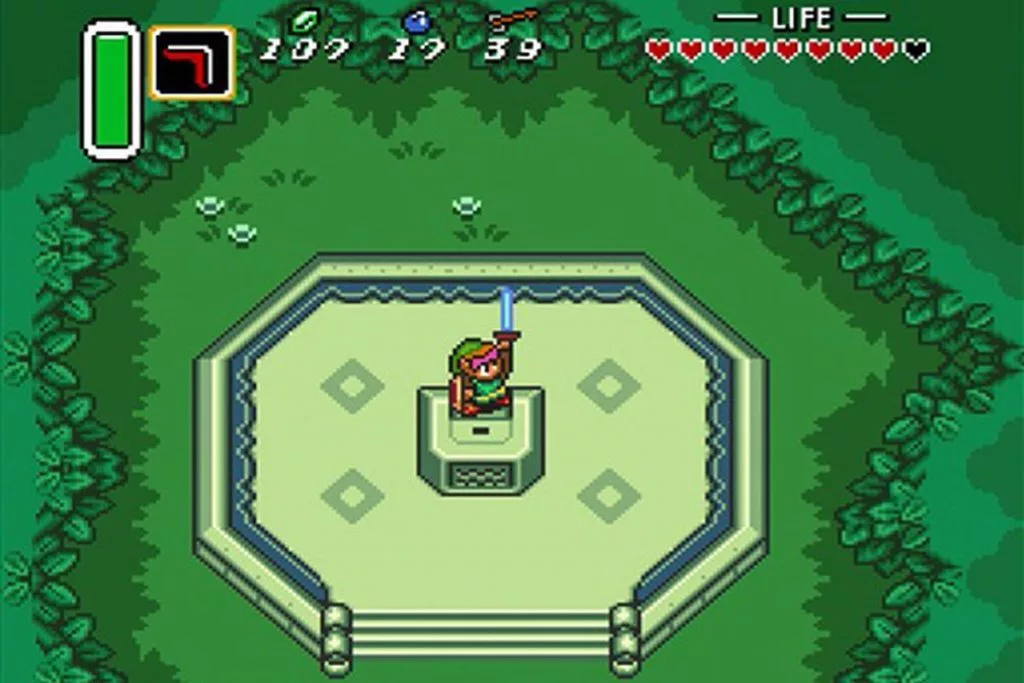
Alongside the introduction of the Master Sword, which has become a fundamental element of the series, came the concept of Link’s progression towards obtaining it. Unlike starting with the sword, Link embarks on a journey to acquire it, mirroring the player’s own path through the adventure. Originally, this path was envisioned to be non-linear, offering a unique experience to each player. However, due to console memory limitations and the complexities of game structure, this idea had to be abandoned, along with several other interactive elements in the game world, such as the ability to burn grass. Nevertheless, these ideas would find their realization in future installments of the series.
At that time, our game designers had a solid understanding of the capabilities of the equipment, so unexpected ideas were not a major concern. However, despite this, we faced a significant challenge with limited memory space, and I distinctly recall the diligent efforts of our engineering team to optimize the game.
Takashi Tezuka
Interestingly, the development team started off quite small but gradually expanded as we approached the game’s release. This was done to effectively utilize the available personnel and avoid creating a team larger than necessary. Each new member brought their unique influence to the game, shaping its overall outcome. One notable addition was Yoshiaki Koizumi, one of the game’s writers. Being a graduate of Osaka University of the Arts, where Tezuka also studied, Koizumi had a strong interest in storytelling. He believed that video games had the potential to create more dramatic narratives than books and films, which led him to join Nintendo.
Koizumi’s passion for storytelling through gameplay is clearly reflected in A Link to the Past. He aimed to convey the story through the visual imagery of the characters and the game world, allowing players to immerse themselves in the narrative experience.
What’s amusing is that during that time, it seemed like many people didn’t fully grasp the meaning behind most of the game’s elements. Therefore, I had to develop the story and other details while simultaneously working on the game manual. This included creating the designs of the goddesses and their corresponding star signs.
Yoshiaki Koizumi
However, originally, despite its storyline, The Legend of Zelda was not titled “A Link to the Past,” but rather “Triforce of the Gods.” This was the name under which the third installment of the series was released in Japan in November 1991, one year after the SNES launch. However, for its release in the Western market, Nintendo of America decided to rename the game to a more familiar variant, aiming to avoid any potential religious connotations. As a result, several characters and their dialogue had to be modified, and symbols resembling Egyptian hieroglyphs were removed from the game’s alphabet.
Furthermore, it was with this series that the recognizable logo of The Legend of Zelda started being used. Interestingly, this logo was specifically designed for the Western release by a design studio based in Seattle. Subsequently, it became the logo used for the Japanese market versions as well.
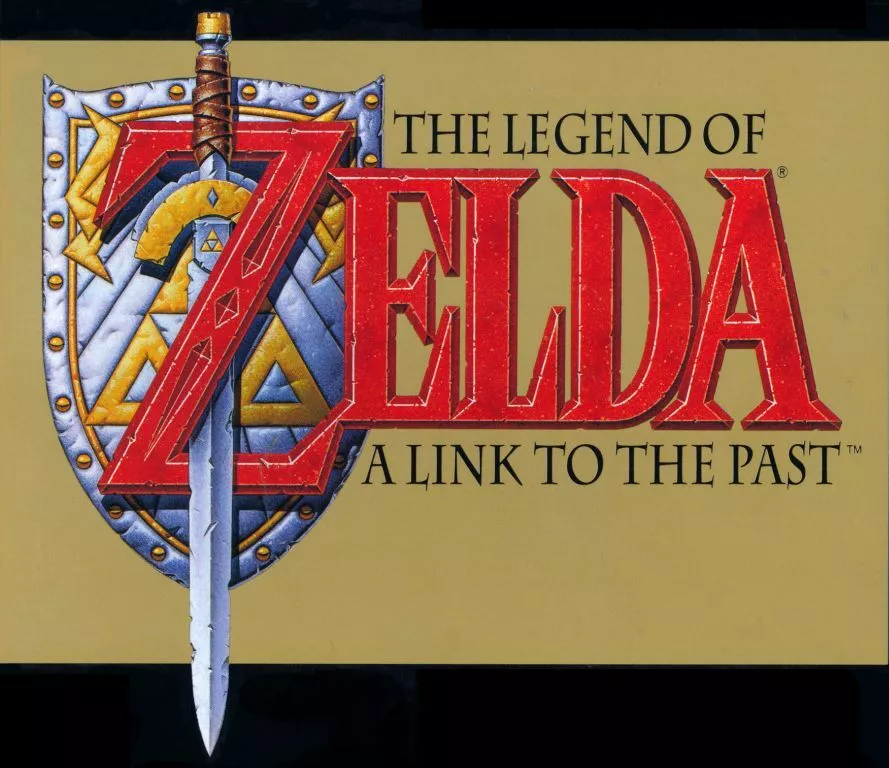
A Link to the Past is currently available on the SNES for Nintendo Switch Online.
Eiji Aonuma: From Woodcarving to Game Design
Building on the success of the NES and SNES, Nintendo actively sought out new talented designers, not necessarily limited to avid gamers. Alongside the aforementioned Kensuke Tanabe and Yoshiaki Koizumi, who made substantial contributions not only to The Legend of Zelda series but also to Nintendo’s overall game design philosophy, Eiji Aonuma joined the development team after the release of A Link to the Past.
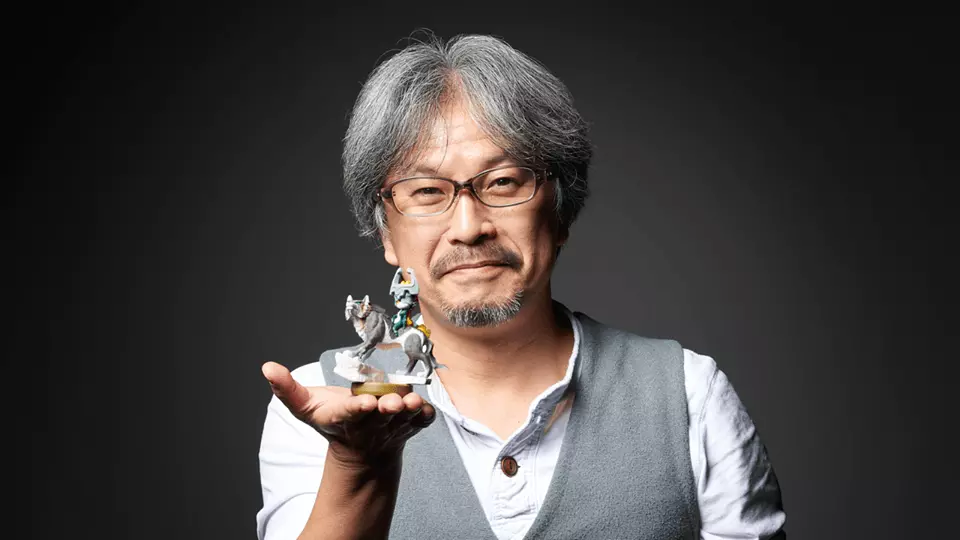
In contrast to many other Nintendo employees, Eiji Aonuma did not graduate from Osaka University of the Arts but from the Tokyo National University of Fine Arts and Music, where he earned a master’s degree in compositional design. During his studies, Aonuma also explored the world of Japanese karakuri dolls. Coming from a family of carpenters, he developed a deep-seated love for crafting objects from wood. This passion for woodworking was so strong that he personally handcrafted nearly all of his childhood toys.
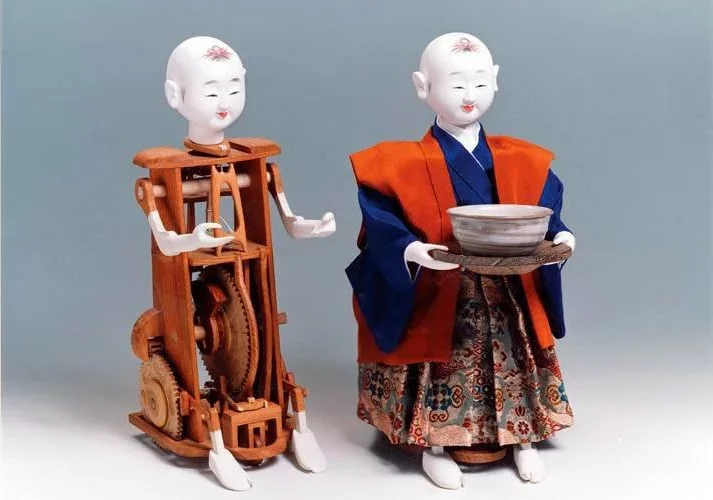
This talent for woodcarving led him to pursue studies at the university. It was during one of his exhibitions, where he showcased his mechanical dolls, that he caught the attention of Yoishi Kotabe, an animator and character designer who also graduated from the same university. Kotabe, known for creating the iconic packaging for Super Mario Bros., was working at Nintendo at the time. This piqued Aonuma’s interest, even though he had never played video games before.
Upon Kotabe’s recommendation, Aonuma had the opportunity to personally interview with Miyamoto, the renowned game designer. Impressed by Aonuma’s work, Miyamoto hired him as a graphic designer at Nintendo, specifically for the NES Open Tournament Golf. It was through this experience that Aonuma’s journey into the world of video games began. In order to familiarize himself with the medium he was working in, Aonuma enlisted the help of his girlfriend, who taught him how to play. Thus, his first gaming experiences involved Dragon Quest and The Portopia Serial Murder Case.
I stayed up all night to play, and she [Aonuma’s girlfriend] was always there, coaching me with words like “You need to go five steps south” and “Now go east four steps.”
Eiji Aonuma
As time passed, Aonuma grew to appreciate video games and developed a special fondness for Link to the Past, which served as inspiration for his own game, Marvelous: Another Treasure Island, released in 1996. Following his debut as a game designer, Miyamoto extended an invitation to Aonuma to join the development team for a new installment of The Legend of Zelda for the upcoming Nintendo 64.
The Legend of Zelda: Link’s Awakening
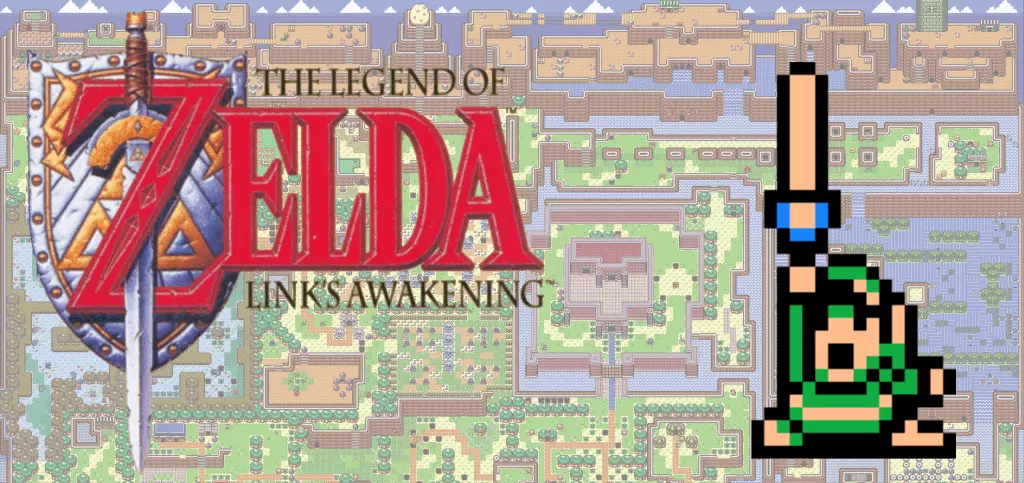
However, the next chapter in the series took a completely different turn. Alongside the development of the SNES, another team at Nintendo released the Game Boy in 1989. Initially, there were no plans for them to create their own installment of The Legend of Zelda. However, some developers from the Zelda team couldn’t help but fantasize about the possibilities. One such developer was Kazuaki Morita, the lead programmer of Link to the Past. After the release of that game, Morita obtained a Game Boy devkit and began experimenting with it as a personal side project, creating a prototype inspired by the Zelda series.
We didn’t really plan to make The Legend of Zelda for the Game Boy, but we thought about trying this console in action. So, initially, there was no official project. We just did our job during regular office hours and then worked on it like in a club after school.
Takashi Tezuka
After assessing the capabilities of the console, Tezuka proposed the idea of porting Link to the Past to the Game Boy and requested a second Game Boy devkit to work on the project. Joining the development team in the middle of the process, Tezuka aimed to introduce fresh innovations that were previously unattainable. However, as new ideas started to emerge, the Game Boy adaptation evolved significantly, transforming from a simple port into a fully-fledged game in its own right.
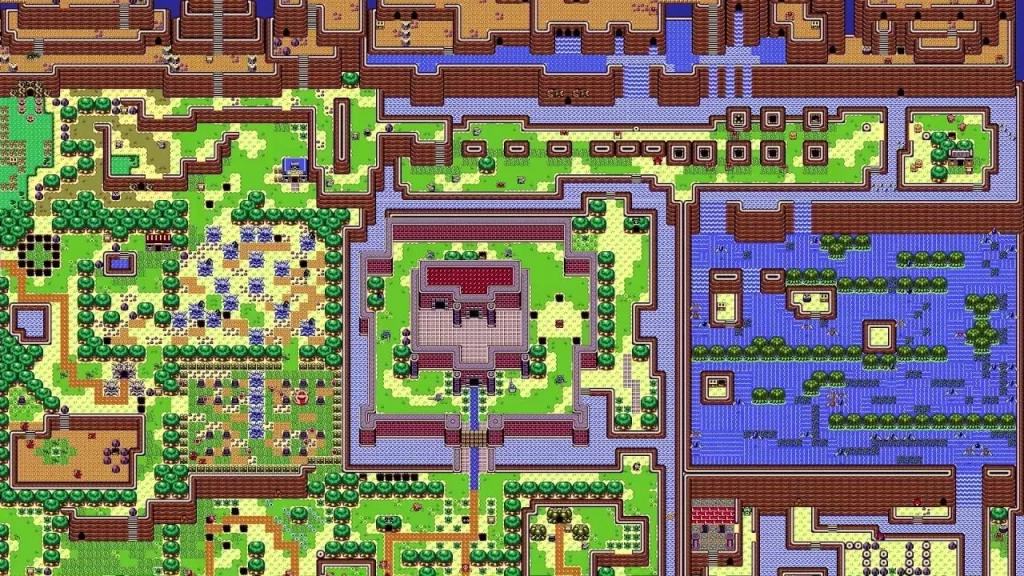
Consequently, Kensuke Tanabe came on board as the character and world designer, while Yoshiaki Koizumi took charge of the script and intro cinematic. Additionally, Tezuka, inspired by David Lynch’s Twin Peaks, aimed to capture a similar atmosphere and scope within the game. He envisioned a dramatic narrative set in a small town, featuring enigmatic characters. With this in mind, he established a set of plot requirements: no inclusion of Zelda herself, no Triforce, and no Hyrule.
Shigeru Miyamoto instructed game designers to focus on fun and intuition, so Mario and The Legend of Zelda didn’t have much storytelling before. However, during the development of Link’s Awakening, Miyamoto was busy with other projects and left the team creative freedom. This was taken advantage of by Koizumi, who has long viewed video games as a great way to tell unusual stories.
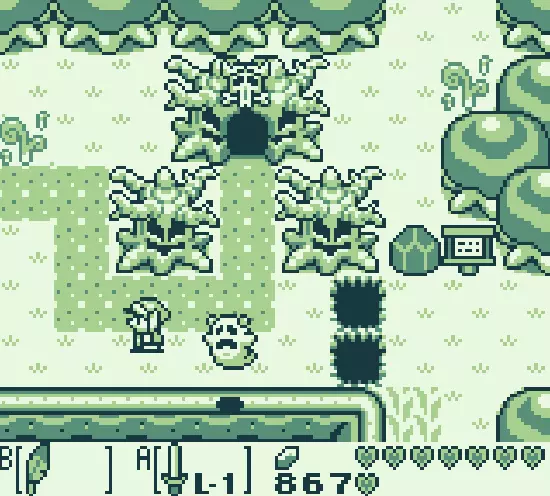
The development of Link’s Awakening felt like an exciting journey undertaken by a team of Morita, Koizumi, Tanabe, and Tezuka, venturing beyond the expectations of a traditional Zelda game. They shifted their focus towards character development, side events, and quests, aiming to constantly surprise the player and push the boundaries of the game’s setting. As a result, NPCs from other Nintendo universes made unexpected appearances in the game, sometimes even without the knowledge or permission of their original creators.
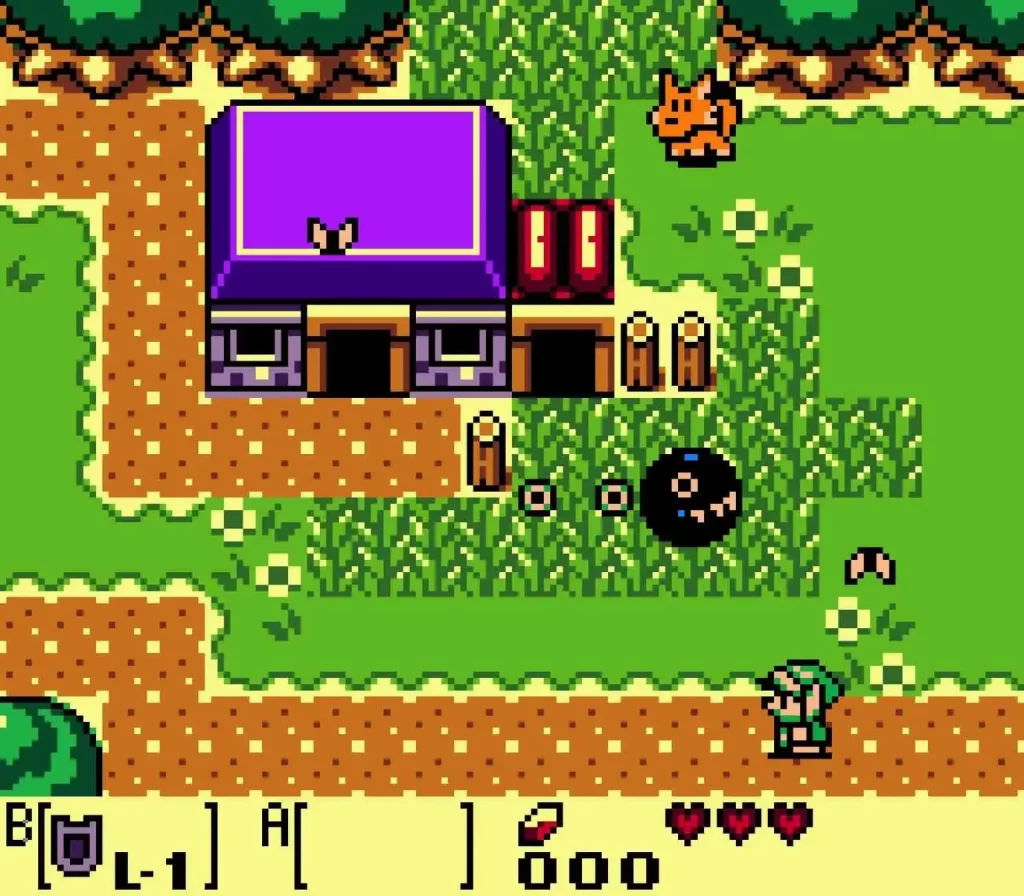
The team’s experimental approach yielded surprisingly unexpected results. Unbeknownst to them at the time, they laid the groundwork for many elements that would become integral to the series with this game. From enigmatic characters to the inclusion of fishing, which Morita added almost covertly due to his passion for angling, these elements became defining features of the series moving forward.
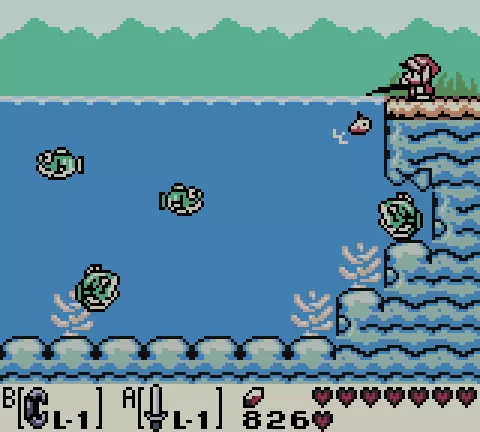
Link’s Awakening was launched globally in 1993 and received positive reviews from critics. The original game has sold 3.83 million copies to date, while the DX version has sold 2.22 million copies. In 2018, a remake was released on the Nintendo Switch, which retained the essence of the original game while making a few changes, such as removing the photo quest. Overall, the remake stayed true to the original experience.
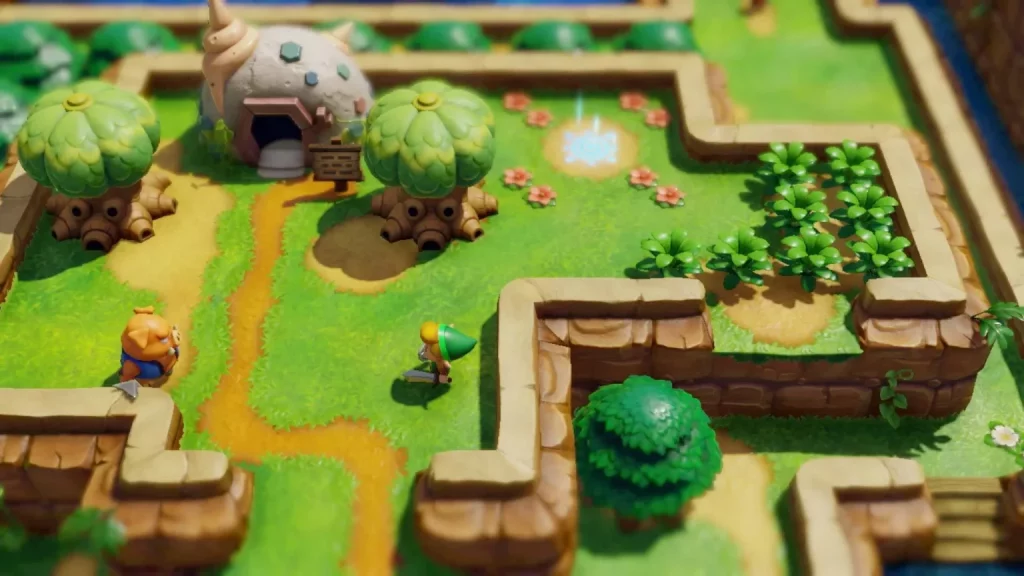
The Legend of Zelda: Ocarina of Time
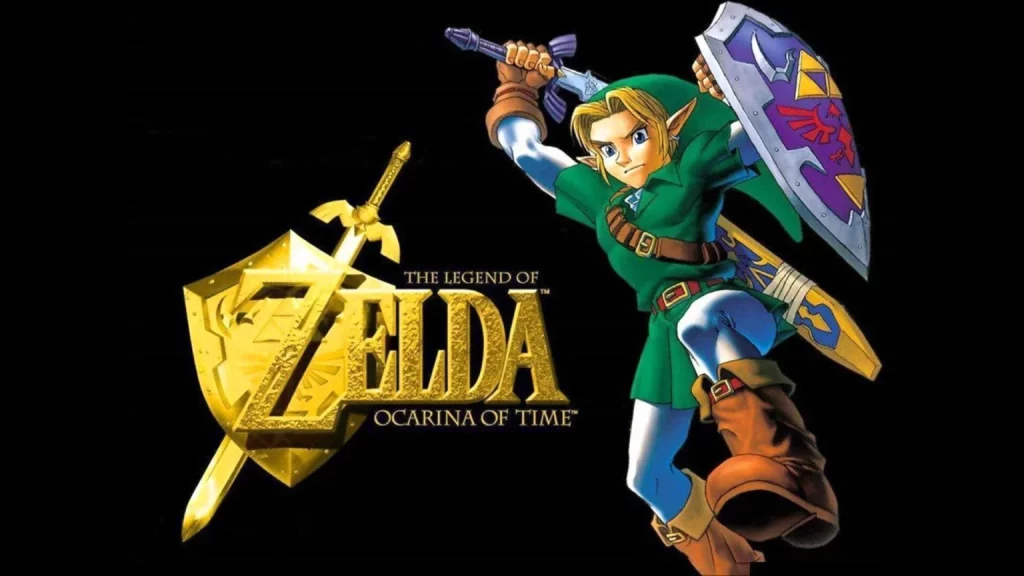
However, there was another significant event that solidified Ocarina of Time’s place in history—the attempted remake of The Adventure of Link on the SNES. Miyamoto and Koizumi had the idea to create a new version using polygon graphics and experimented with a side-view perspective. Unfortunately, this remake never materialized, and both of them moved on to other projects. Nevertheless, they left the development team with the concept of a new Zelda game focused on sword fights.
In 1995, Nintendo unveiled their new console, the Nintendo 64, which promised to introduce a third dimension to games that were previously confined to two dimensions. While Super Mario 64 was set to be the console’s flagship title, Nintendo also had plans to release a 3D version of The Legend of Zelda. During the same year, at the Nintendo Space World event, a tech demo featuring Link was showcased. This demo showcased real-time 3D polygon rendering on the Nintendo 64 hardware and was created by Giles Goddard, who had previously worked as a programmer on Star Fox for the SNES and designed Mario’s interactive face for the Super Mario 64 start menu. Yoshiaki Koizumi, who had already gained recognition, and Takao Shimizu, one of the game directors for Donkey Kong on the Game Boy, were also involved in its creation. However, Shimizu was reassigned to work on Star Fox 64, and Toru Osawa, the game designer for Kid Icarus and a designer for the Metroid and Fire Emblem series, took his place.
A year later, the Nintendo 64 console was released with Super Mario 64 as its flagship title. Miyamoto, Tezuka, and Koizumi, having gained valuable experience in developing a three-dimensional game, were inspired by the positive reception of their new game from both critics and players. Encouraged by this recognition, they returned to the Legend of Zelda teams and began to collaborate with Osawa on their new project.
Similar to the first installment of The Legend of Zelda, the new game required additional hardware alongside the main console. In this case, the 64DD was introduced—an extension that provided additional RAM and storage capacity. Initially, the plan was to make extensive use of this module in the new Zelda game. Early experiments included features such as felled trees and character footprints. The game was developed on the Super Mario 64 engine with modifications to suit the needs of the Zelda franchise.
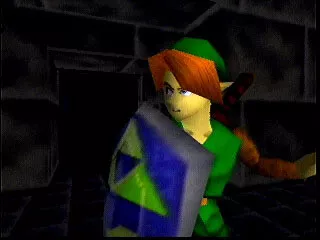
During the initial stages of development, the team embarked on various concepts and ideas. One of Miyamoto’s early proposals involved confining the entire game within the castle walls, where players would transition between a first-person perspective and a side view reminiscent of The Adventure of Link. However, Koizumi, who had invested significant time and effort into animating Link, opposed this idea and advocated for the character to remain on-screen at all times. Additionally, the limitations of the 64DD in terms of data reading capabilities forced the team to abandon its use. This posed another challenge as the developers now had a significantly reduced amount of available memory to work with.
Yet, the most significant hurdle the team faced was implementing 3D combat. They struggled for an extended period to find a suitable camera angle that would enhance gameplay. The unexpected solution to this dilemma came from an unlikely source—the Toei Kyoto Studio, a theme park and film set known for its Edo period settings.
As a result of this production, the team conceived the concept of Z-targeting—a capture-focused system on a single object that enables the continuous inclusion of both the object and the hero within the same camera frame. This innovative approach serves as an alternative to manually controlling the camera. Additionally, the team members gained valuable insights into creating exhilarating and intense sword fights by introducing sequential enemy attacks instead of simultaneous ones.
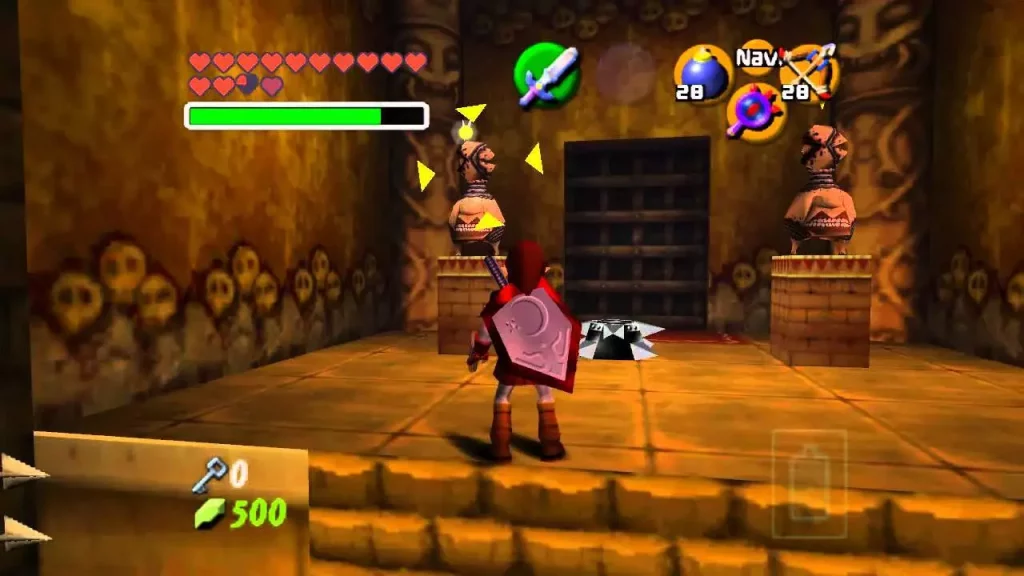
In conjunction with the concept of Z-targeting, the team successfully implemented an idea that had been discarded during the development of Link to the Past—an NPC companion. While designing the locking marker to designate the target for grappling, Koizumi created a fairy-shaped marker which he named Navi, short for “navigator.” This not only brought one of Miyamoto’s ideas to life but also unexpectedly addressed the issue of memory optimization. The team decided to assign each character in Link’s village their own fairy, represented by a simple round model. Consequently, only the fairies were displayed on the map beyond the visibility zone, and the models of the characters associated with them were loaded as required. This concept was further developed into the storyline, where “Link is a boy without his fairy.”
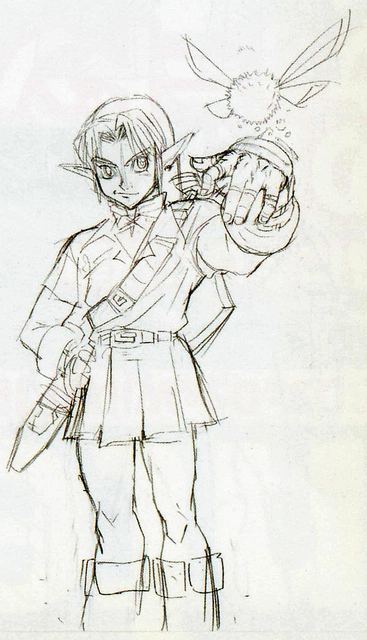
During the course of development, the game’s ideas multiplied, fueling both the team’s ambitions and its size. Interestingly, certain concepts were initially intended for Super Mario 64, while others were envisioned for The Legend of Zelda. As a result, the castle in Mario was borrowed from Zelda, while one of Ocarina of Time’s iconic symbols, Epona’s horse, was originally intended to make an appearance in Mario 64. The team even considered bringing in a real horse to the studio to create a model and capture animations, but they ultimately found a solution by utilizing photographs instead.
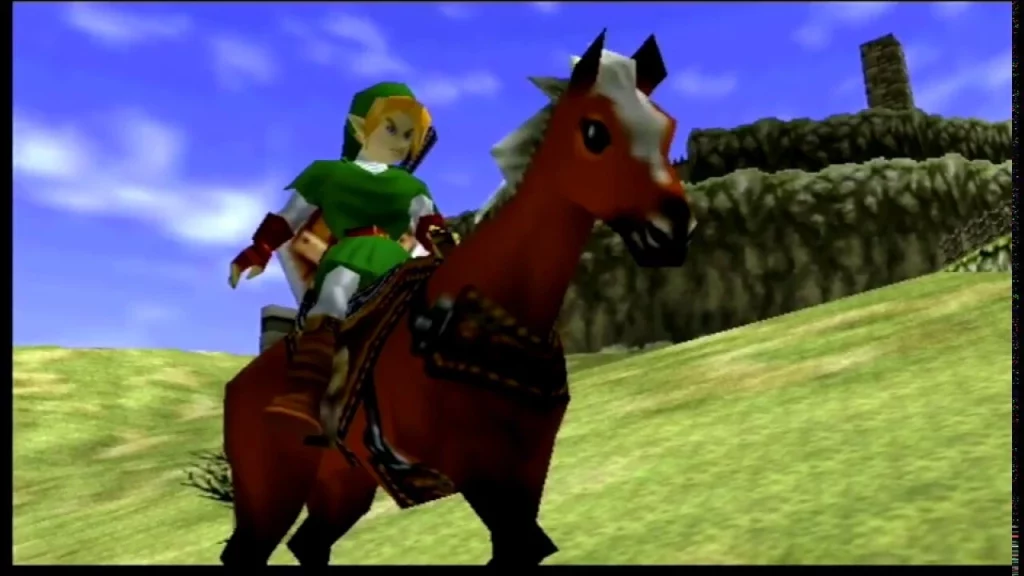
With the introduction of horseback riding mechanics, the need for suitable locations arose. This led to the creation of the Khairul Field zone, which served as the central hub on the world map. However, many felt that the location appeared too empty given its size and decided to address this issue, albeit in an unexpected manner.
Another aspect of significant attention was given to Link’s character model. The team aimed to make him appear “convincingly alive.” Similar to The Adventure of Link, Link was depicted as an adult, but Koizumi, influenced by his wife’s request, made him appear more aesthetically pleasing by removing his sideburns, refining his nose, and even giving him pierced ears for a more striking appearance. However, the team soon realized that this “too cool” version of Link did not align with Nintendo’s established style, so they opted to keep his classic attire.
Nevertheless, Miyamoto remained dissatisfied with the notion of “yet another cool hero” and desired for Link to retain a “childish and playful” quality, similar to previous installments. This eventually led to the idea of creating a younger version of the hero. Following Miyamoto’s suggestion, Koizumi began experimenting with the same animations on two distinct character models. Thus, the concept of time travel, triggered by obtaining the Master Sword, emerged as a significant plot device.
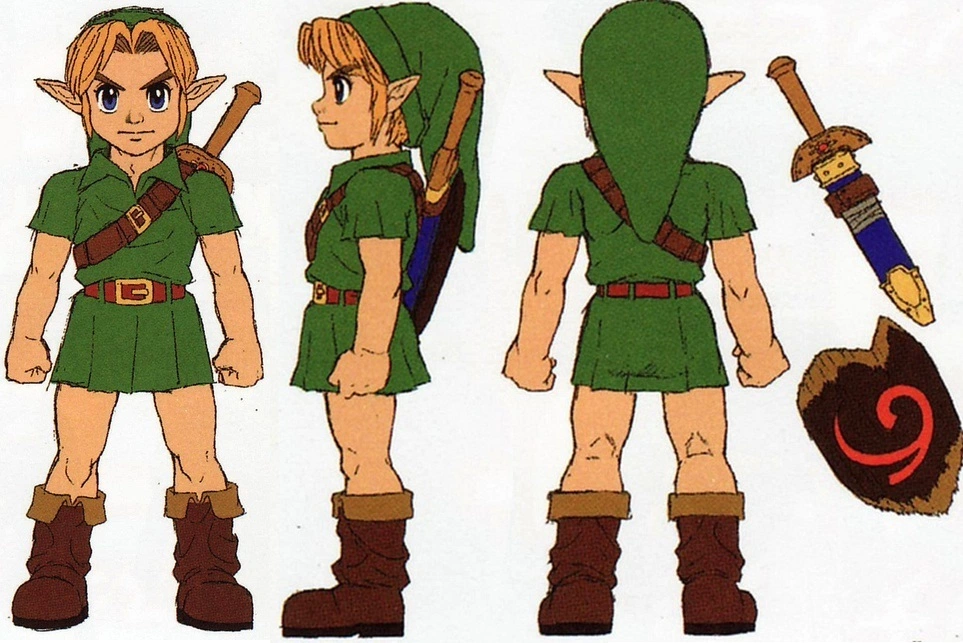
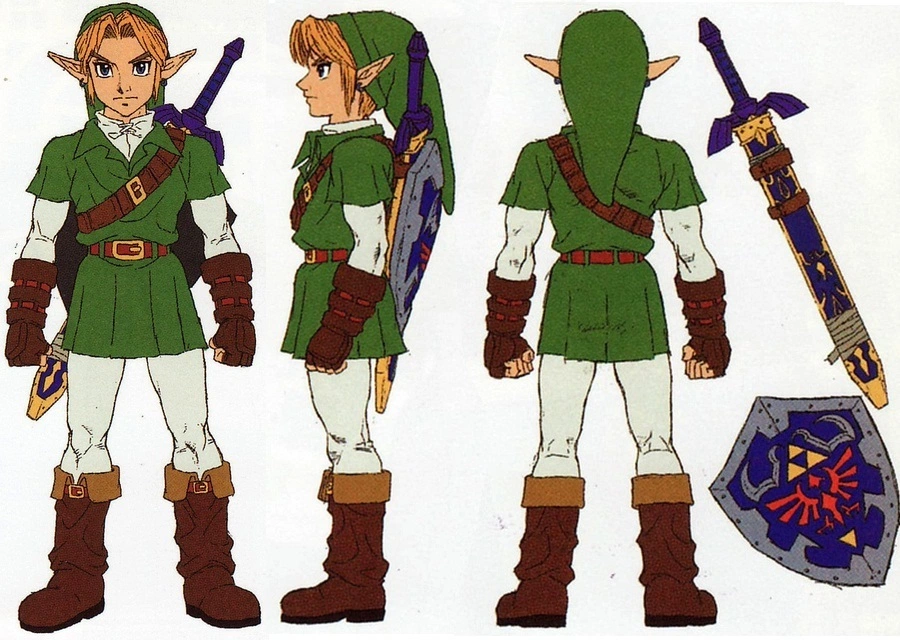
During the transition to the realm of three-dimensional gaming, the design of dungeons posed significant challenges for the team. However, Aonuma’s unique talent as a puppet maker proved to be invaluable. Despite his lack of prior experience in this particular domain, he showcased his skills by crafting intricate and dynamically evolving temples and tombs for the game. His expertise in creating complex and ever-changing structures allowed him to overcome the obstacles associated with designing this crucial element of the series.
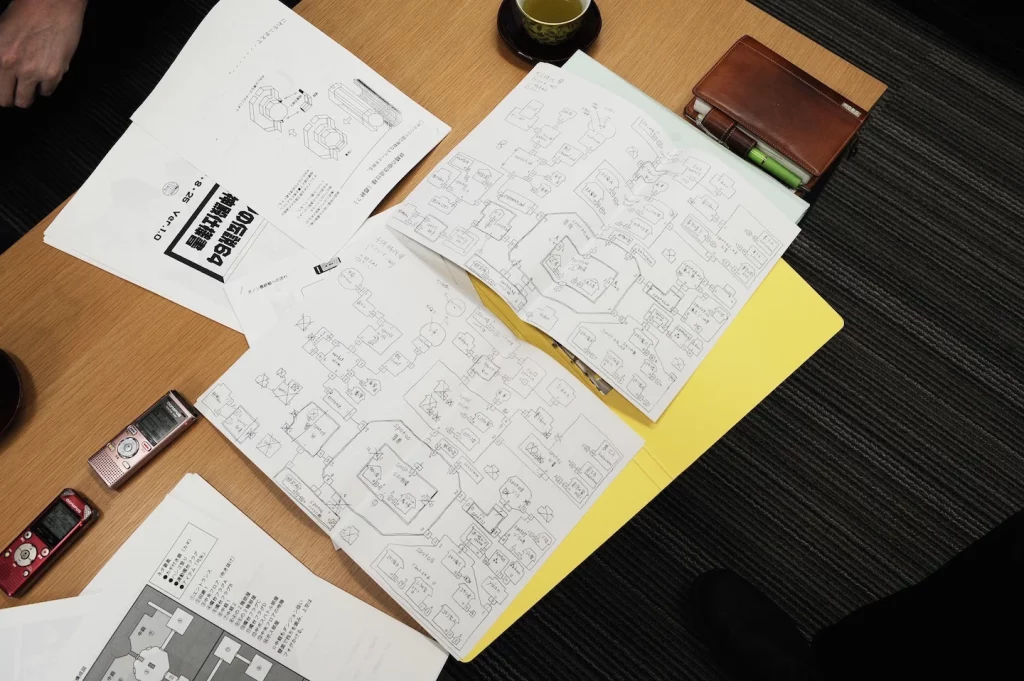
Assisting Aonuma in the creation of dungeons was Kazuaki Morita, a programmer who had previously contributed to Link’s Awakening. While working on the Temple of Water, Morita came across a pool-like reservoir and happened to have a fish model at his disposal. This fortuitous discovery led to the inclusion of the fishing mini-game in Ocarina of Time. However, Morita aimed to enhance its complexity compared to previous iterations, going so far as to personally record all the accompanying sounds for this mini-game. His dedication and creative input contributed to the immersive fishing experience found within the game.
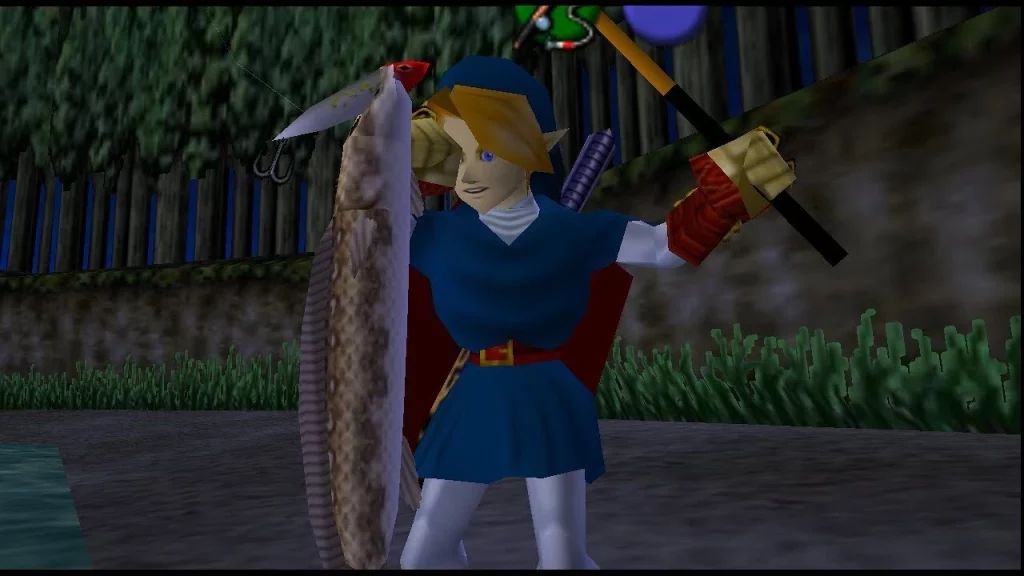
As development progressed, Ocarina of Time expanded in both size and attention to detail. Miyamoto’s vision for maximum world interactivity was embraced by the team, who meticulously worked on even the smallest elements, such as the angle of tree cuts during different attacks. This dedication to detail permeated the game, from its characters to its narrative. The entire creative team behind the experimental Link’s Awakening project joined forces for Ocarina of Time, resulting in various cameos, including the owl Kapor Gabor and Talon with Malon, now named Taryn and Marina.
In November 1998, Ocarina of Time was released amidst fierce competition between the Nintendo 64 and the PlayStation consoles. It served as a pivotal release for Nintendo, although it did not alter the console’s market position significantly. However, the game garnered a devoted following among players and achieved cult status, selling 7.6 million copies. Beyond its impact on The Legend of Zelda series as a whole, Ocarina of Time revolutionized the 3D action-adventure genre, solidifying its reputation as the highest-rated game of all time according to Metacritic.
In addition to the original Nintendo 64 version, Ocarina of Time received a GameCube port (which we’ll discuss shortly) and a 3DS remake. The 3DS remake featured redesigned controls utilizing a second screen to display the map and additional item buttons. It also boasted updated graphics with stereoscopic 3D support and introduced gyroscope-based camera control. While minor changes were made to the game world to improve the completion of challenging tasks, the essence and core gameplay of Ocarina of Time remained intact.
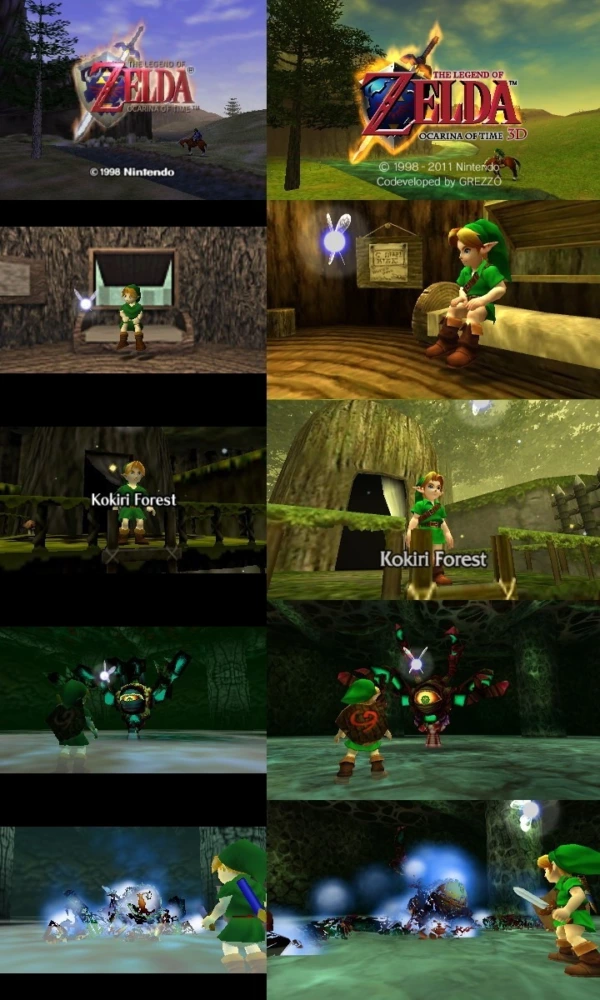
The Legend of Zelda: Majora’s Mask
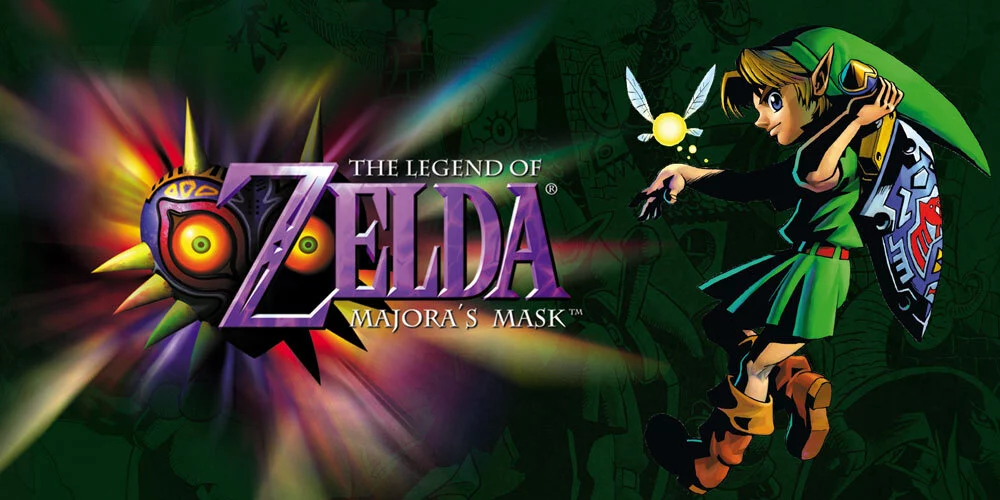
After the release of Ocarina of Time, Nintendo realized one important problem: with the advent of new technologies, development has become dramatically expensive, labor-intensive, and time-consuming. At the same time, the expectations of the players for the upcoming games grew with each new release. At the same time, Nintendo lost many third-party developers who had previously made games for their consoles due to the advent of the PlayStation, and the company was faced with the need to support the Nintendo 64 mostly in-house, at least until the new console appeared.
As a result, Miyamoto decided that the company needed to make more games on a smaller budget than the previous two console flagships. And, most importantly, faster.
I feel that in such a bad atmosphere, Nintendo will not be able to do something new. I never thought about it before. So now we are changing ourselves into an organization that will help people do new things and energize themselves. I tell my employees that from now on, we will make games that are developed in six months and sold in the millions. If you want to finish them in six months, then you need to stay within two, because the other four will be spent on revision and debugging. If someone asks me who is capable of this, I will answer that I have already done so. It’s not good to spend three years on development. Ocarina of Time could have ended earlier if a few moments had been omitted.
Shigeru Miyamoto
Since Ocarina of Time was originally planned for the 64DD add-on, which was eventually finalized only on the eve of 2000, Nintendo planned to add support for it to the game with some modifications, much like they ported Link’s Awakening to the Game Boy Color. Thus began the project “Ura Zelda” (something like “The Other Zelda”, but interestingly, the character for “Ura” can mean “the other side” and is also used in the word “betrayal”), which was supposed to be a reworking of the dungeons of the original Ocarina of Time with minor changes and the closing of the remaining plot threads. Eiji Aonuma became the head of the project.
However, Aonuma got tired of redoing his own work and instead began to make new dungeons. He later asked for permission to create an entirely new game. And he got the go-ahead, provided that he could do it in a year. Ura Zelda has been postponed for a while. Spot.monster.
It’s a shame when it takes 3 years to make a game. And I thought, why don’t we do it in 1 year? I wanted to say “We can do it too!”. I figured if we just use the Ocarina of Time engine and add a new script on top of it, we can make a pretty big game in 12 months.
Shigeru Miyamoto
At the time, Yoshiaki Koizumi was working on a board game that involved time travel, inspired by the movie Run Lola Run. One week elapsed in game time, but the player could complete it in an hour by manipulating time. The idea was to create a compact game with great replay value. But the game was canceled and Miyamoto invited Koizumi to join Aonuma with his new Zelda.
So the responsibilities in the team were divided. Aonuma was responsible for producing and developing the game’s world, while Koizumi took over the development of side quests and characters. The screenwriter was Mitsuhiro Takano, who previously worked on Star Fox 64. Gradually, this project was given the name “Zelda Gaiden” (something like “Zelda Side Story”). Aonuma and Koizumi used the concept of that canceled board game, creating a three-day system similar to Groundhog Day in the process. In their idea, this would allow for a game that takes place in one location with fewer dungeons, but at the same time with much more depth and replay value. Instead of a long journey, give an intimate story about one city and its inhabitants.
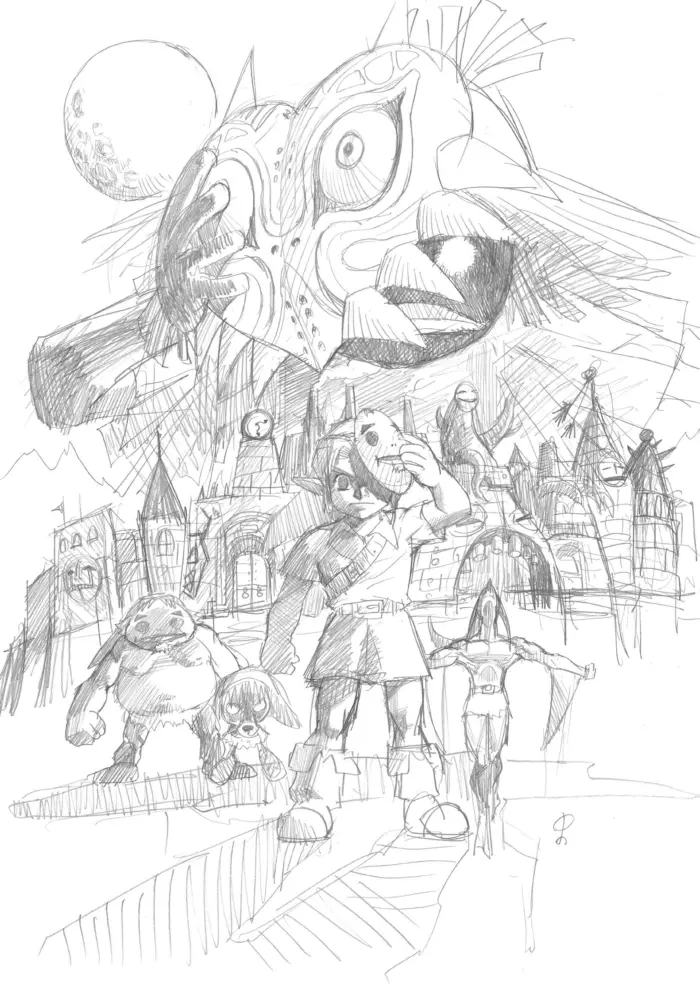
This time, the influence of Twin Peaks was felt much stronger. The team originally wanted to make a truly dark Zelda. And this was constantly reflected in various elements of the game during development. So, for example, artist Yusuke Nakano made key art in the style of American comics—with dark, strong shadows that emphasize the tone of the game.
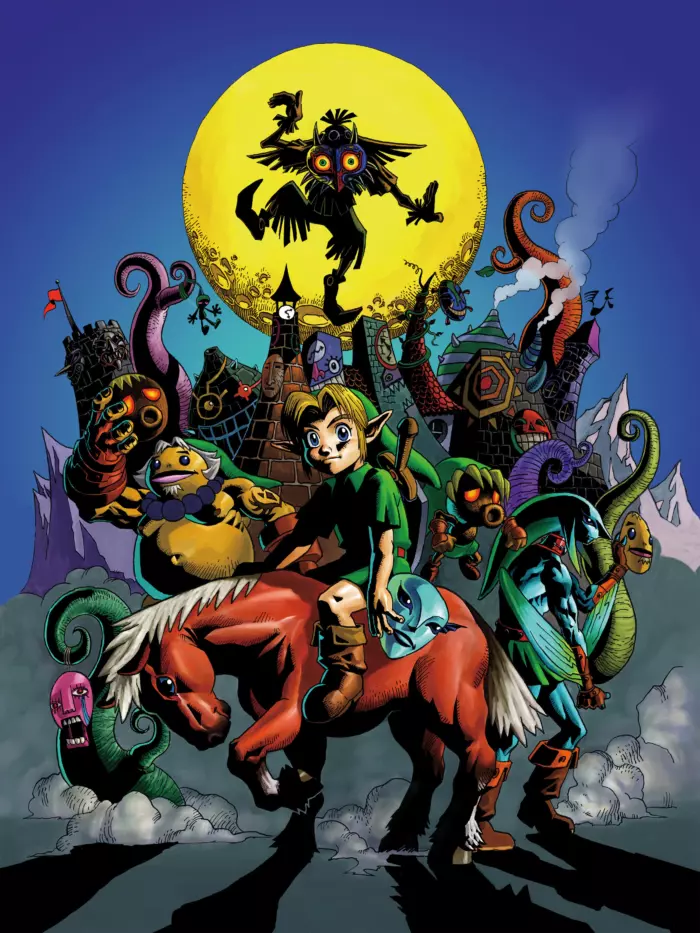
The development of Ocarina of Time was so long that we could add a lot of different things to it. But of these, there were those that were not used to their full extent or were practically not used at all. The mask seller, for example, So in Majora’s Mask, we felt it would be fun if Link would transform every time he put on the mask. At the core of The Legend of Zelda games, you use items to do things, and we thought it would be interesting if Link gained abilities from masks. We felt it would expand the gameplay. Therefore, we made the game so that to fly in the air, you had to turn into Link’s Deku, Link’s Goron to ride on the ground, and Link’s Zora to swim underwater. We also gave each of them a storyline. Once we came up with the idea of masks, everything fell into place.
Eiji Aonuma
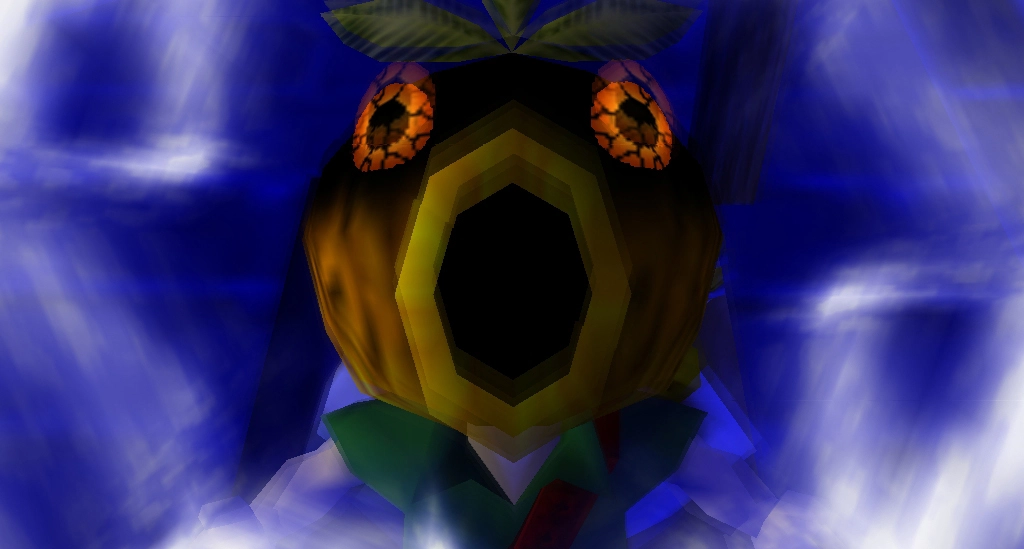
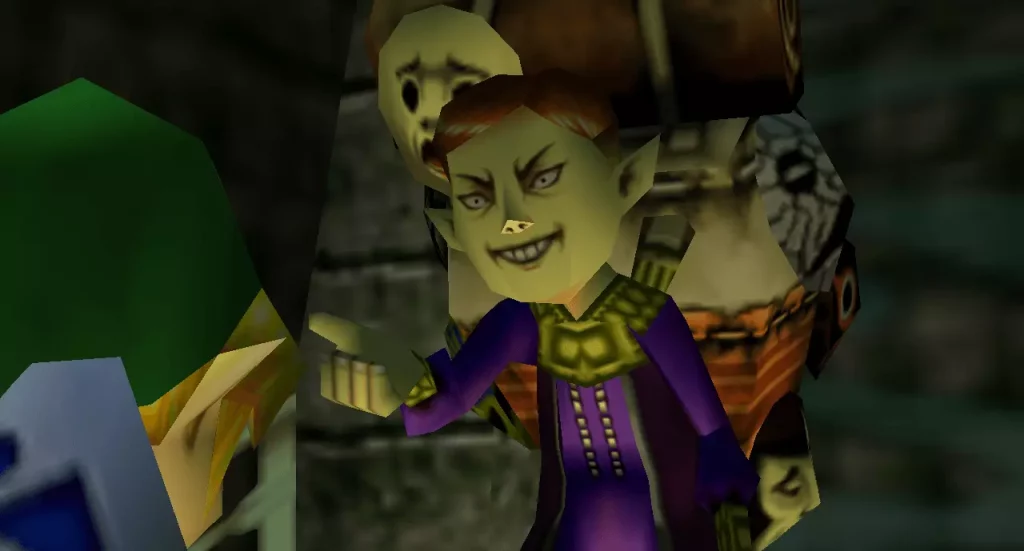
Zelda Gaiden, later called Majora’s Mask, was intended to be “challenging”. Unlike in the “comfortable” Ocarina of Time, the difficulty has been increased in the new game. The team believed that Majora’s Mask would be for those who played the previous part, which means that they could challenge the player’s skills.
Although it was originally planned to make Majora’s Mask a small team of 50 people, it quickly became obvious that they could not cope in a year. So Miyamoto and Aonuma started recruiting other members of the Ocarina of Time team until they ended up getting them all back together. They also once again abandoned the use of 64DD, which again turned out to be not ready on time. Instead, they used the Expansion Pack, a small console add-on that doubled the amount of available RAM.
In 1999, Majora’s Mask was first shown at the Nintendo Spaceworld event. At that time, the game was 50% ready, but with all the implemented gameplay features. At the same time, Miyamoto announced that Ura Zelda was still in development and would be compatible with the 64DD. However, this version of Ocarina of Time never saw the light of day.
Interestingly, later researchers found early builds of Ura Zelda and even tried to finish them. There were two attempts: Legend of Zelda: Ocarina of Time (URA by ZethN64) in 2013 and Project ARUZ by Alex S and GBATemp users. The first was eventually officially canceled, and the second has not been updated since 2018, but there are some developments.
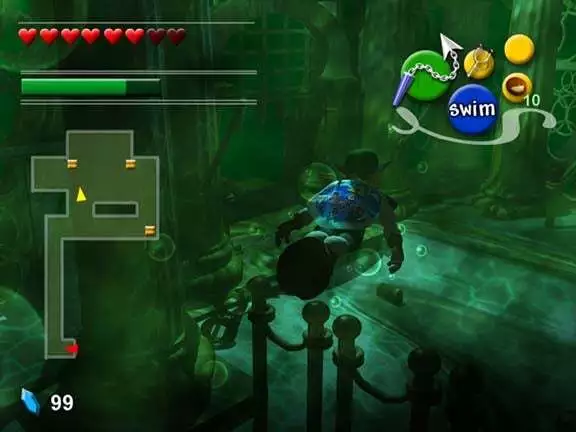
As Majora’s Mask was completed, the team members began to add more of themselves and their families to the game. It was an unexpected way to deal with the intense overtime and crunch that accompanied the game with its deliberately tight deadlines. Sometimes the characters themselves even talk about it. For example, Deku Scribe merchants often complain about not being able to spend time with their wives, and the mayor of the city, in a long exhausting meeting, says the common phrase in the development team, “Let’s not involve my wife in this.” According to the writer of the English version of the game, Jason Leung, this was their way of coping with the fact that they rarely see their families and do not want to remember it again. But at the same time, they left the memory of them in the game.
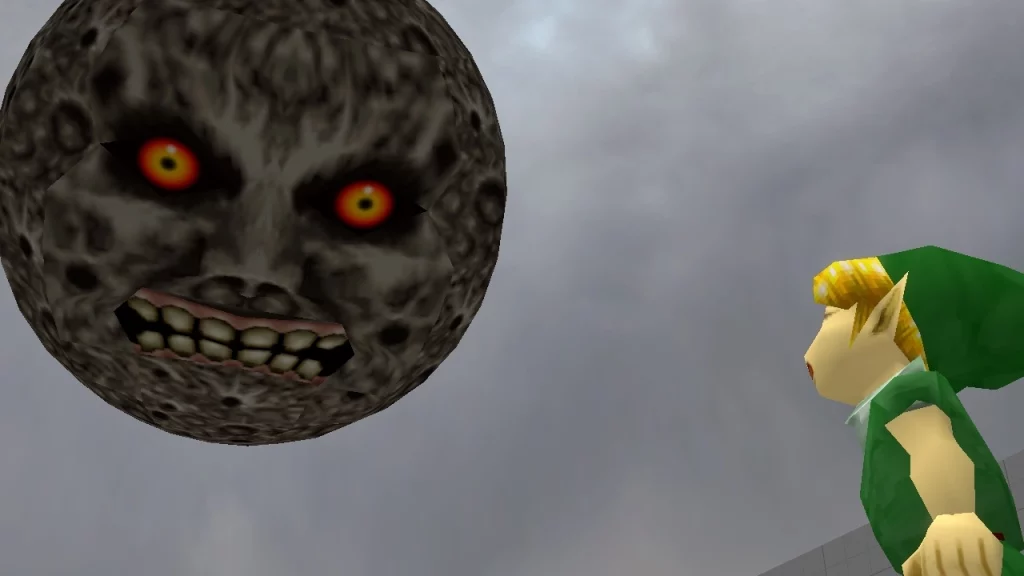
At first, the idea of such a unique sequel to the game was met with hostility, even within the company. Debuggers and testers complained about the difficulties with the time system, especially the fact that it runs even in the dungeons. Regular players were not very happy, either.
When we first sent Majora’s Mask to the Mario Club, we got a lot of angry feedback along the lines of “This doesn’t suit Zelda!”. But after a while, they received completely different reviews like “This is a really good game.”
Shigeru Miyamoto
Majora’s Mask went on sale in April 2000 in Japan and in the fall in the rest of theworld. At the suggestion of Hiroshi Yamauchi, then president of Nintendo, the marketing slogan was “There’s fear in Zelda this time.” A total of 3.36 million copies were sold, less than half of Ocarina of Time’s sales. Although the main problem with such sales is the low sales of the Nintendo 64 itself, Majora’s Mask can be considered the beginning of an identity crisis for the series that will last for almost a decade.
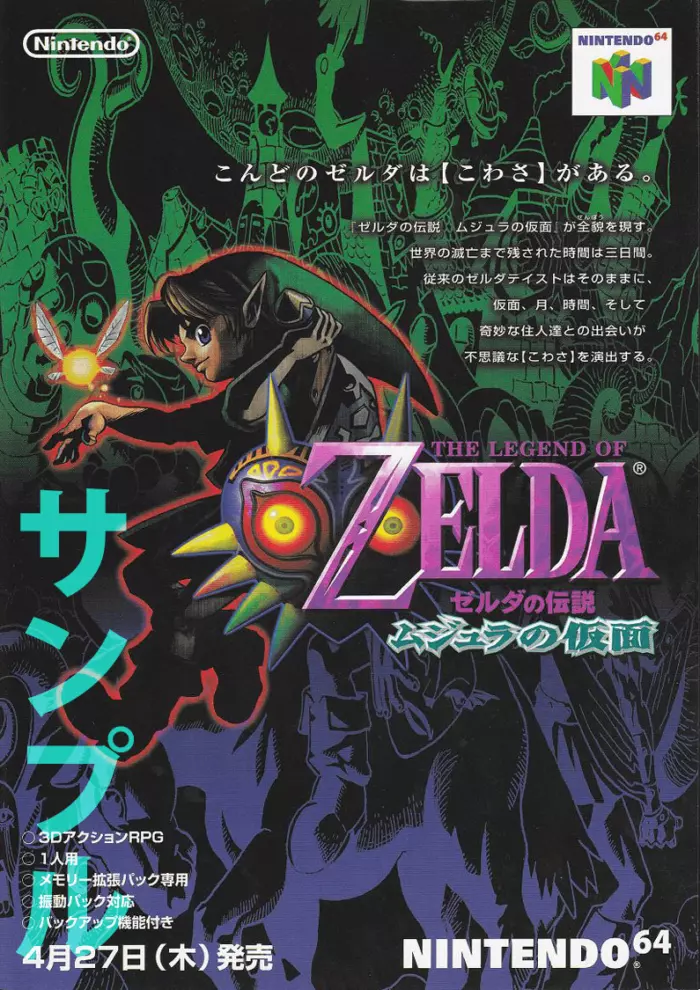
Similarly to Ocarina of Time, there is a GameCube port of Majora’s Mask and a 3DS remake with the same changes.
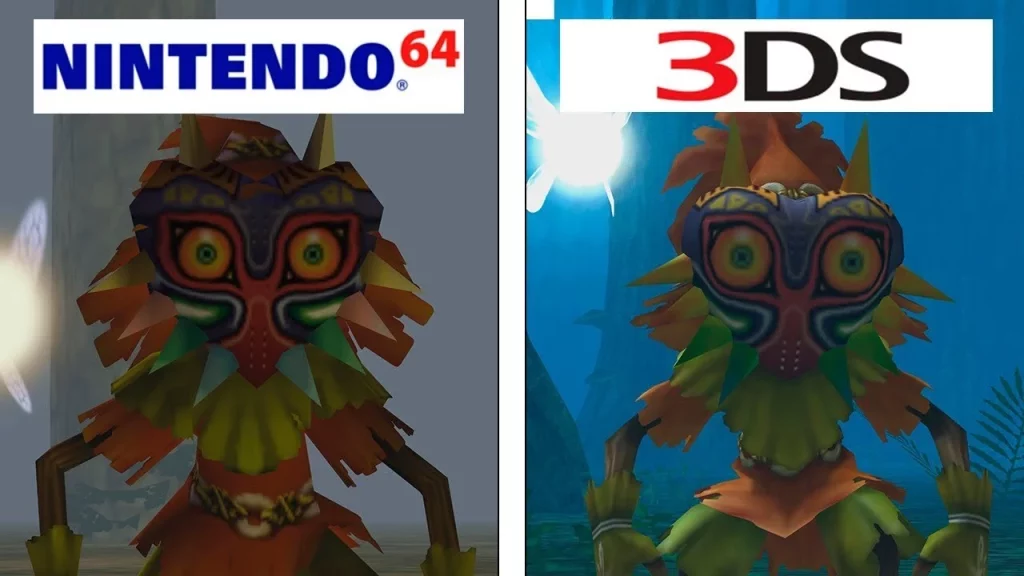
The Legend of Zelda: Oracle of Seasons & Oracle of Ages
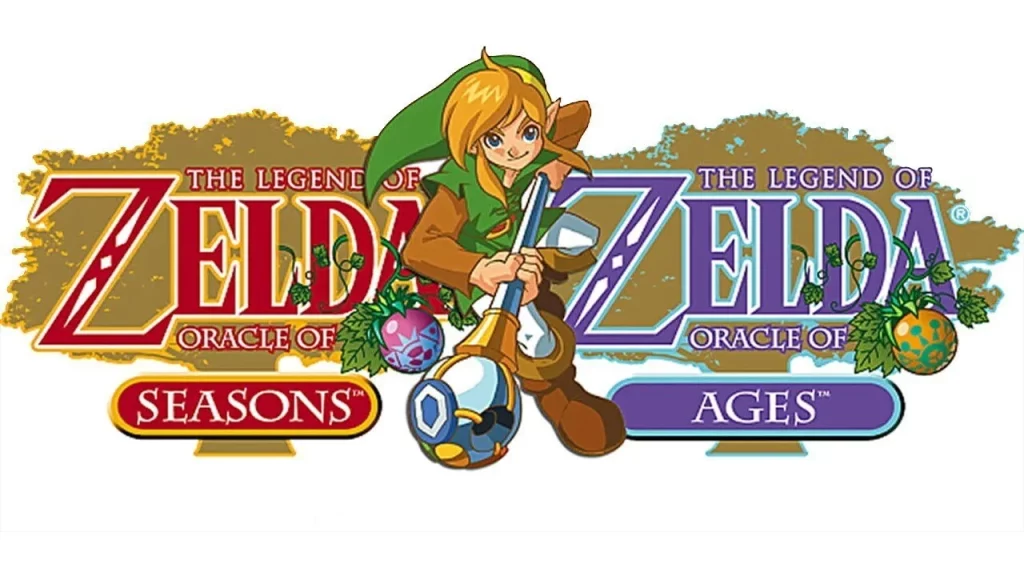
The next chapter in the history of the Legend of Zelda series is not so much with Nintendo itself and its internal teams, but with a small division of Capcom. The Flagship, led by Yoshiki Okamoto, producer of Street Fighter II and Final Fight, was created to develop scenarios for Nintendo, Sega, and Capcom (the parent company) games on the Sega Saturn, Playstation, and Nintendo 64.
During the development of Resident Evil Zero, Okamoto approached Nintendo about the possibility of creating their own games based on their franchises, including The Legend of Zelda. Shigeru Miyamoto agreed, and Flagship initially began making a remake of the original The Legend of Zelda for the Game Boy Color. Although Okamoto was excited to introduce a new generation of players to the classic, he also decided to use this project as a basis for creating completely new parts.
For the first time, information about the upcoming trilogy, then called Legend of Zelda: The Mysterious Acorn and consisting of a remake and two new parts, appeared shortly before the exhibition, which was to show the Zelda Gaiden. Initially, it was planned to release these games in turn in different seasons.
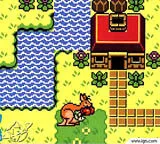
Hidemaro Fujibayashi, a Capcom designer, was in charge of development. Initially, Okamoto appointed him just an assistant, but Fujibayashi subsequently finalized the team’s ideas and wrote the concepts for new games, which were provided by Nintendo. Later, he became actively involved in development, until he finally assembled a team capable of creating a game from start to finish, and not just its script.
Their essence has been largely determined. I mean, the facts that these are Game Boy Color games, that we’re using four seasons, and that we want to keep the feel of 2D Zelda games. We decided that it would be a series, so I thought about the link system as a way to implement this idea. I wanted, for example, that if the player lost an enemy in the first game, he would meet him in the next one. This is the type of game I would like to make. Zelda is a series with a well-developed world, so I thought we could show the “existence” of the characters in the world both in the N64 games and on the Game Boy.
Hidemaro Fujibayashi
We wanted to go in a different direction than the big serious story games like Final Fantasy. This is an action-oriented RPG. It’s a “lighter style,” like a weekly TV drama (as opposed to a full movie). We knew that we could use the same style as the previous The Legend of Zelda games and make two really interesting parts. We also liked the ability to have multiple endings and the replay value you get from two connected games.
Hidemaro Fujibayashi
By mid-2000, the team began to run into difficulties, and one part of the trilogy had to be shelved. The original plan was to use the remake as a basis for testing new technology, but Flagship was very interested in new games. However, because of this, the team did not take into account the difficulties of creating a remake. For example, the Game Boy’s narrower screen relative to the TV made it difficult to fully display the rooms from the original game, which in turn greatly interfered with the visual reading of important elements.
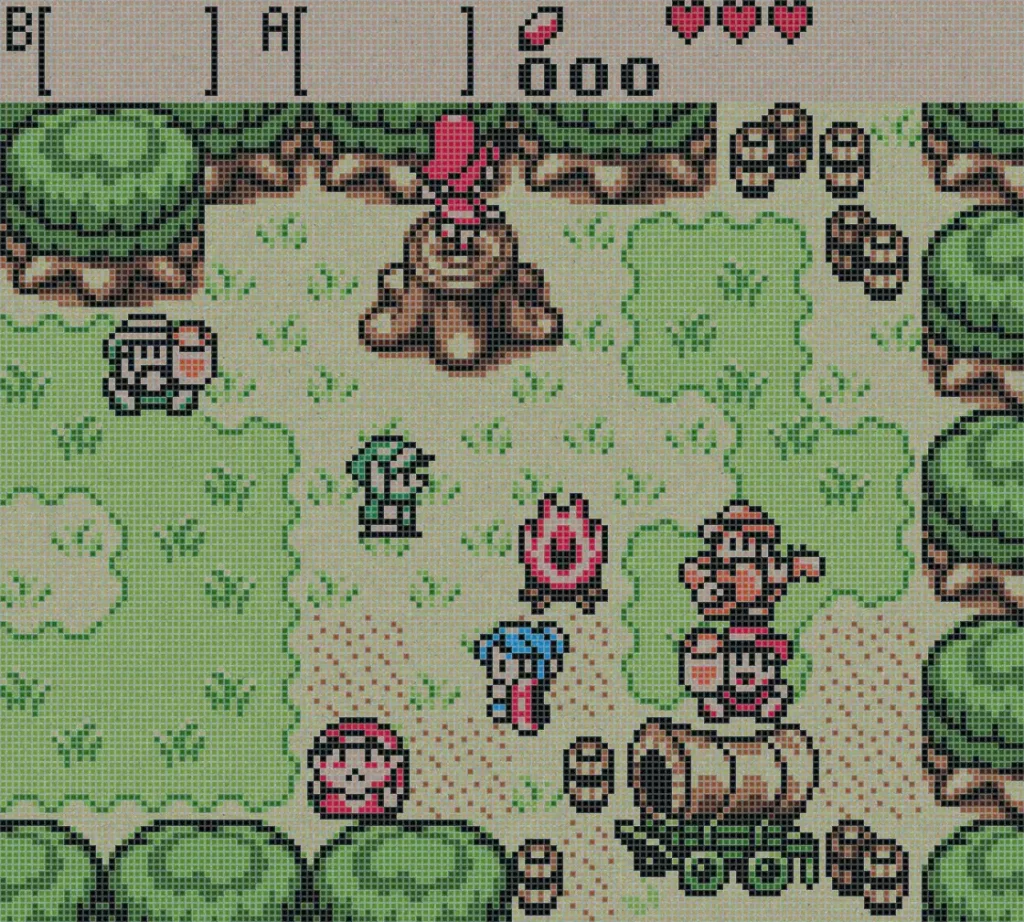
Furthermore, the team failed to consider the fact that they are primarily screenwriters, and their scenario ambitions did not always correspond well with reality. Because of this, the plot and environment were constantly reworked to match each other. It got to the point that Yoshii Yamada, one of the game designers for The Adventure of Link and Ocarina of Time, was sent to help the Nintendo team, and Okamoto himself constantly consulted with Miyamoto.
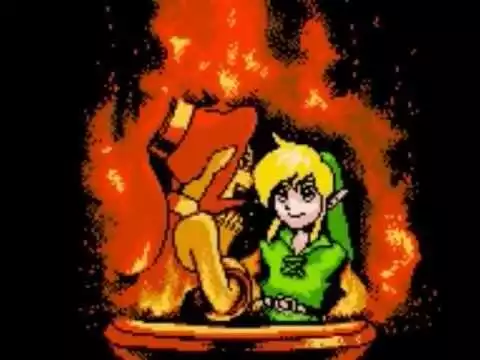
Since both games, called Oracle of Ages and Oracle of Seasons, were developed at the same time as Majora’s Mask, several references were made to her and her predecessor in the form of characters from there. The developers also added themselves to their games as a joke. But the history of reworking was also repeated, as was the case with the creation of Majora’s Mask. Despite the cancellation of one game in the trilogy, there were still not enough teams to finish the rest on time.
Oracle of Ages has a Black Tower where people are forced to work. Their conversations sound something like “There’s no end to this job” or “I can’t go home.” There were also team members who couldn’t go home often, so we added them as characters in the game as a parody. But our team felt comfortable, so the atmosphere was great. People who just showed up with one message ended up staying to chat and leaving only two hours later.
Hidemaro Fujibayashi
Once we started developing the concept of three games in which players would achieve the same goals no matter what order they played in, it was hard for us to see all the interconnection issues. When Miyamoto-san said, “Wouldn’t it be easier to create two games instead of one?” we said “Yes, of course!”. He really saved us. After that, we moved in the direction of two games. To be honest, I think it would be unrealistic to make three such games. Even now, when we only do two, we put a lot of effort into catching software bugs. Spot.monster
Hidemaro Fujibayashi
Unlike planned, Oracle of Ages and Oracle of Seasons were released on the same day, first in Japan then in the rest of the world. The Flagship team has really succeeded in making the two games playable in any order and connected. But it also happened that they were released a month before the release of the new Game Boy Advance handheld console. With 3.96 million copies sold in total, Fujibayashi joined Nintendo.
At the moment, the easiest and legal way to play these parts is the Virtual Console on the 3DS.
The Legend of Zelda: The Wind Waker
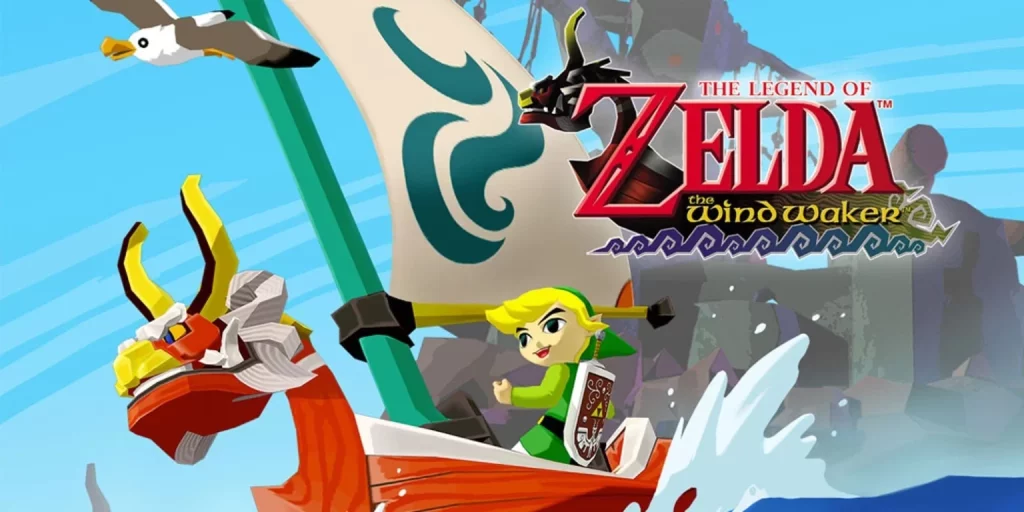
After the development of Majora’s Mask was completed, the team immediately began planning a new part. This rush was due to the public announcement of Nintendo’s upcoming console, Project Dolphin. Due to the commercial failure of the N64, the company needed to catch up on the market positions lost in competition with Sony, so the new console was expected to have games that could sell it. During this time, Aonuma was given full direction for the new game in the series.
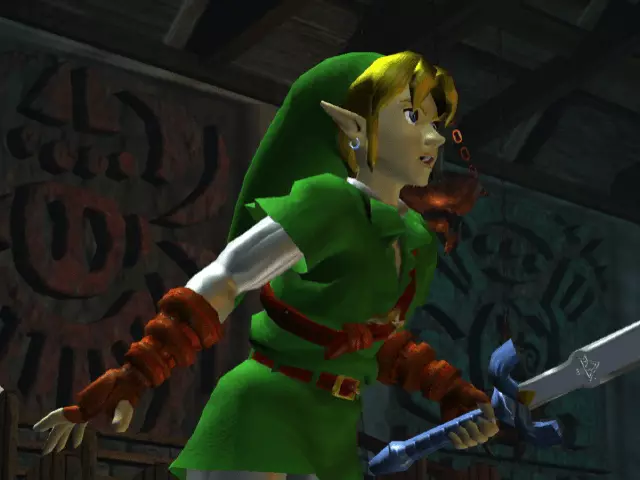
A few months after the release of Majora’s Mask, the full announcement of the Nintendo GameCube took place, and a year later, the launch line of games was announced. The new part of The Legend of Zelda was not included in it, but the public was shown a tech-demo with a fantasy on how the new part could look like. In this demo, the adult Link from Ocarina of Time fought Ganon in a duel. This show was greeted with enthusiasm. But the team led by Aonuma at this point experimented in very different directions.
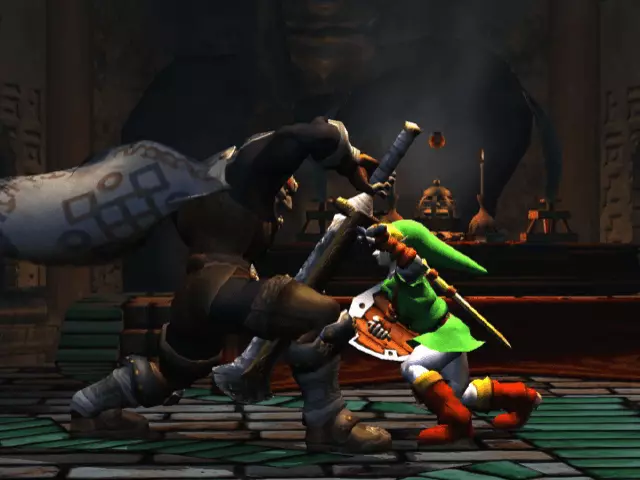
This time, Aonuma had a really difficult task: to make a game from scratch without a ready-made platform. And, moreover, without the help of Koizumi, who at that time led the development of a new part of Super Mario. Even though a tech demo with a visual style close to realism was positively evaluated by ordinary players, the team believed that they should not repeat Ocarina of Time. Character designers Satoru Takizawa and Yoshiki Haruhana, both of whom had gone through the design of the previous two installments, wanted to create a truly unique visual identity for the new Zelda.
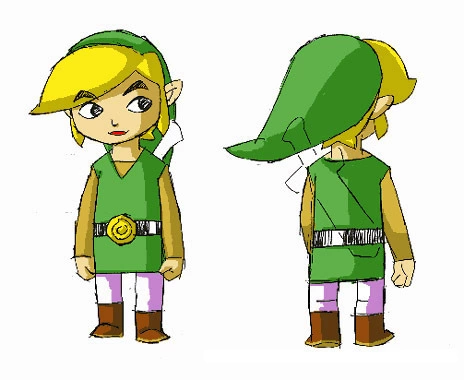
This is how Toon Link was born. According to Haruhana, he read video game magazines and thought that all the games were too similar to each other, and began to worry that the new Zelda would get lost in this monotony. And that means you need to make the game stand out. And the image of a cartoonish, little big-eyed Link inspired the team. including his colleague Takizawa, who thought that with such a style it would be possible to make interesting and vivid character animations. A demo of Toon Link vs. a similarly styled Moblin was soon made, after which Aonuma became convinced that this was the right path for Zelda’s new identity.
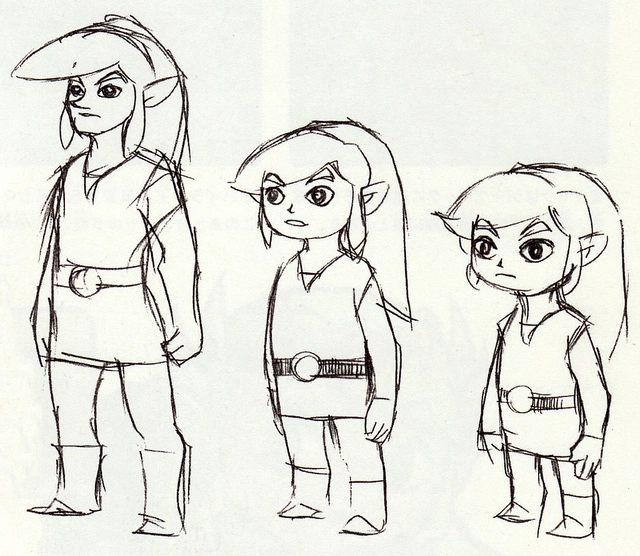
At the time when the GameCube came out, in the world of computer graphics, in the industry, “toon shading” (or cel-shading, author’s note) was a kind of buzzword. Lots of talk, but no one applies. The team I work with were interested, so we challenged this technology. We decided to try it.
Eiji Aonuma
Inspired by the new vibrant visual style, the team began discussing the core gameplay cycle that would characterize The Legend of Zelda games: interactivity and game logic that the player could understand. In this visual style, they helped a lot. The team was convinced that photorealism made objects difficult for the player to read. For example, breakable walls are more difficult to distinguish from ordinary ones in a realistic style. At the same time, a lot of animations were supposed to compensate for a visually simple picture.
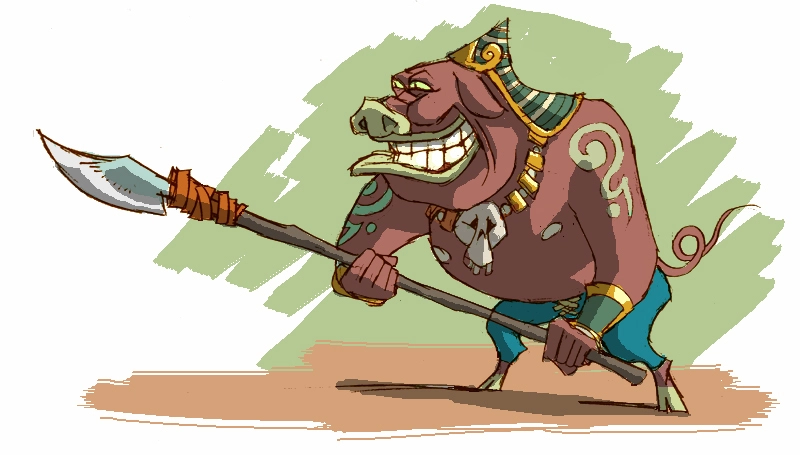
The idea for Zelda of the Sea came to the team at the very beginning of development. They imagined what kinds of characters could live in such a world, how to use the sea for gameplay, and how big the map would be. So it turned out that the GameCube couldn’t load objects fast enough, so we had to make the islands a considerable distance from each other to ensure smooth loading.
Similar to Ocarina of Time and Majora’s Mask, the environments and gameplay elements help set the story for the new installment. If the sea is everywhere, then Hyrule is now at its bottom. But why? So Aonuma only came up with the idea of positioning the game as a sequel to Ocarina of Time hundreds of years later. Later, he also confirmed that Ocarina had two endings, which marked the beginning of the famous timeline of the series.
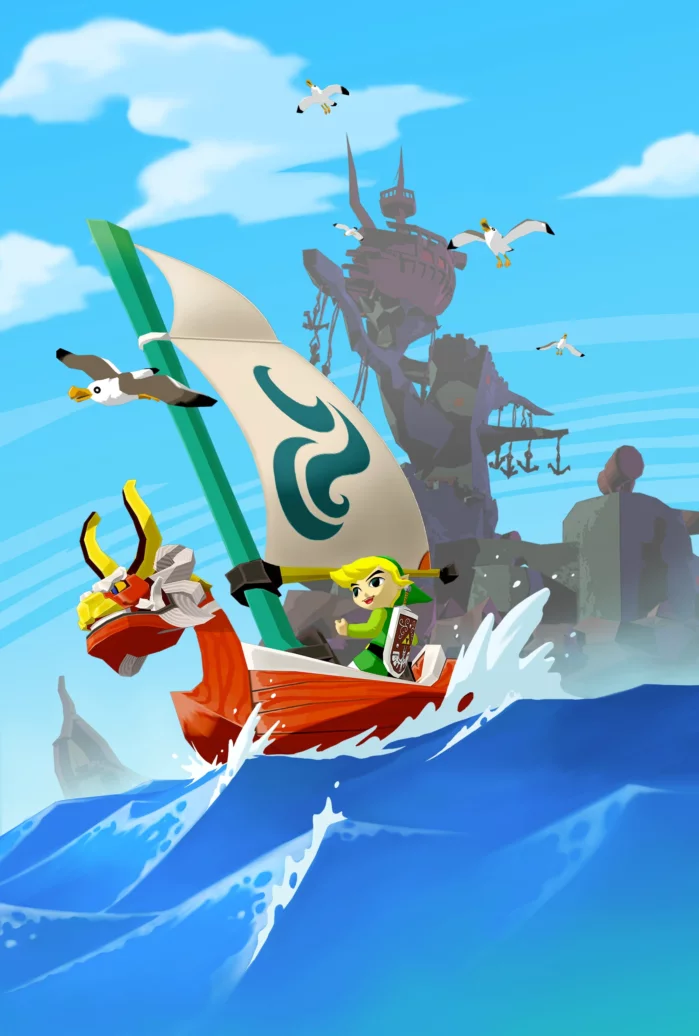
By August 2001, the team had made enough progress to show the game first at Spaceworld 2001 and then at E3 the following year. The reaction of the audience was mixed. Mostly because everyone, impressed by the Spaceworld 2000 tech demo, was expecting a realistic and mature visual style from the new Zelda, but got a bright cartoon. Many felt that with this, Nintendo hoped to appeal to children rather than develop the darker style of Ocarina of Time and Majora’s Mask. This attitude remained until the release. This created dissension within the team. But the development continued no matter what.
We never wavered in our desire to make a brand new Zelda game. But we noticed the backlash when we announced it, so we were uncomfortable. But developing in doubt would be the worst possible option, so we decided to challenge in the hope of gaining recognition. (Aonuma)
-Eiji Aonuma
I remember people were divided into two camps. One was happy and “The characters are so expressive, it’s like I’m playing in an anime,” while the other resisted in the spirit of “This is a game for young children with such cute characters.”
Satoru Iwata
The development of the game, called The Wind Waker, was completed at the end of 2002. To stay on schedule, I had to eliminate two dungeons and replace them with a quest to recover the Triforce scattered across the sea. Also, due to the shortened development cycle, it was not possible to sufficiently fill the game world with activities, which became one of the reasons for the criticism.
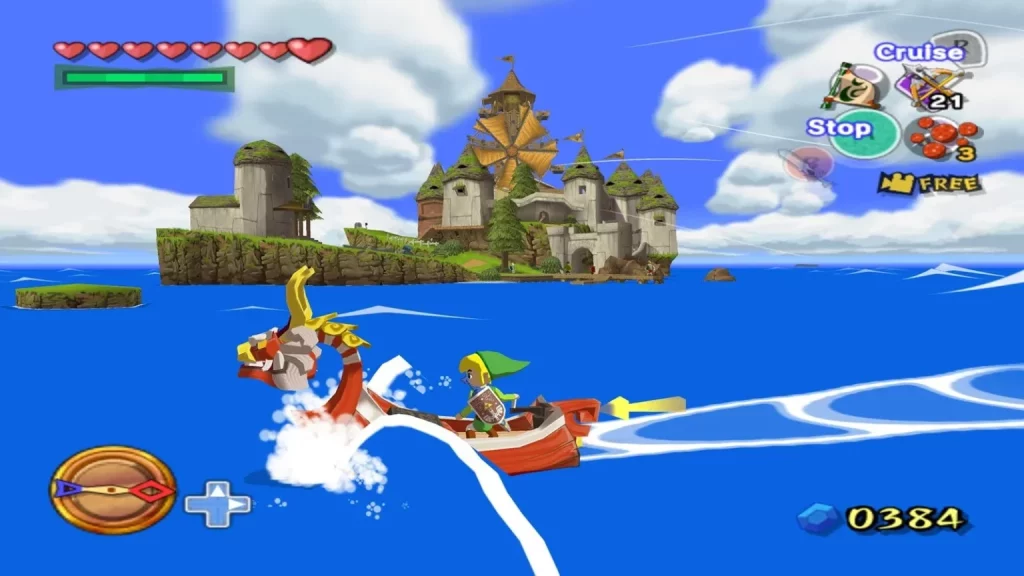
Nintendo promoted The Wind Waker very actively, advertising with the slogan “animation you can touch”. To encourage sales, pre-orders were given a bonus CD with a port of Ocarina of Time, which, in addition to the main game, also contained a new Master Quest based on the canceled Ura Zelda. As a result, it was one of Nintendo’s most successful game launches. But while early sales were great, they quickly fizzled out despite great ratings and many Game of the Year awards.
It sold 4.43 million copies in total, slightly better than Majora’s Mask but still almost twice as bad as Ocarina of Time. This was due to various reasons: in Japan, the video game market began to decline, and in the west, the game became unpopular due to the visual style.

In September 2014, The Wind Waker HD was released for the Wii U with updated graphics, support for a second screen, and some online functionality. Despite the same warm reception from critics, the re-release sold almost half as much as the original, mainly due to the low popularity of the Wii U itself.
Identity problem
Such results made Aonuma think about what went wrong at what point. He believed that for the success of the game, it was necessary to give something new that would surprise the player and to keep those elements that were loved in past games. And The Wind Waker failed to do either. Inadvertently, the Ocarina of Time-style tech-demo created problems, after which the players were waiting for a new part with exactly the same atmosphere.
However, Miyamoto had another idea as to why The Wind Waker failed to catch on. In his opinion, the team has not been able to add really new ideas to the gameplay since the series moved to 3D. Because of this, experienced players were no longer so interesting, and The Legend of Zelda seemed difficult for beginners. Since Miyamoto’s style was based on reinvention rather than improvement, he felt that Nintendo needed to constantly seek out new audiences with new ideas.
This he brought to the development team, and over the next years they tried to find a balance between the needs of the Western and Japanese audiences. This happened against the backdrop of falling sales of hardware and software in Japan. People were losing interest in video games, and there were too few newcomers. At the same time, the Western market was on the rise, which forced Nintendo to make games for the needs of a different audience. with varying success, mainly due to a poor understanding of what exactly this audience needs.
On the other hand, Aonuma was experiencing, if not a failure, then at least a failure of his truly first game as a leader. It seemed to him that he did not understand exactly what the players expected of him. Being in the shadow of the real creator of the series, Shigeru Miyamoto, he also did not always understand what his leader wanted from him. How does he perceive his work?
Mr. Miyamoto points out every mistake I’ve made in front of the press! For example, the question most often asked by reporters is “Zelda” (what makes a game Zelda?). This is a very difficult question, even for us. Even Mr. Miyamoto disagrees with his answers. In one interview, he responded, “The Zelda games are unique,” and in another, “The Zelda games show growth.” I thought, “What is this?” But in an interview, I have to answer questions. That’s why I spoke about this “zeldness” in the way that Mr. Miyamoto would describe it. to be interrupted by Mr. Miyamoto himself, who did not agree with me, saying “No, this is different” in front of all the reporters.
Eiji Aonuma
Fed up with development and failure, Aonuma informed Miyamoto that he wanted to step down as head of Team Zelda and do something else. Instead, Miyamoto asked him to stay and changed his position to producer, offering to take on the role of controller and focus on improving the series from the outside. Encouraged by new opportunities and trust from Miyamoto, Aonuma agreed and began to think about new parts of the series.
The Legend of Zelda: Four Swords and Four Swords Adventures
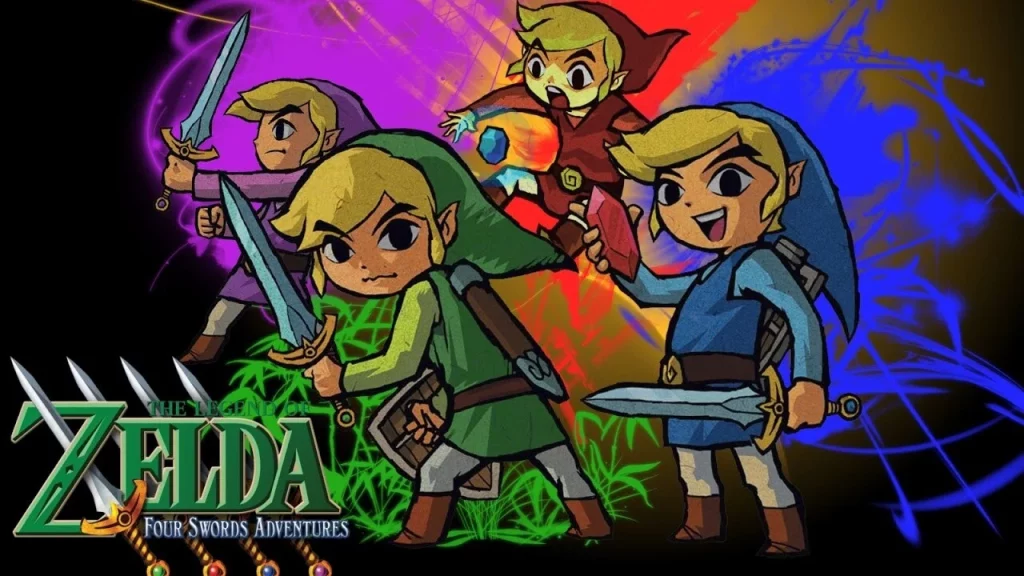
While work on The Wind Waker was in full swing, the Oracle parts team did not sit still. Nintendo liked the collaboration with Capcom and Flagship with Fujibayashi in particular, so they were allowed to start developing a new game. to freeze it soon after the start in favor of creating a port of A Link to the Past on the Game Boy Advance. After two similar attempts, which eventually escalated into the creation of a completely new game,
But this time the task was simple and quite specific: just the usual port of A Link to the Past with minimal changes but with a small bonus in the form of a separate multiplayer game. So Nintendo wanted to maintain interest in the franchise against the backdrop of the situation in Japan.

During this time, Nintendo also experimented with connecting their consoles to each other. Just as Pokemon Stadium could transfer data from the Game Boy to the N64, The Wind Waker decided to link the GameCube to the Game Boy Advance. With the Tingle Tuner, the player could control Tingle to search for treasure near the player. But this time we decided to go in a slightly different way, albeit also with the connection of several consoles to each other.
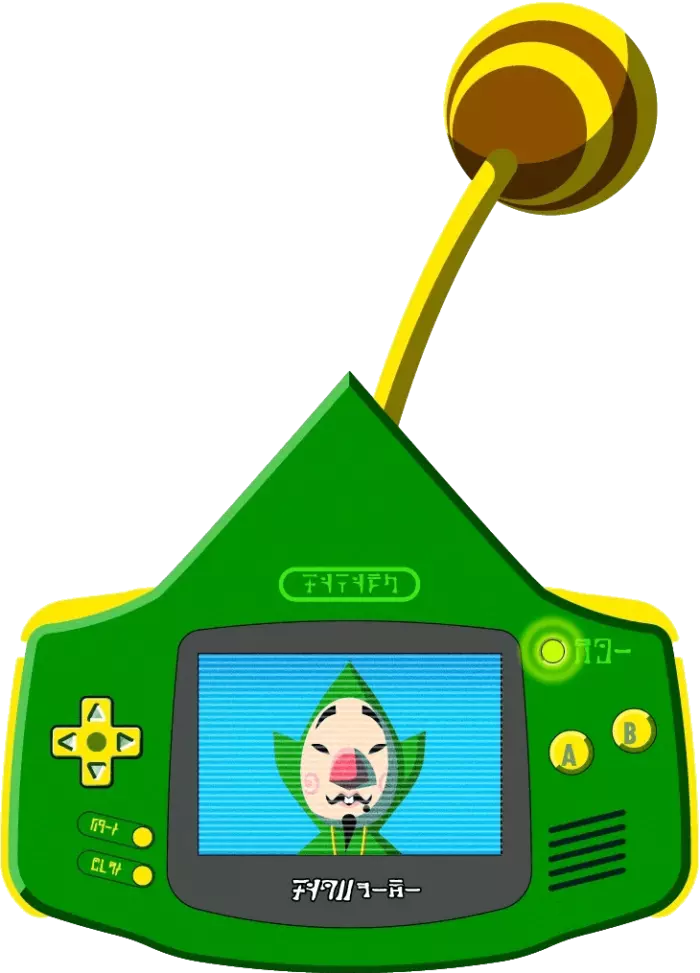
This is how Four Swords turned out-a small cooperative add-on for two to four players for A Link to the Past, the passage of which opened bonus materials in the original game. The players each connected to their Game Boy Advance and went through a new quest together. At the same time, it was from this part that Cartoon Link created for The Wind Waker took root in the portable games of the series.
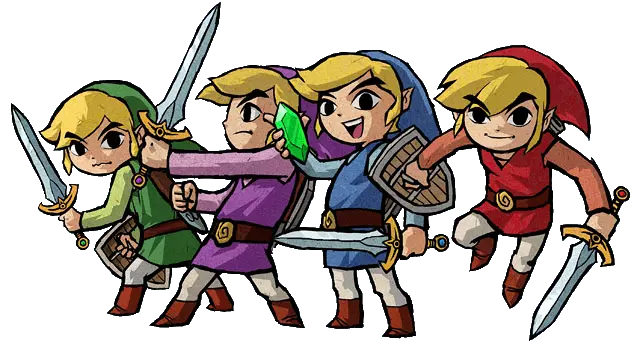
The Link to the Past & Four Swords was released in 2002, shortly before The Wind Waker, and received rave reviews from critics who liked the idea of co-op. Both Nintendo, who decided to take advantage of this to attract a new audience, and Aonuma, who had already become the producer of the series by this point.
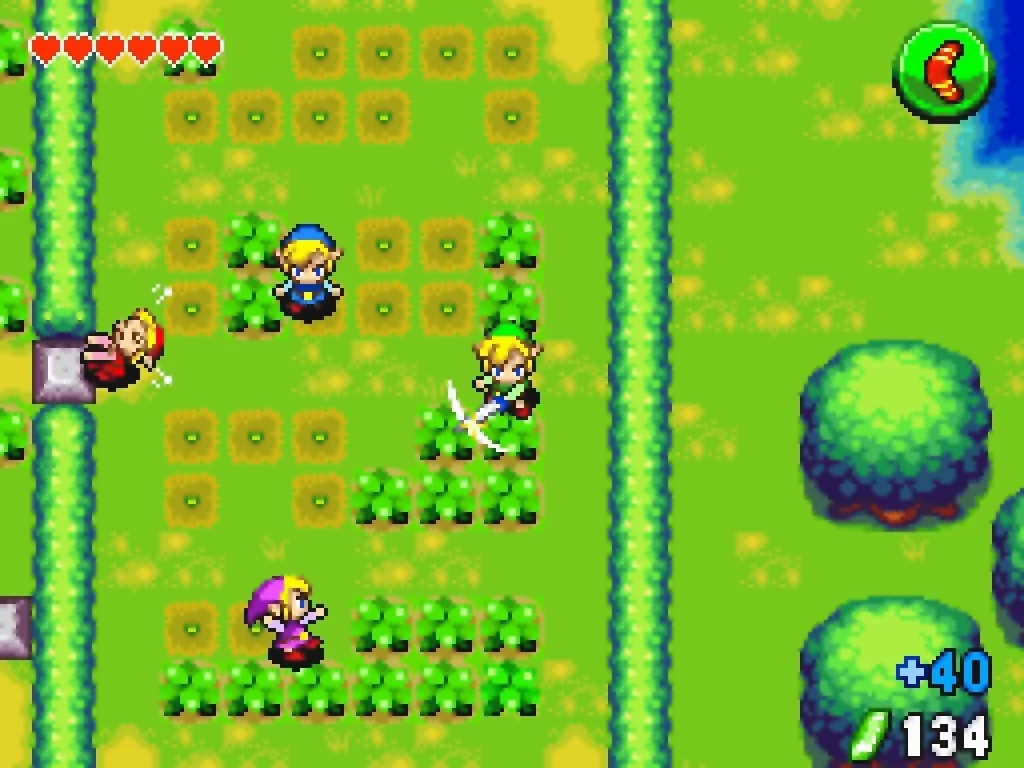
Previously, Aonuma was not involved in the development of parts for handheld consoles due to his employment in the main team, but now he was responsible for curating these games as well. So, at the insistence of Miyamoto, he began work on Four Swords, but for the GameCube. But with the need to connect to the Game Boy Advance console, According to Miyamoto, this is a classic Zelda with a top-down view, in which players watch the TV screen while exploring the world, and the dungeons are already played on portable consoles. This part was called “Four Swords Adventures.”
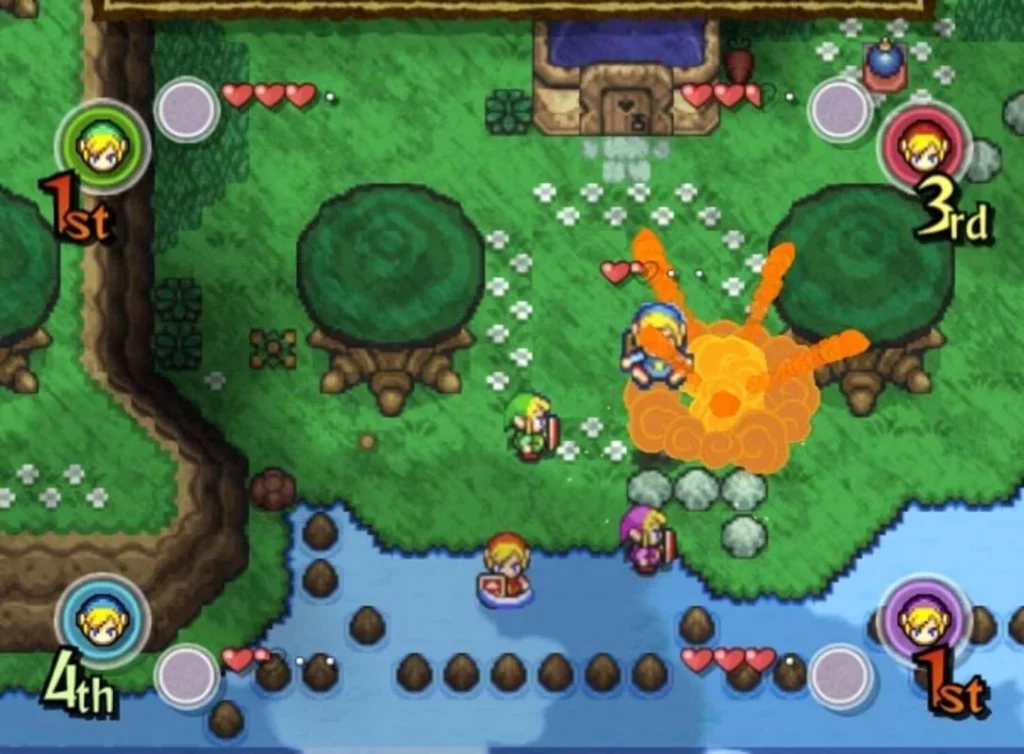
Fujibayashi was not the game director this time, as he was already busy with another game in the series. He was replaced by Toshiaki Suzuki, who previously led the development of Super Mario Advance and Tingle Tuner. He was a fan of the series and decided to pay homage to each part by making different references to them in Four Swords Adventures.
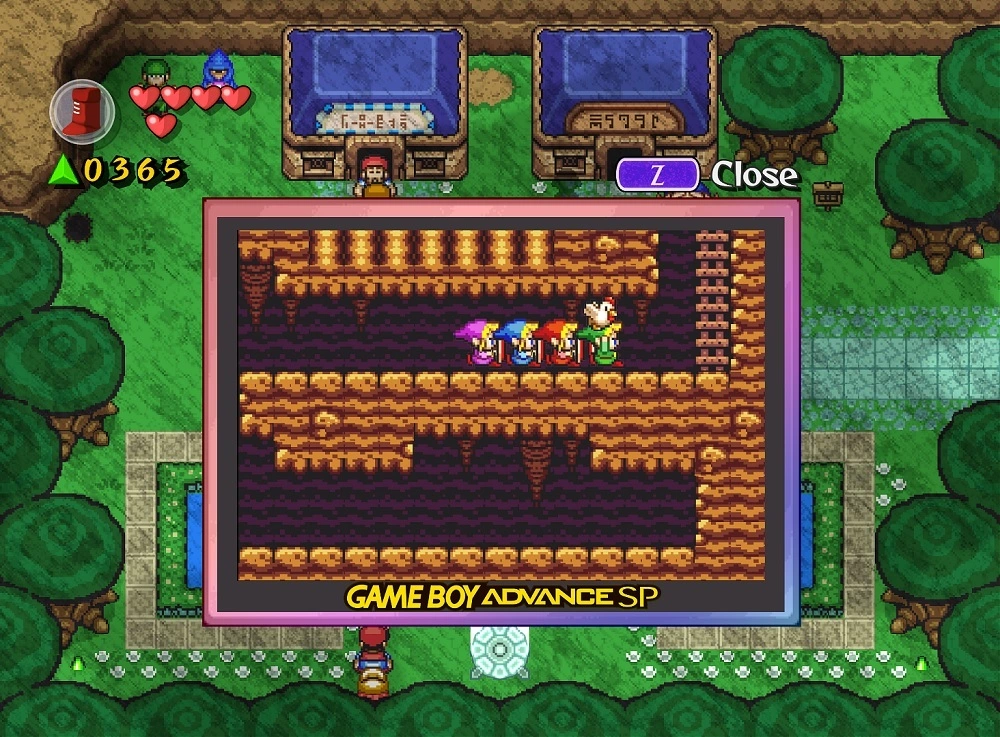
The game was originally scheduled for a February 2004 release in Japan but had to be delayed by a month because it was ultimately decided to allow the campaign to be played solo, and two months before release, Miyamoto felt that it needed to be finalized. As a result, Four Swords Adventures was released in March of this year and a few months later in the west and sold very poorly despite good reviews from the press. As Nintendo later admitted, the problem was the need for each player to have their own Game Boy Advance and a connecting cable.
Four Swords is currently available through the Virtual Console on the 3DS. Four Swords Adventures cannot be played legally, but it can be played even with co-op using the GameCube emulator.
The Legend of Zelda: The Minish Cap
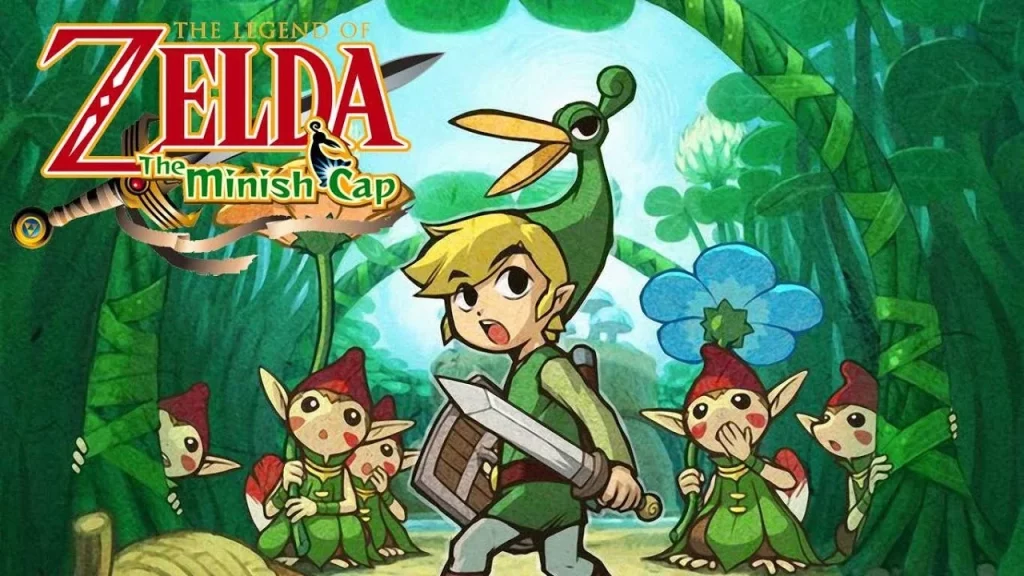
While Nintendo’s in-house team was making Four Sword Adventures, Flagship was already hard at work developing another handheld Zelda. Fujibayashi, after the release of the port of A Link to the Past & Four Swords, was still burning with the idea of another part, this time on the then-fresh Game Boy Advance. He had two goals: to do something that no one had done before and to show everyone their talent in creating 2D graphics. So, inspired by one of the items from Four Swords, Fujibayashi decided to build a new game around the mechanics of shrinking in size.
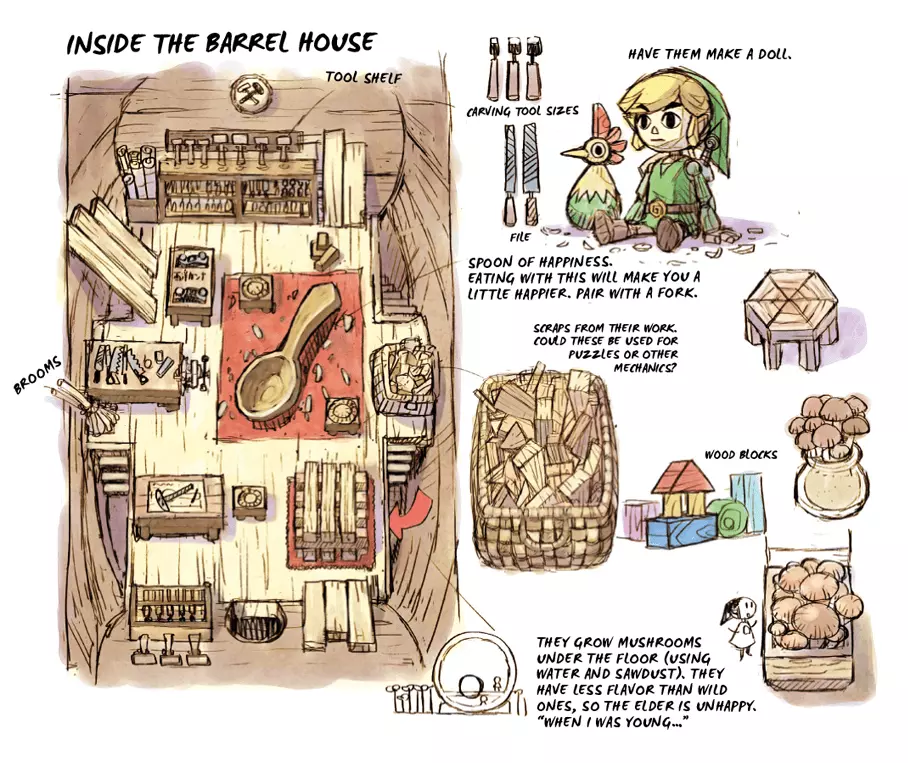
In an effort to create a truly unique look for the game, the team began to create a huge amount of concept art in search of the right style.
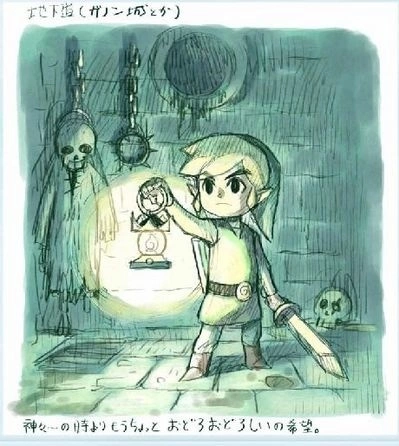
Our first approach was to take our early sketches of images and try to convert them to 2D graphics on the Game Boy Advance. One picture showed a tiny creature in a barrel and a tiny Link. The other showed a corridor formed from gaps between normal-sized furniture and an unknown world opening up behind…things like that. When we saw this, we immediately felt that “this is going to be an interesting game.”
Eiji Aonuma
One of the developers’ goals was to include elements that are more 3D oriented but made in 2D. This trick was achieved by distorting the environment and Link’s sprite to reflect scale and perspective. In some cases, the world around the player would look the same as before the reduction, and Link would appear as a tiny dot on the screen. Fujibayashi stated during development that the team aimed to create a game that could compete with 3D Zelda and become the pinnacle of 2D games.
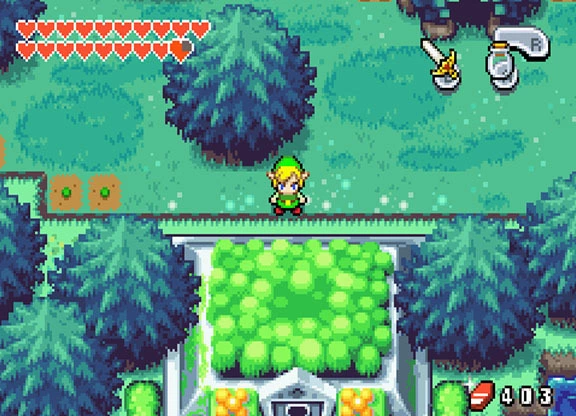
Fujibayashi himself was a game director on the Flagship/Capcom side, and on the Nintendo side, he stepped in in his new role as producer, Aonuma. Even though by early 2004 he was developing a “realistic” The Legend of Zelda for the GameCube, the console sold poorly and, in fact, the entire business of Nintendo rested on the Game Boy Advance. Therefore, the primary task was to maintain sales of this particular console. At the same time, the Minish Cap became an opportunity for Aonuma to take a break from the troubled development of the “older” part.
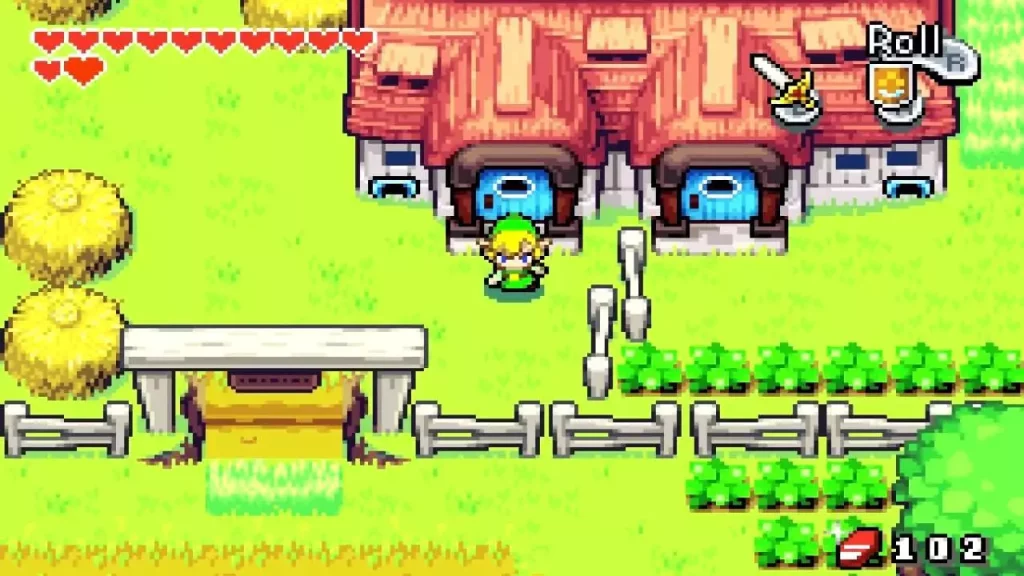
The Minish Cap was released in November 2004 in Japan and Europe and a couple of months later in the US, selling 1.76 million copies, again hitting the generational change of handheld consoles. It is also the last part that was made together with Capcom. But along with this, Fujibayashi moved to Nintendo and will be mentioned more than once in the development of various parts of The Legend of Zelda.
The Minish Cap is currently available via Virtual Console on 3DS and Wii U.
The Legend of Zelda: Twilight Princess
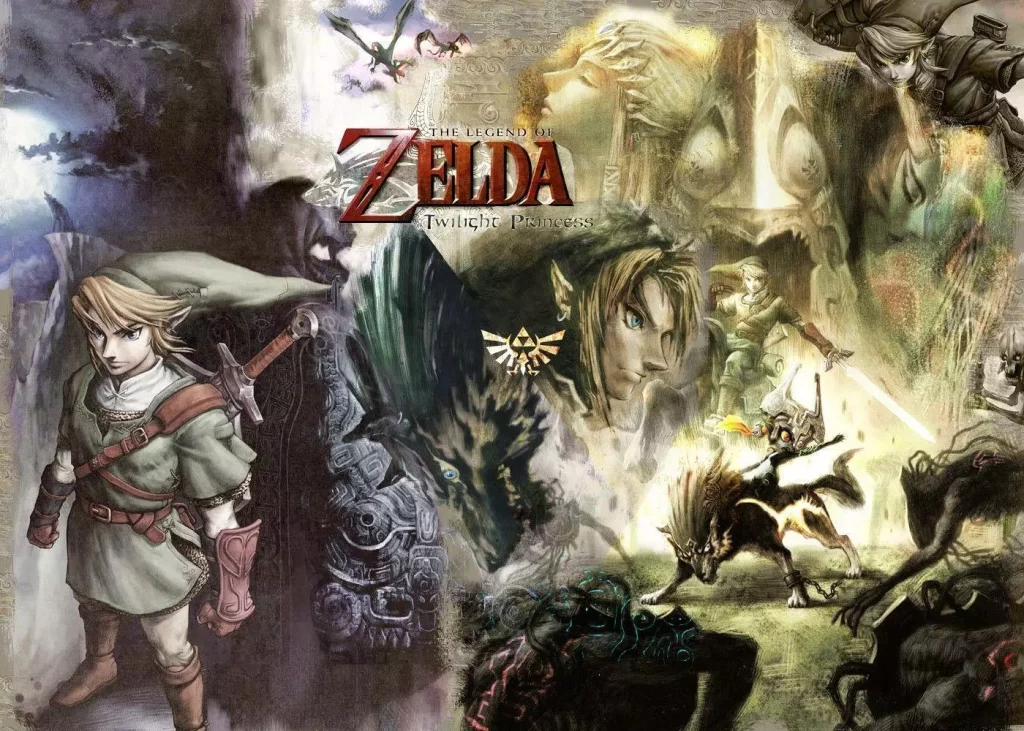
Meanwhile, the main The Legend of Zelda team was in a very difficult position. On the one hand, sales dropped in Japan; on the other hand, the failure of Wind Waker in the Western market was due to the visual style, which the main audience of the series considered too childish. Because of the constant race of technologies and the growing expectations of players, game development has become more expensive.Even Miyamoto’s ideas faltered with Four Swords Adventures, and the GameCube continued to lose ground to both Sony and the newcomer Microsoft.
Nintendo, at this time, even began to believe that creating new games for home consoles would be too risky. But despite this, they began to plan a new part of The Legend of Zelda. In an environment where any wrong move could bury the entire series, Aonuma set to work.
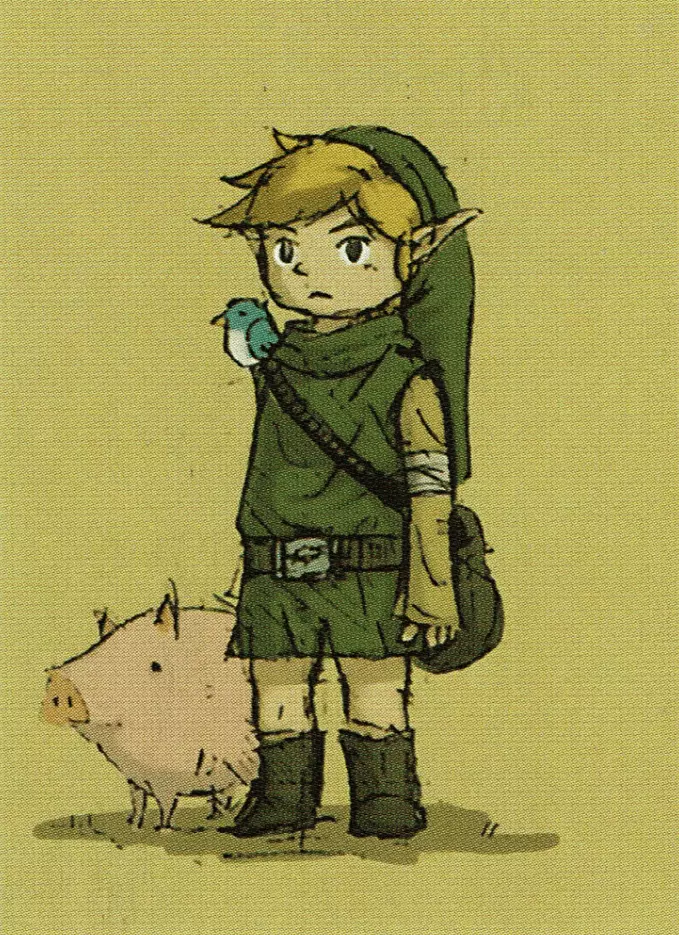
The project was originally called The Wind Waker 2, with the same visual style, but the action will take place on land, and Link will again get a horse like in Ocarina of Time. But in the initial stages, it turned out that Toon Link’s proportions were not suitable for riding. Although by that time, an adult version of the hero in this style was considered for Wind Waker, the team decided to abandon this solution to the problem.
In addition, Aonuma formed a new vision that focused on popularity in the west: a “cool” adult Link, the ability to travel on horseback, and an exciting world like in films like The Lord of the Rings. just like in Ocarina of Time. Aonuma felt that this was what the players wanted, but Miyamoto, who still had the final say, was skeptical. He wanted the developers to look for something new and not repeat Ocarina of Time. But in the end, he gave permission and advised Aonuma to develop those ideas that could not be realized then.
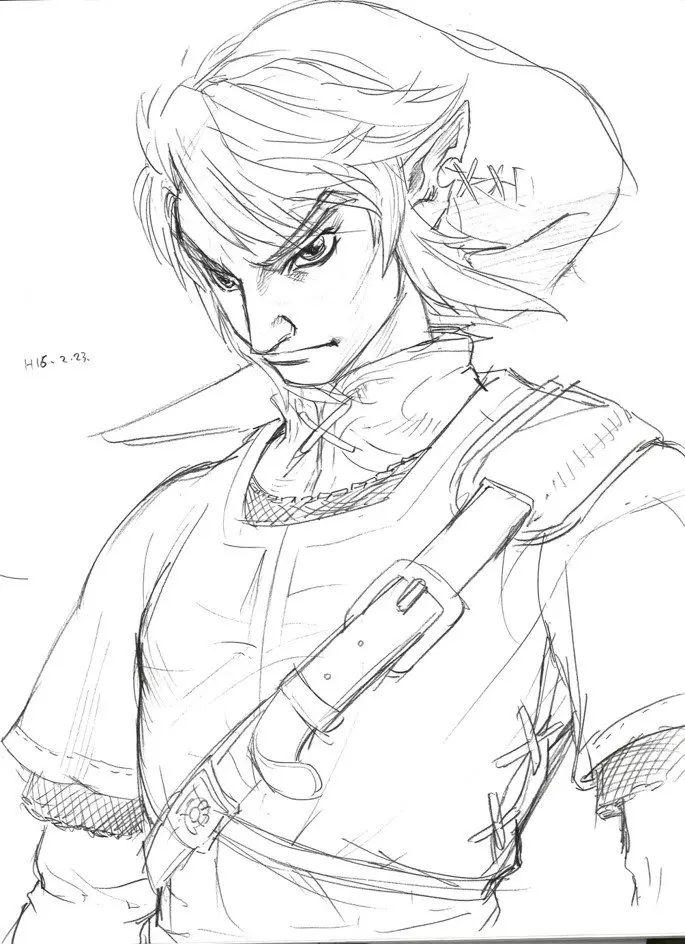
Work began with a new image. Yusuke Nakano, an artist and character designer for many Nintendo games, decided not to make a photorealistic image but to convey the atmosphere of Ocarina of Time. In the initial concepts, Link was much more rude and “cool” than before. The artwork was handed over to Nintendo of America, whose feedback led to the final version: a slightly redesigned adult Link from Ocarina of Time. In this image, began to create the entire visual style of the game.
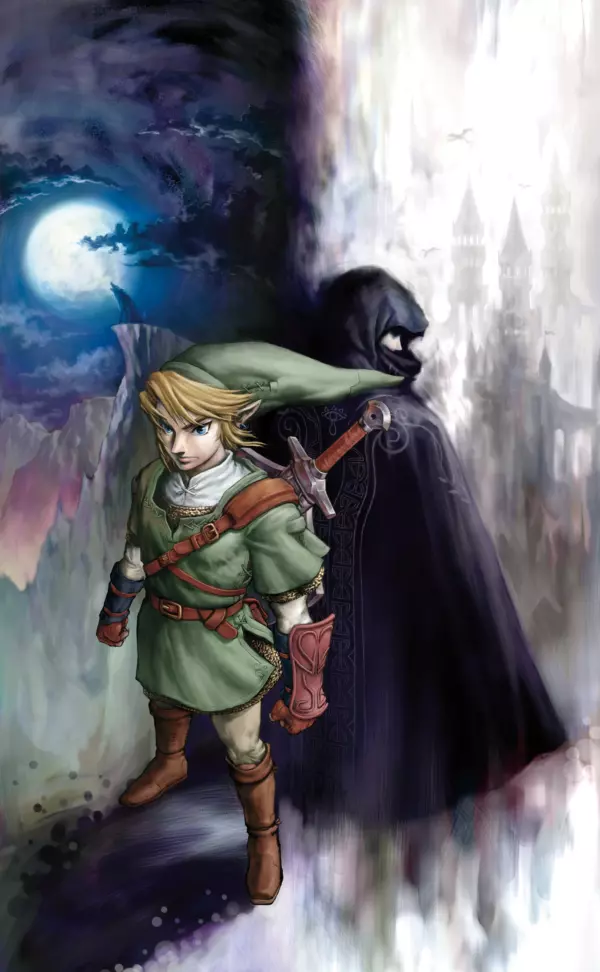
Aonuma and the team planned to make the new Zelda the largest in the series, so they devoted a lot of time to controlling the horse. I added a horse fight, which was planned back in Ocarina of Time. It was the image of Link on his horse, Epone, that was used for the first teaser trailer. As a result, it was not immediately obvious that this was a new game in the Legend of Zelda series. The demonstration of this trailer at E3 2004 received a standing ovation from the audience.
When it was announced with a surprise trailer at E3 2004, we got a standing ovation from the audience. It was a very exciting moment for us, but we were still in the early stages of transforming the game into something more realistic. We knew we had to create a Zelda that would meet the expectations of fans in North America. And if we can’t, it will be the end of the franchise.
Eiji Aonuma
Despite hitting the style in the audience’s expectations, the game still had problems. Like in The Wind Waker, a number of ideas in the new installment remained similar to previous games. At the same time, the team didn’t want to make too many drastic changes for fear that it would turn off fans. So the idea of making a new part from the first person was thrown back.
In the meantime, Aonuma had to work on three projects: a new 3D Zelda, The Minish Cap, and a prototype for the upcoming Nintendo DS, scheduled for release in late 2004. In the meantime, the team continued to brainstorm ideas to link the style to the gameplay. So we went back to the idea of light and dark worlds like in A Link to the Past and how that could affect the gameplay. They also thought about the influence of the two worlds on each other for A Link to the Past, but in the end, they decided to postpone it. But in the new part, this idea was remembered, as well as the possibility of adding sci-fi elements to this “Twilight Kingdom”.
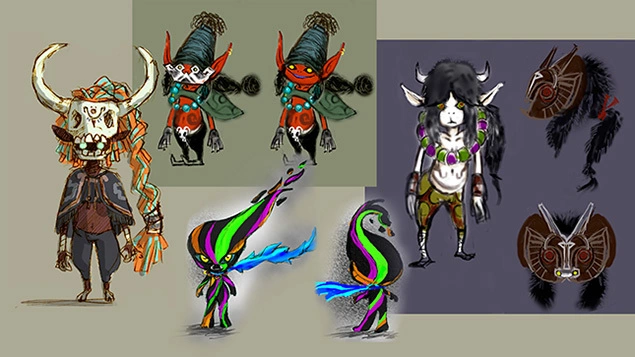
But the main gameplay innovation appeared completely by accident. During one of his trips abroad, Aonuma had a dream that he was a wolf locked in a cage. So he came up with the idea of giving Link the ability to transform himself into a wolf, with new skills and a different style of play. After that, an unusual request came from Miyamoto: to add a character that would ride on the back of Link Wolf to make this spectacle more interesting. Initially, this new companion looked relatively modest, but as it was developed, it became the center of the plot and acquired a much more provocative design. A mixture of a monster, something like a goblin and a devil, whose sketches were still for The Wind Waker 2, with a child was named Midna (midnight).
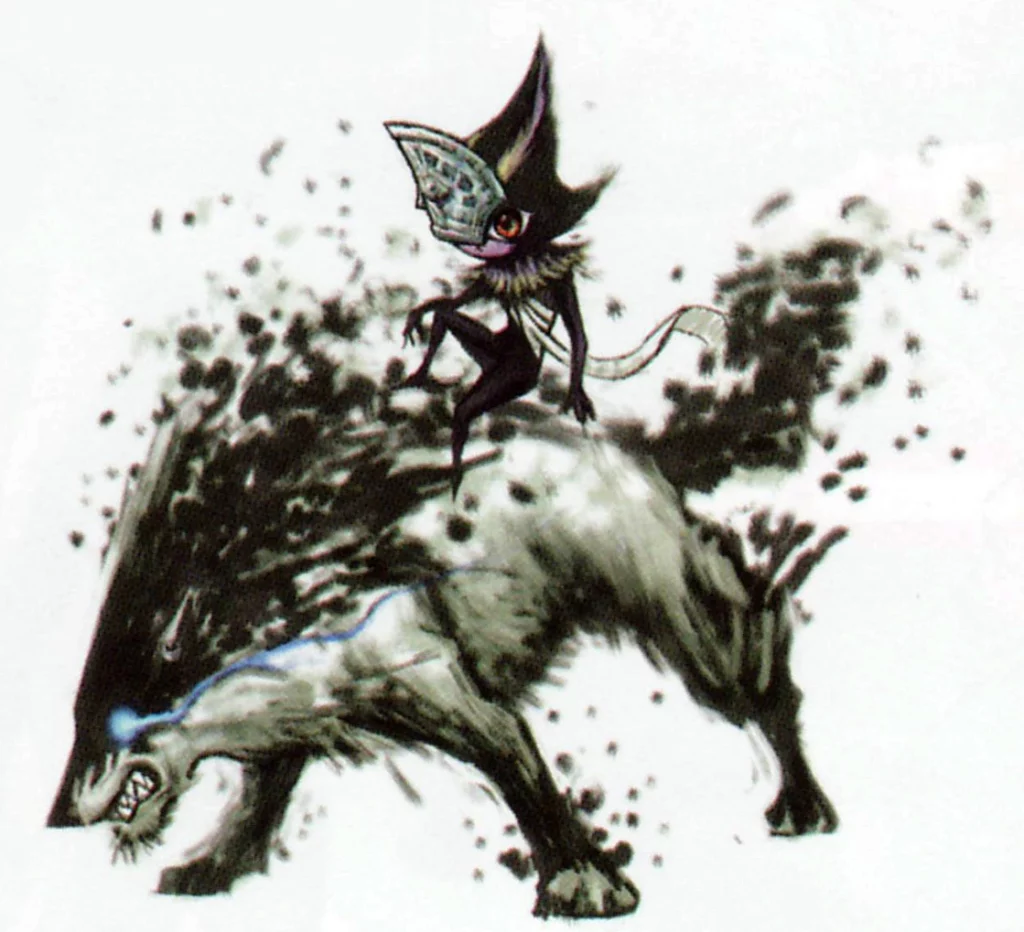
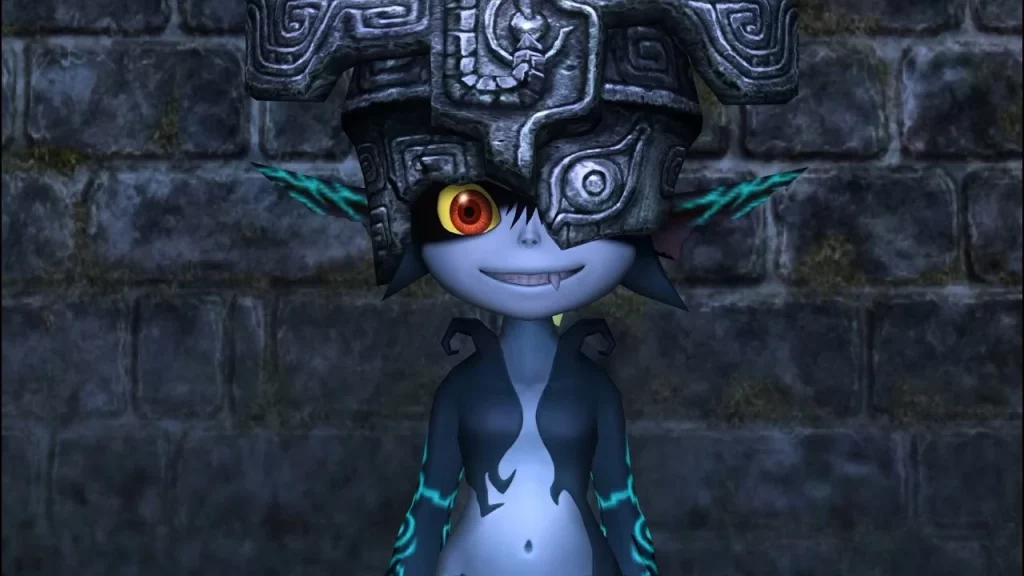
At the same time, for some time, the team planned to turn Link into a wolf from the very beginning of the game. Aonuma liked the idea of disorienting the player in the beginning and forcing them to learn how to be a wolf, but Miyamoto was strongly opposed to this approach.
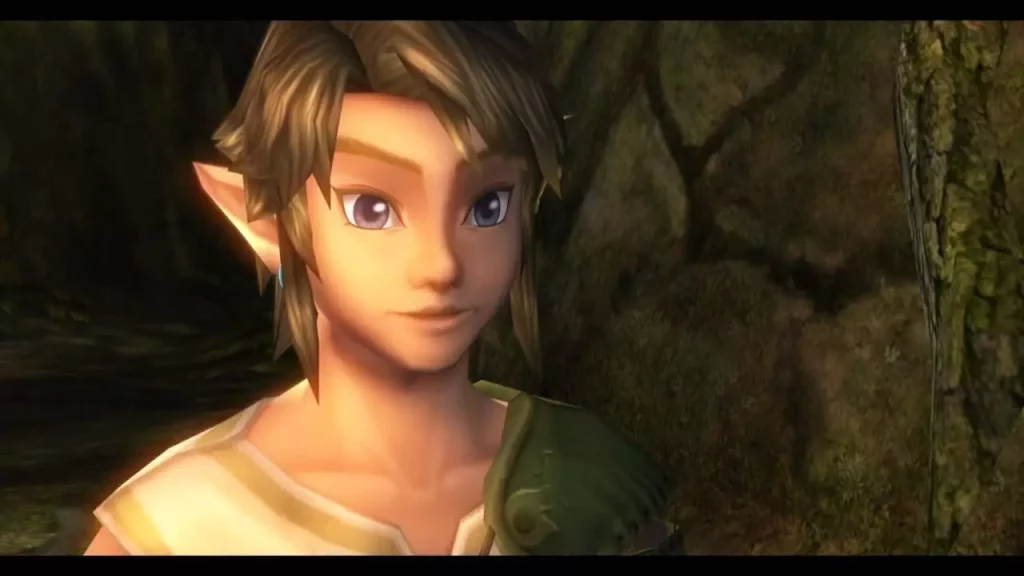
A lot of attention was paid to the design of Link himself. Aonuma liked the idea of creating a young, strong hero with a rebellious nature. To do this, the animators gave Link a final move at the end of the fight, when he stylishly sheathes his sword after defeating an enemy. Also, Link started the game as a farmhand, so having a sixteen-year-old teenager have such strength was logical. This was also passed down to the way the dungeon doors were opened, with Link now lifting them up with his hands. Akira Sasanuma, known for his role as Dirk Elsman in Gundam SEED, was invited to voice act. Aonuma felt that Sasanuma’s voice was a great fit for the new Link, making him sound almost like a bad guy.
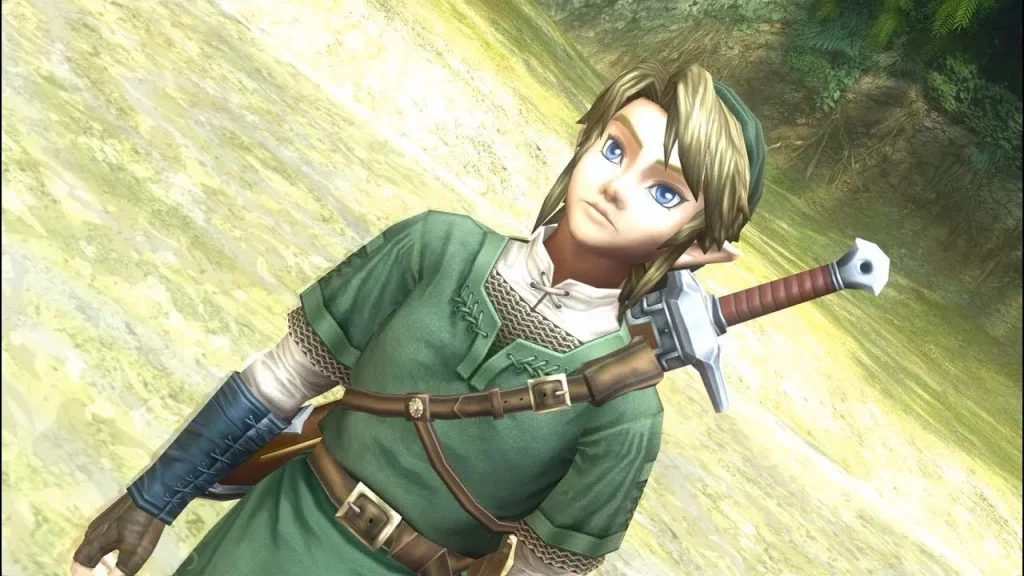
Also, much attention was paid to the originally conceived ride. Although the team once again failed to bring a horse to the office, character designer Keisuke Nishimori personally rode the horse to get a feel for the process and add realism to the game.
Despite the emergence of new ideas for the series, development progressed with difficulty. So much so that Aonuma paid more attention to The Minish Cap and the upcoming Nintendo DS to escape the stress of the new “realistic” Zelda. This is due to the fact that, despite the presence of ideas, the game still did not have a solid structure. The gameplay for the wolf was interesting, but when playing as Link, everything was exactly the same as in the previous parts. Therefore, it was decided that Aonuma would become the game designer/game director, with Miyamoto personally taking over his role as producer.
Despite the fact that the gameplay demonstration at E3 2005 garnered positive reviews, Aonuma still felt that the game, already called Twilight Princess by this time, lacked uniqueness. Especially when compared to the prototype of the new Zelda for the Nintendo DS with its touch controls. At this point, Miyamoto suggested making Twilight Princess compatible with the upcoming Nintendo Revolution, which would later be named the Wii.
Despite Miyamoto’s concerns that the introduction of motion control via the Wii Remote would negatively impact the development schedule, he believed that it would have a positive impact on the game’s experience, especially in archery. Aonuma immediately agreed to add support for such controls in the hope that it would add uniqueness to the game. A month later, the decision was made to release Twilight Princess on both the GameCube and Wii, albeit at the cost of doubling the amount of work on what was already the most ambitious game in the series. For the sake of this, Satoru Iwata even offered to postpone the release for a year in order to definitely make a great game.
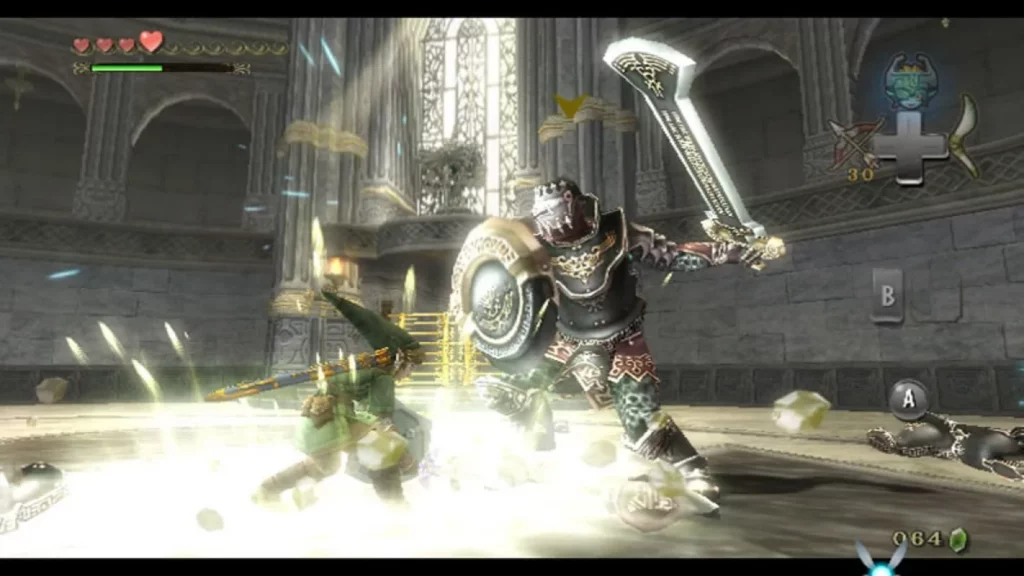
Although the delay was supposed to help the team add and finalize the game, at some point the project grew to such a size that it got out of control. It was the biggest installment of The Legend of Zelda in the history of the series, with incredible ambitions. Large spaces for moving on horseback, complex dungeons, some even made to look like they were in an open world. In addition, a huge number of tasks and mini-games The prologue in Ordon Village alone spans three action-packed days of play, to the point that Miyamoto even asked for a full guide to that phase of the game.
Due to the fact that this was the first project of this magnitude for Nintendo, the development team practically caved in under its pressure. A huge number of game designers, each with their own vision of the game, constantly argued over the further development of Twilight Princess. Team leaders often lost sight of their employees, who at the same time could not properly perform their tasks. To deal with this, Aonuma personally assembled the game piece by piece, and Miyamoto gave instructions to the team to add important mechanics in his opinion to ensure interactivity and realism. For example, the ability to throw chopped pieces of wood into the river and watch them float. It took the same amount of time to create this function as it did to implement Link’s horse.
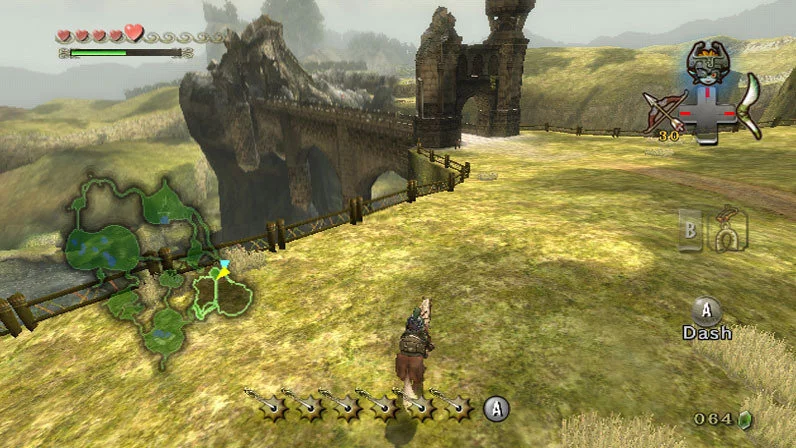
Traffic control also proved to be a challenge. Five months before the release at E3 2006, players were given the opportunity to play the demo, and they commented that they would like to control the Wii Remote like a sword. Aonuma thought about it himself, but before the presentation, he thought it would be tiring for the players. But in the end, it was precisely this control that got into the Wii version. Along with this, fishing began on the Wii Remote, which, oddly enough, Kazuaki Morita did again.
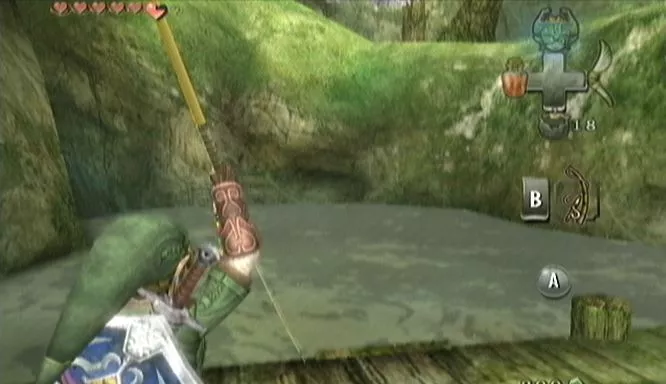
Interestingly, Link in the Wii version is right-handed. This happened due to the fact that the standard grip of the controller assumed the Wii Remote, which carried out the attack, in the right hand. But since Link is left-handed by canon, and this part was also made for the GameCube, a lot of the game’s animations would have to be urgently redone. Therefore, in the conditions of the already strong workload of the team, it was decided to make the world of Twilight Princess on Wii mirrored.
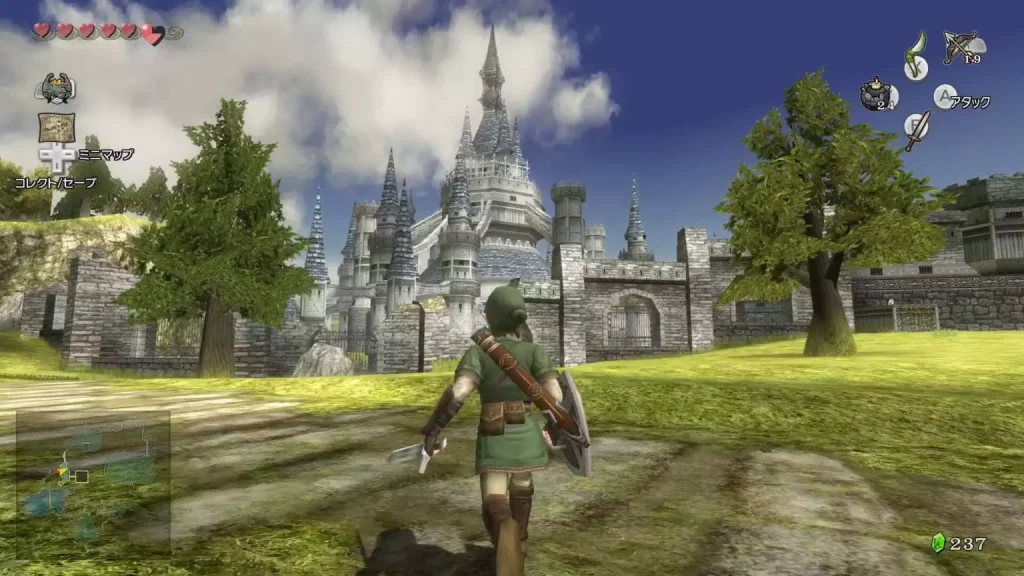
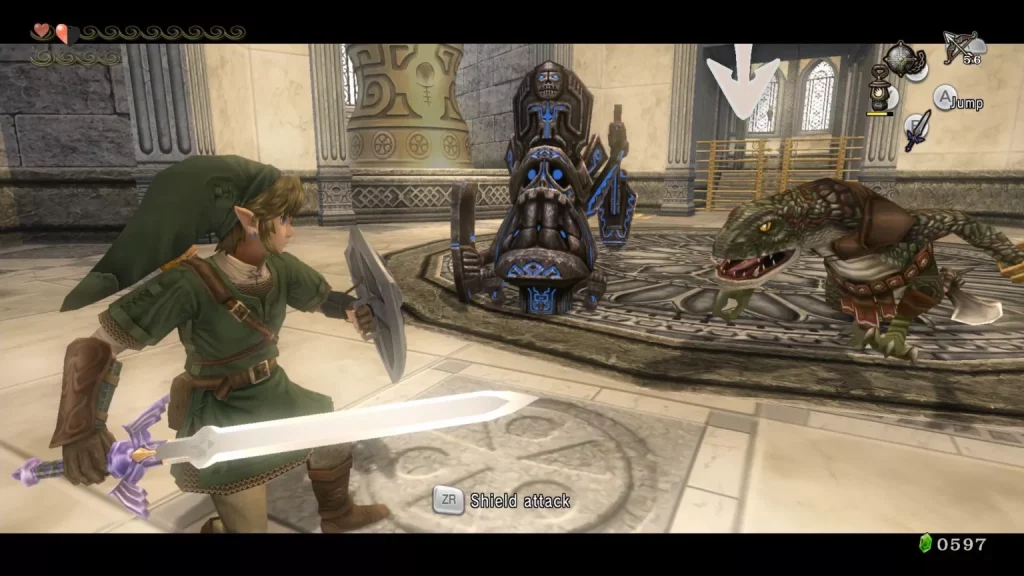
Twilight Princess was released in November 2006 in the United States for the Nintendo Wii and in December worldwide for the GameCube and Wii, eventually selling 8.85 million copies, breaking Ocarina of Time’s record. Even though the team failed to realize all their ideas, even though the game was criticized for some of the emptiness in the world, the new part of The Legend of Zelda coped with its task-to save the entire series not only from an identity crisis but from death in general.
On the other hand, compared to sales of other, more casual Wii games, Twilight Princess didn’t fare as well, especially compared to its budget. Since the Wii (and DS) were designed with a unique control in mind, Nintendo hoped to reach out to ordinary people who had not been very interested in games before. And the sales of Twilight Princess only strengthened their conviction that the future of the company lies in completely different games.
I think that many people who have bought a Wii are not necessarily those who are interested in such a game (Twilight Princess,-author’s note). And many people who would like to play it simply cannot find the Wii (at that time, there was really a huge demand for the Wii and it was quite difficult to buy a console-author’s note). But in general, I think fewer and fewer people are interested in big RPGs like Zelda [in Japan].
Shigeru Miyamoto
Later, an HD remaster was released for the Wii U, based on the GameCube version. In addition to improved graphics and additional second-screen features, some game simplifications have been made. For example, the wallet at the beginning of the game holds many more rupees.
The Legend of Zelda: Phantom Hourglass
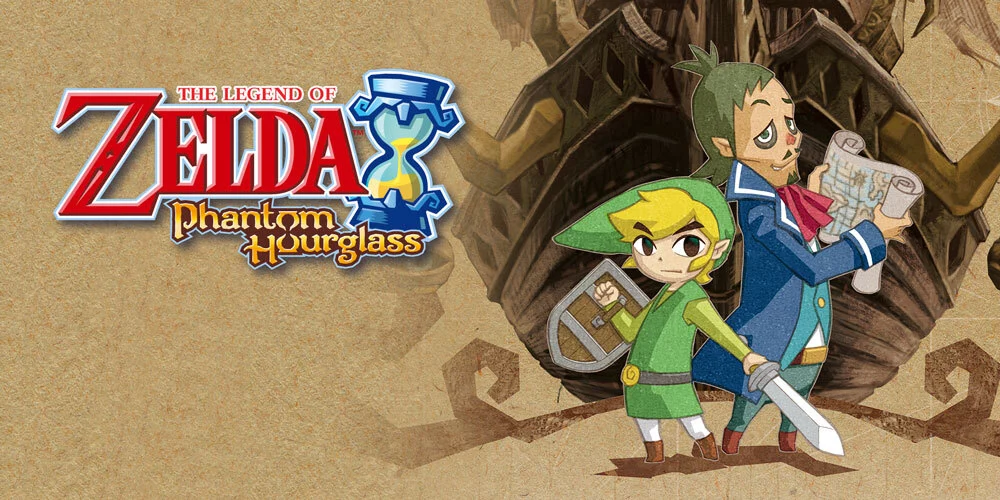
While Nintendo’s home consoles were in trouble, portables were the company’s last hope. But at the same time, everything could change at any moment. Realizing that it would be difficult for them to become a company of interest to players through conventional means, the decision was made to bet on hardware innovations that could offer a whole new experience. So in 2004, the Nintendo DS was born, as a premonition of what the Japanese audience really wanted—handheld consoles.
Both games are deadlocked. Creating complex games with advanced graphics, which used to be a golden rule that previously led to success, no longer works. The biggest problem is that [developers] need to cater to hardcore gamers who want bigger and more complex games, and they also need to cater to casual users who aren’t as game-savvy. The situation right now is such that even if the developers work a hundred times more, they can forget about the same increase in sales, since it is difficult for them to achieve the status quo. Obviously, games have no future if we continue to spend so much time and effort on development.
Satoru Iwata
Meanwhile, Aonuma came up with a not-so-obvious solution to the problem of player interest in new installments of the Legend of Zelda series. Working on two markets at once-someone else’s, but profitable, and our own, but in decline-it was decided to make a game for everyone. For the West, what everyone wanted, and for Japan, what no one expected. Two markets have different problems, and therefore they need to be solved by different methods.
Making a solution for the West turned out to be relatively simple—to make a realistic The Legend of Zelda. But what about in the home market, where consumers simply lose interest in all games?
While working on Majora’s Mask for the N64 and later on The Wind Waker for the GameCube, I began to worry that perhaps because of the growing number of buttons required to control the game or the 3D environment, new players might find these games intimidating and avoid them. I felt there were probably a lot of players who thought “Zelda looks fun, but I can’t play it” and gave up without even trying it. Since then, I’ve been constantly thinking about this “squaring the circle”: how to simplify the controls without losing the unique fun factor inherent in the games of The Legend of Zelda series.
-Eiji Aonuma
After the development of Four Swords Adventures ended, the developers began experimenting with the Nintendo DS. Daiki Iwamoto, the programmer of the previous installment, began to create a new prototype of a portable multiplayer Zelda, but Aonuma soon intervened and advised the team to develop new gameplay suitable for NDS control. While Aonuma himself was working on Twilight Princess and The Minish Cap, several people from the developers of the DS itself joined the team to continue experimenting. They also told Aonuma that the new console is capable of graphics similar to The Wind Waker. This caught the interest of Aonuma, who wanted to give the cel-shading style from his failed game a second chance.
Shortly thereafter, the first build of the new Zelda for NDS appeared, in which Toon Link moved around the 3D world on the top screen, and on the bottom there was a map with an icon that the player dragged to move the hero. Aonuma found this control unintuitive and requested that the two screens be swapped in order to control Link directly by touch.
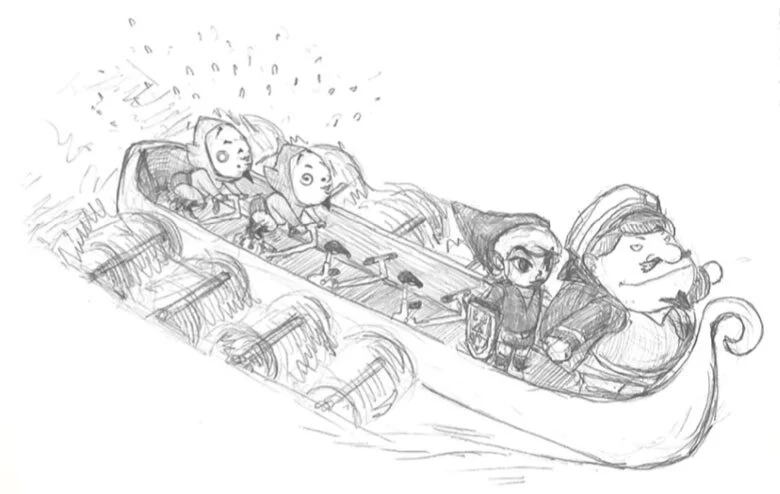
At the end of the development of The Minish Cap, Fujibayashi joined the team as a second game designer and writer. The original goal was to create a sequel to The Wind Waker, but at a smaller scale and, accordingly, with a shorter development time. But as the game progressed, it grew more and more. Like in the events of The Wind Waker, the action took place at sea, but this time the team took into account the mistakes made and relied on side quests and activities. At the same time, they continued to refine the touch control. Initially, some of the actions were supposed to remain on the buttons, but after the implementation of the boomerang, in which the player drew the flight path himself, it was decided to make the game completely on touch control.
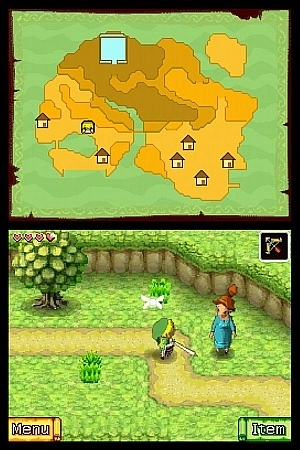
Under such management, dungeons were also built. They were designed in such a way that each room became a miniature puzzle in itself, often requiring the player to interact with several different items, switches, and enemies. To make the game, by then called Phantom Hourglass after one of the major new mechanics, more interesting, most of the puzzles were tied to using the touch screen to draw marks that would help the player with the passage. So, as an extra challenge, the team set a timer in the main dungeon, the same Phantom Hourglass, requiring them to return there six times during the game, each time improving the result and making notes to help in the next run. As if cooperating with a previous version of themselves.
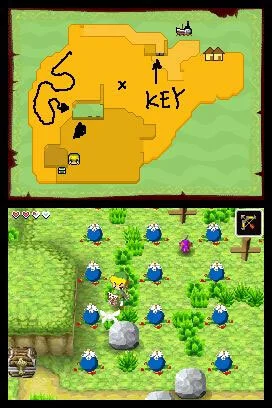
At the same time, Aonuma wanted Phantom Hourglass to play differently than any previous The Legend of Zelda game, so that it could appeal to the widest possible range of players. After the main development was completed, the stage of finalizing the pace, appearance, and controls began. Special care was taken to make the game accessible to Japanese children by allowing the player to click on the “kanji” symbol to see the “furigana” phonetic clues. Aonuma’s personal goal was to create a game that could rival Brain Age in terms of simplicity and broad appeal.
At first, we had an idea to create a good game in a short time. We thought Brain Age was our rival. BrainAge is like that smart exchange student. Zelda’s team isn’t top notch, but she’s studying hard. And then that exchange student comes along and easily takes first place without studying at all. This is very frustrating. After a long three years, we finally finished Twilight Princess, and the exchange student turned out to be one of those smart and cool ones. In the first place? Crap!
Eiji Aonuma
The team also wanted to continue experimenting with multiplayer in The Legend of Zelda’s gameplay, and they included a Battle Mode feature that could be played with two DSs connected to each other wirelessly. Aonuma revealed that the idea was that Link couldn’t see his opponents until they made a move. On the implementation of this team, “sat for several years.”
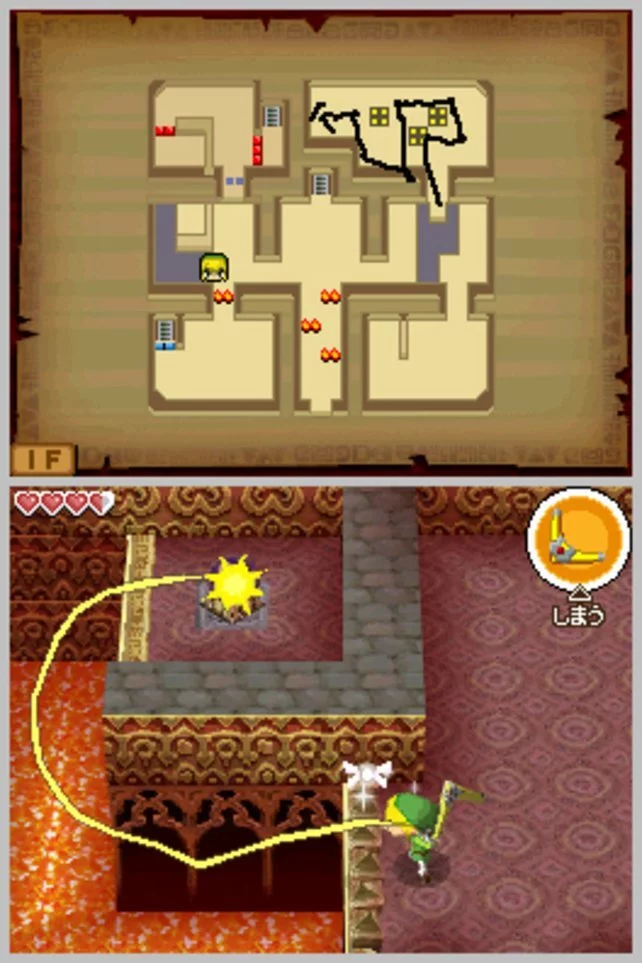
Phantom Hourglass was released in June 2007 in Japan and in October of the same year in the West, selling 4.76 million copies, of which 900,000 were in Japan, the highest number in that market since Ocarina of Time. In addition to good sales, the game attracted completely new people, expanding the demographic of the players to children and women, with its visual style and intuitive controls.
In addition to the Nintendo DS, Phantom Hourglass can be played backwards compatible on the 3DS, as well as via the Virtual Console on the Wii U.
The Legend of Zelda: Spirit Tracks
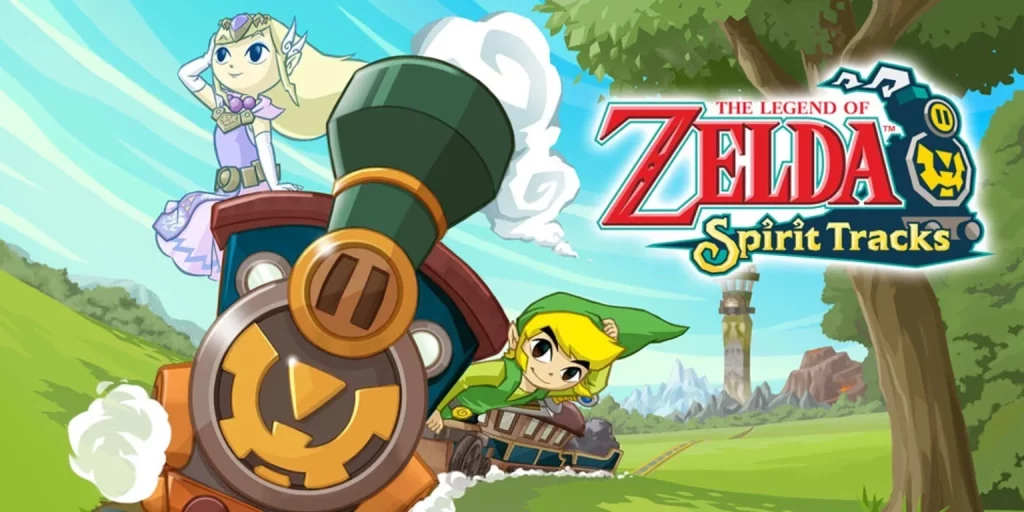
Immediately after the release of Phantom Hourglass, the development of a new part of the series began. Aonuma told the team to start developing a sequel using the same basic mechanics as Majora’s Mask did with Ocarina of Time. This time, Aonuma wanted to move away from the concept of sea exploration and return to moving on land, so that players could discover new places by traveling across wide expanses of land. Aonuma’s son loved the picture book The Tracks Go On, in which a group of children laid railroad tracks to explore the world. Aonuma often read this book to his son, and he liked the idea of blazing paths through Hyrule in The Legend of Zelda, feeling it would fit well with the series’ exploration spirit.
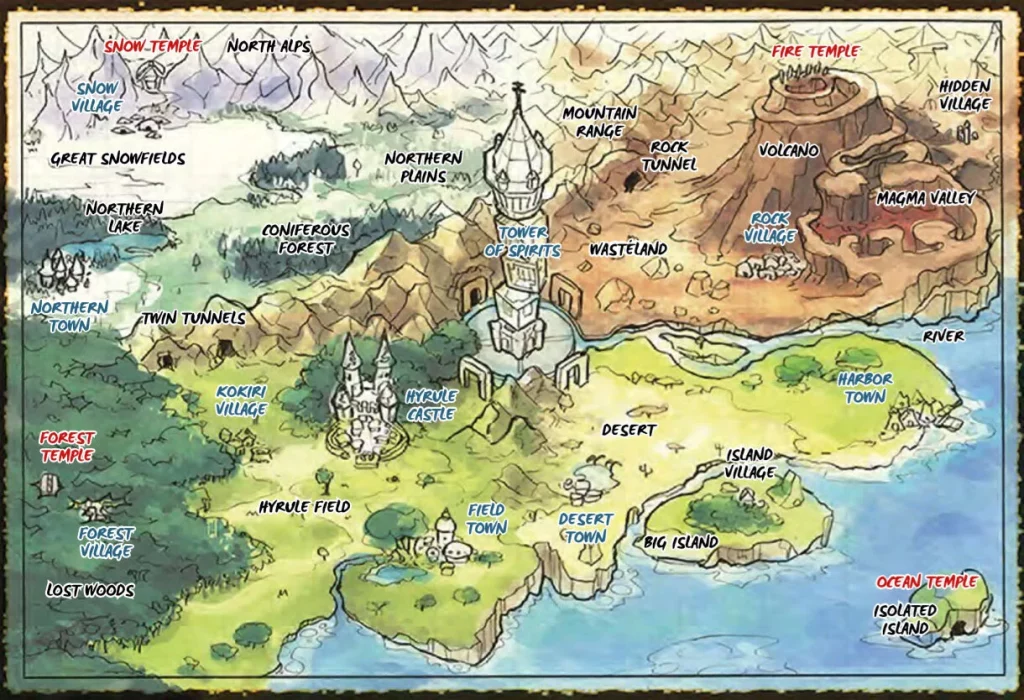
When Aonuma pitched the idea to the team, again led by Daiki Iwamoto, experiments began to determine how much freedom players could be given to forge their own paths. One of the problems early on was that players didn’t know where to go and sometimes went to places they shouldn’t have visited ahead of time. They eventually came up with the idea that players should restore the old paths erased by the curse. It became a compromise between complete freedom and complete leadership of the process.
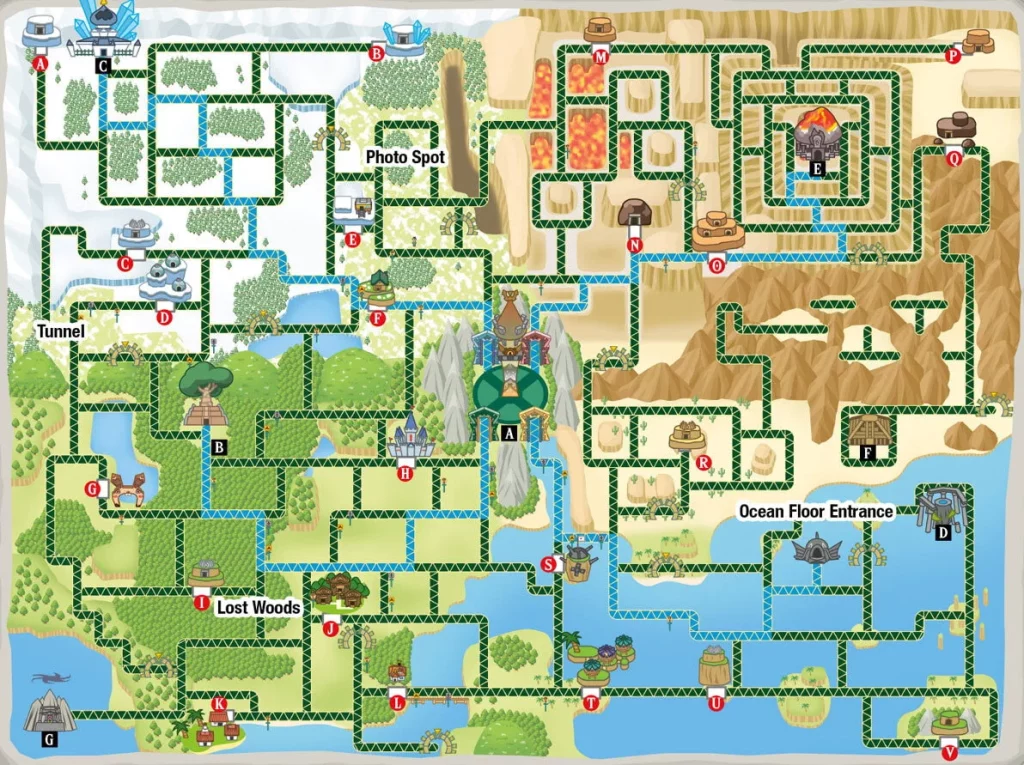
There was also a lot of controversy over the idea of the train. Some members of the team thought that the train didn’t quite fit the setting of The Legend of Zelda series. But in the end, after much deliberation, they decided to develop this idea further and not to go into the question of “What is the Zelda game” unnecessarily.
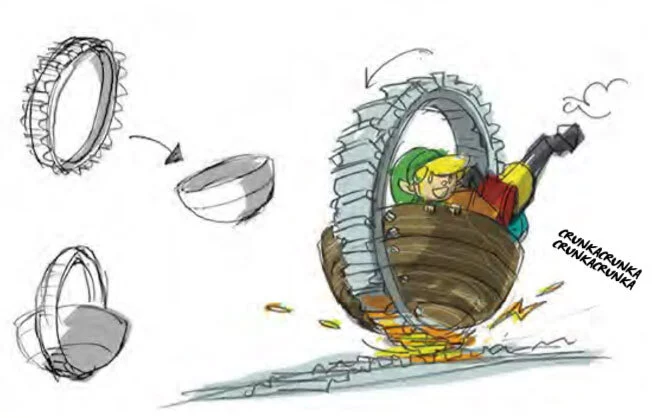
Another key feature of this part of the series was the control of two characters. In Phantom Hourglass, players could switch to playing as a Goron, and the team experimented with the idea of a second character in that direction for a while. Iwamoto found it interesting to have Link accompanied by Princess Zelda herself for a change, and this led to the idea of giving her the ability to create and control Phantoms. In order to distinguish the new Zelda from previous versions, she was created in a more comedic manner and is much more reminiscent of an ordinary girl of her age than a member of the royal family.
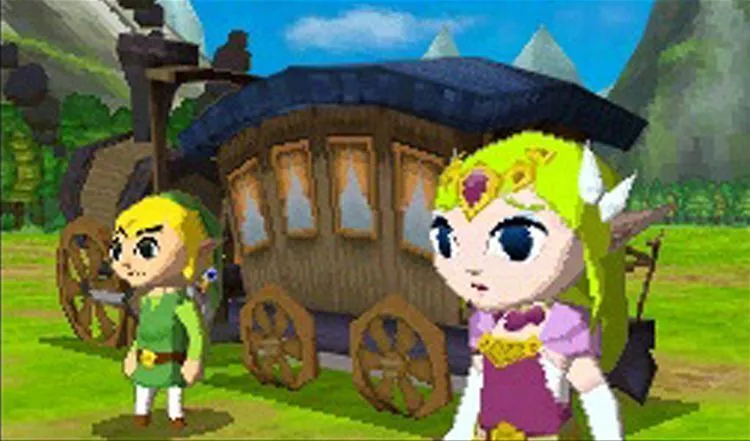
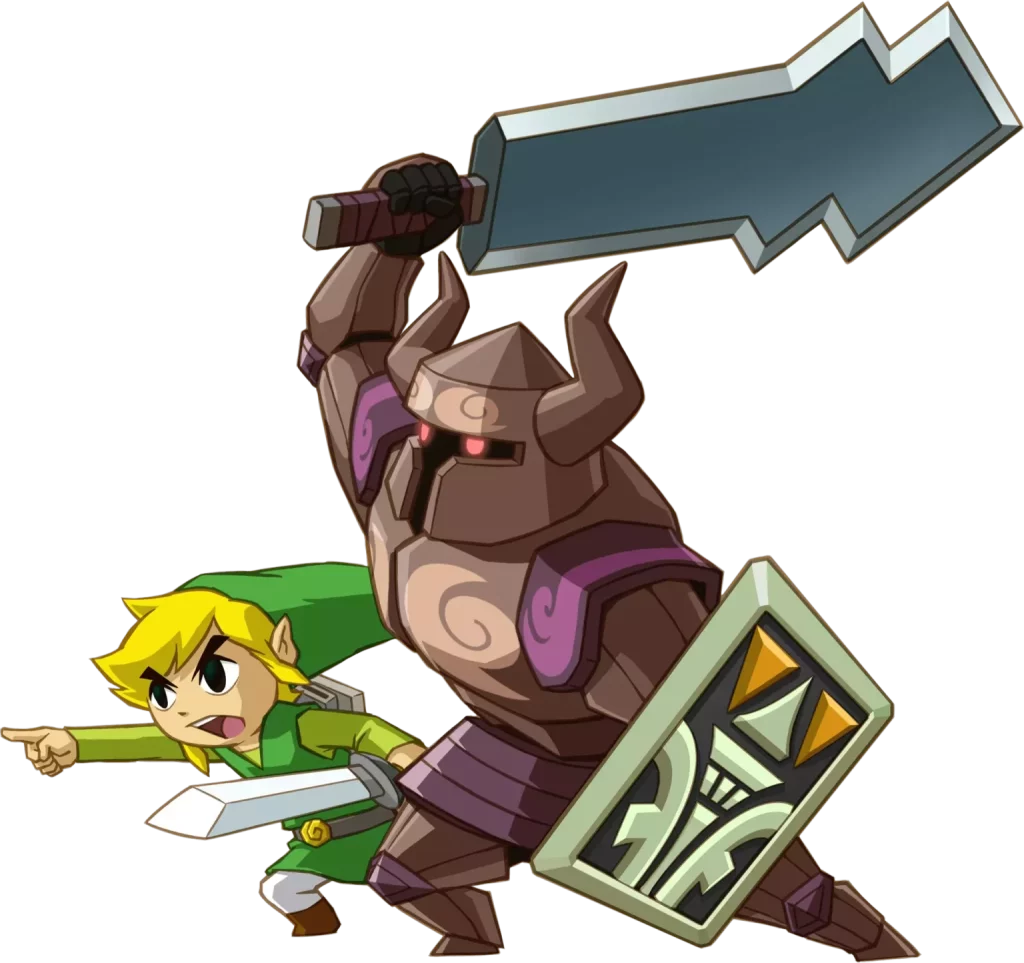
In development for only two years, the game, eventually named Spirit Tracks, was released in December 2009 and sold 2.96 million copies, of which 700,000 were in Japan. However, initially Nintendo and retailers overestimated the demand for the game in the home market, resulting in only 47% of the games being sold due to too many copies. Subsequently, the game was sold at a big discount just to sell the game in any way.
Like Phantom Hourglass, Spirit Tracks is playable on the 3DS and in the Virtual Console on the Wii U.
The Legend of Zelda: Skyward Sword
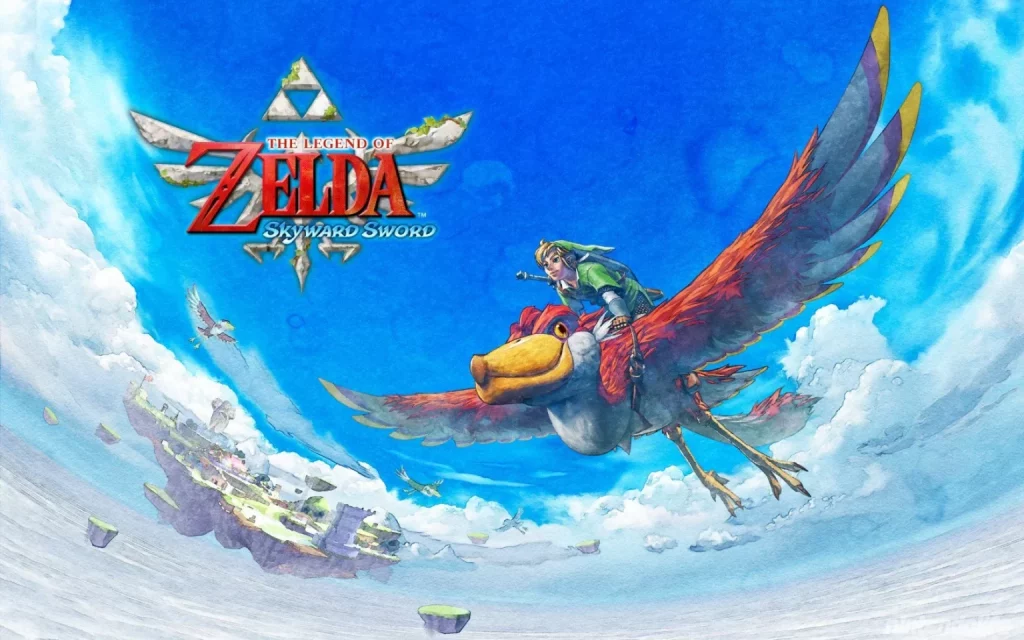
There has been a change in approach with Nintendo’s ongoing transition to a casual audience. As it turns out, this audience appreciates simplicity and straightforwardness rather than complex exploration games, which were the previous parts of The Legend of Zelda. This was also indicated by the sales of another important franchise for Nintendo—Mario. 2D entries in a series with a linear structure like Super Mario World outsold Super Mario 64 and Super Mario Sunshine, especially in Japan. According to Nintendo, this was because the 3D parts alienated casual gamers who were afraid of “getting lost” in the 3D environment.
That’s why Super Mario Galaxy and its sequel are fairly linear, and the orb-like levels are designed to make it easy for players to keep track of where they’ve been. Moreover, in the second part, there were more than just 2D elements and angles that created the impression of two-dimensional parts of the series. Since Super Mario Galaxy 1 and 2 sold fairly well, Nintendo felt it was the right way to go.
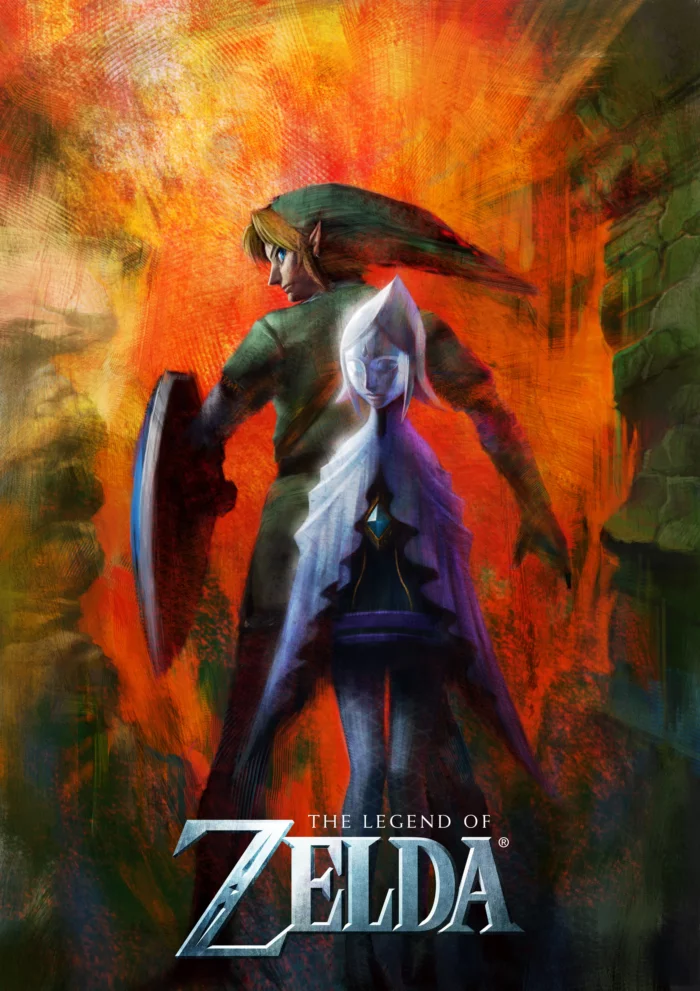
Meanwhile, development began on a new Wii title in 2007 when Fujibayashi submitted a design document to the team. Aonuma put Fujibayashi in charge of the project. After that, discussions began about using the Wii MotionPlus, a device to improve the accuracy of the Wii Remote. It was experimented with during the development of Twilight Princess, in an attempt to give the player more precise control of the sword. But due to difficulties with the new technology, the introduction had to be postponed.
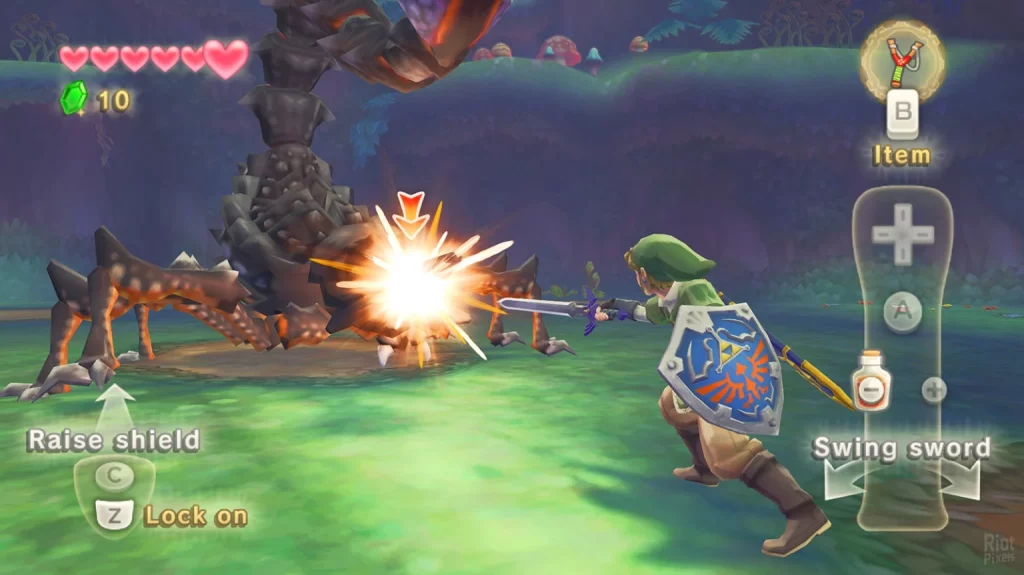
The main problem turned out to be, oddly enough, the high sensitivity of MotionPlus, due to which the creation of realistic and beautiful sword fencing became quite a difficult task. But after trial and error using the Wii Sports Resort fencing mini-game, the team finally managed to create their own combat system that could serve as the basis for the new game. And in place of the released attack button, they decided to give the “jerk” function. And with it, the mechanics of endurance.
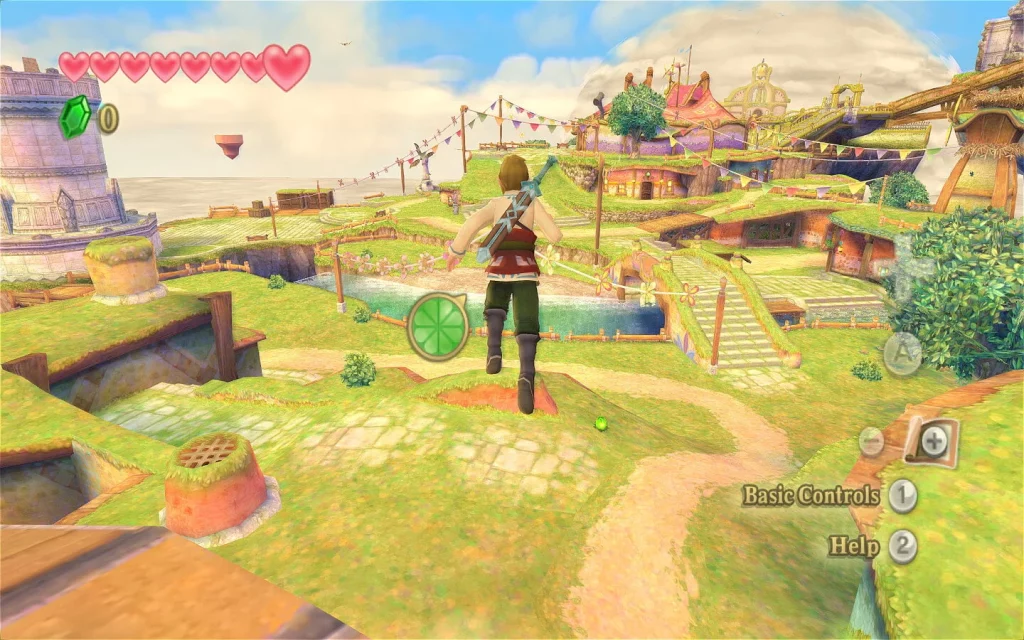
Having laid the gameplay foundation, it was time for the story and layout of the game. And then the same orientation towards the casual audience manifested itself. The team feared that the games were becoming too difficult. At the same time, the development of Twilight Princess proved to be difficult and exhausting, which is why Nintendo went to great lengths to make the new part more compact and less exploratory. The team began to design the game so that it had as little open world as possible and a greater variety of activities. As a result, the open world was completely abandoned.
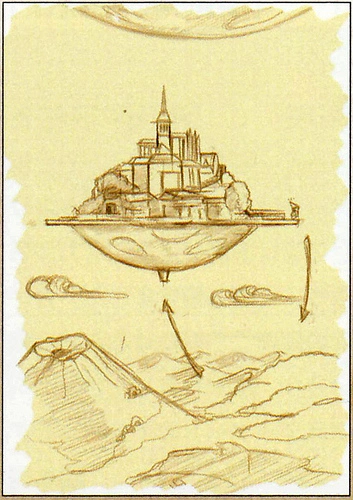
Aonuma explained this to Satoru Iwata
Aonuma: We usually need an overlapping piece to connect one area to another in a Legend of Zelda game with a continuous area.This time we made all kinds of gameplay for forests, volcanoes, and deserts, and we needed to build roads to move back and forth between these places. Each time, it was difficult to understand what to do with these roads.
Iwata: Roads are especially important for a game like The Legend of Zelda.
Aonuma: Correct.But the first thing we thought about this time was that maybe we don’t need these roads.
Iwata: What do you mean?
Aonuma: Well, Fujibayashi-san and I have been talking for a long time about how if we could make the gameplay in each area dense enough, then we wouldn’t need to physically connect those areas. Then the question arose, “How do we do it?”
Iwata: And what did you come up with?
Aonuma: Level selection like in Super Mario games.
Iwata: Level selection?
Yes, Aonuma.Super Mario games have a level selection screen. You waltz to it and jump inside [the desired level].
Given that level selection in Mario games was a simple process, the team felt that the same approach could be applied to The Legend of Zelda game with the same result. The end result was a skydiving system that would take Link to a new area from the sky rather than traversing the explored world. Experiments with blurring the line between the open world and the dungeon were still in Twilight Princess, and Aonuma decided to develop this idea. Each zone was designed as a dungeon, completely getting rid of the open world so that players could not get lost and also reduce development time. Moreover, the players were guided even by the elements of the world, as in linear games.
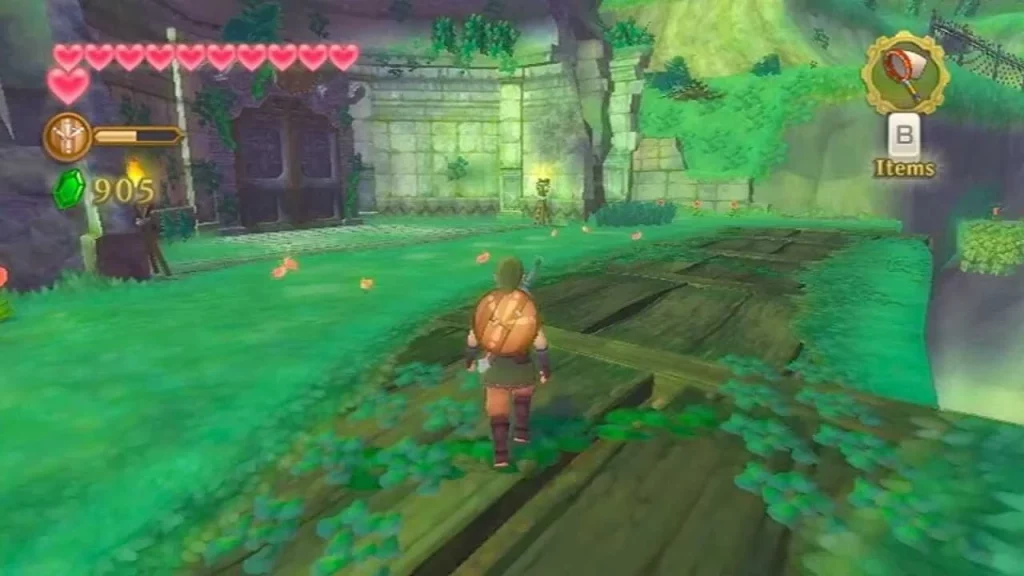
I think we were able to keep such a large project together because it was structurally simple. We are talking about all these “dense” places, but structurally there are only four of them: forest, volcano, desert, and sky.
Eiji Aonuma
The team also made unique mechanics for each of these zones. For example, in the desert, it was possible to move in time, like in Ocarina of Time, but at any moment. It also led to the creation of an ancient civilization made up of clay robots powered by electricity.
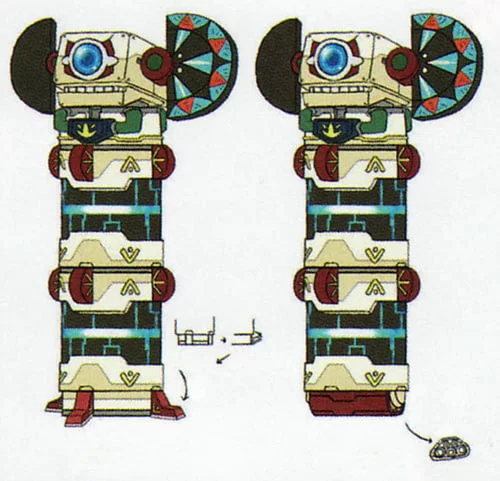
At the same time, they decided to make the new part chronologically the first and create a consistent timeline of the world of The Legend of Zelda. This idea came from the game’s focus on sword fighting.
This time the theme is a sword that uses the Wii MotionPlus accessory. When you think of a sword in The Legend of Zelda, you think of the Master Sword. From the very beginning, we decided to refer to the origin of the Master Sword. At around the same time we started talking about how it would make this story the first in a series, we thought about the birth of the Kingdom of Hyrule. On the other hand, we saw an island floating in the sky and thought, “How did it get there?”. We stopped at the sky and the surface of the world, and on top of that, he was supposed to tell the story of the creation of Hyrule with the untold story of the origin of the Master Sword.
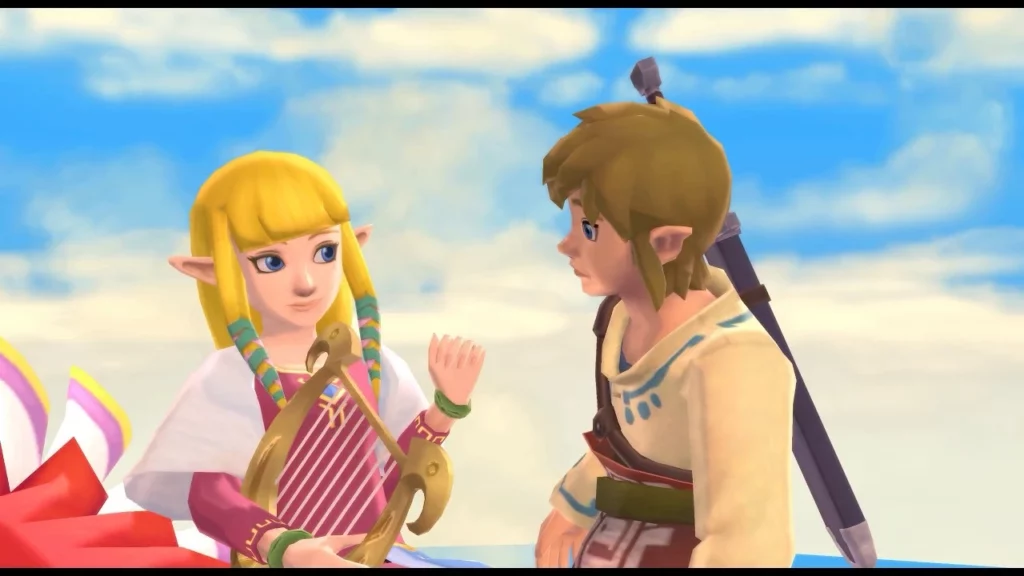
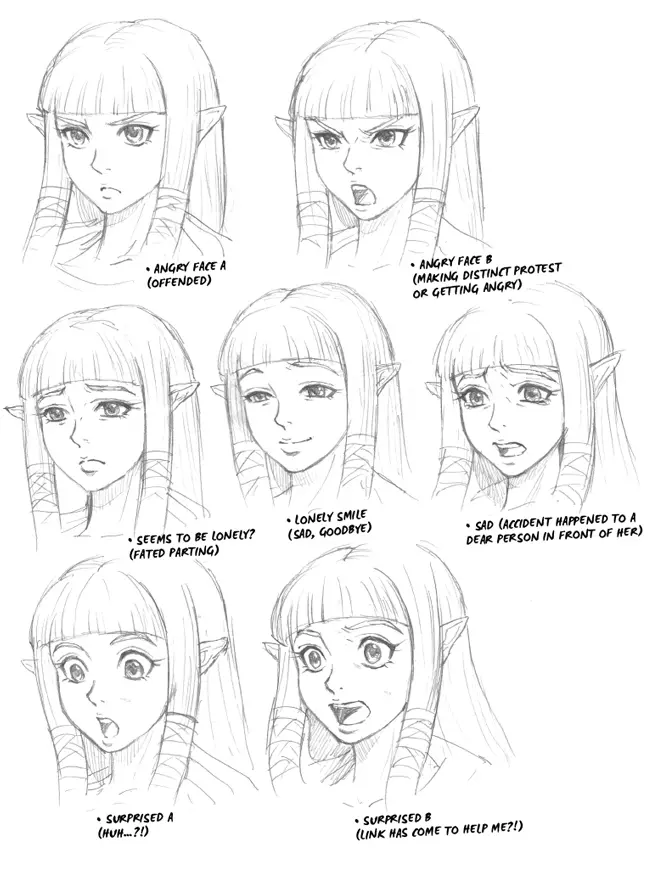
The new part was in everything with concessions for Japanese players and according to their tastes. For example, the plot begins with Link and Zelda, childhood friends, in high school, as in a typical slice-of-life drama popular in Japan. In addition to some fan service, it was also a device for the players to connect emotionally with Zelda herself. At one point, they even wanted to make her the second playable character with the help of the “Second Quest,” which would show the events of the game from her side. However, in the end, it was abandoned.
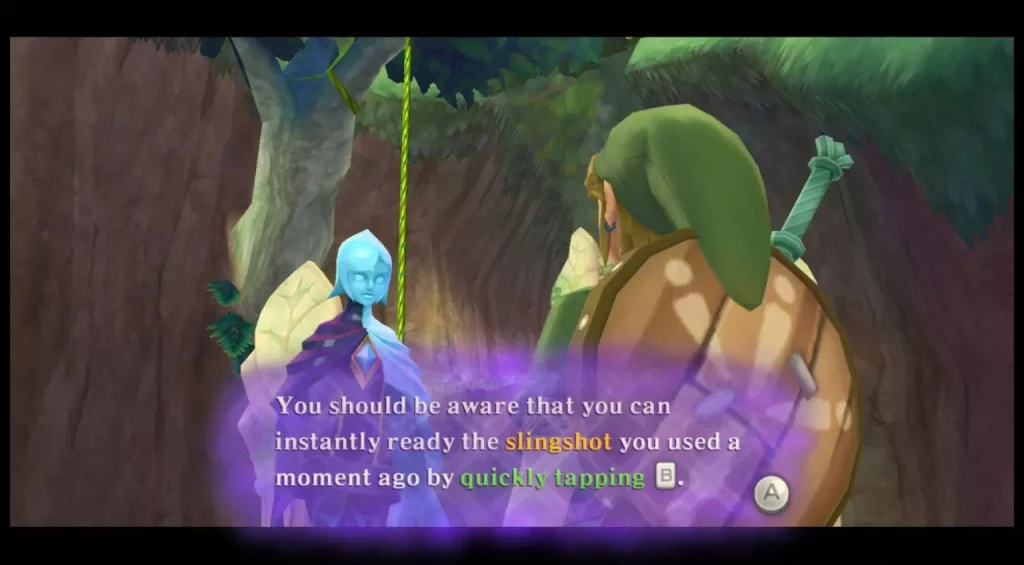
A new companion, Faye the Fairy, was also created to help the casual audience. She was supposed to advise the player in case of difficulties. However, due to excessive concern for the convenience of casual players, she was inadvertently made overly intrusive. So Faye constantly interrupted the player with hints and tutorials.
This part, called Skyward Sword, was promoted by one of the largest advertising campaigns in the history of Nintendo. Coinciding with the series’ 25th anniversary, it was accompanied by the Symphony of the Goddesses concert series, the release of the Hyrule Historia, and even a commercial featuring Robin Williams and his daughter, named Zelda after the series.
Released in November 2011, Skyward Sword, despite positive reviews from critics, sold 3.67 million copies worldwide and only 352 thousand in Japan, showing a worse result than The Wind Waker, which was considered a commercial failure. This was partly due to the fact that the release came so close to the generational change. but mainly because in trying to get into one audience, Aonuma’s team lost both. Western players did not like the linearity, and Japanese casual games simply ignored it. This was an important lesson for the company’s future. A future in which the next game in the series at the same level will be released on only one generation of consoles.
Some time ago, it was only legally available on the Wii and backwards compatible on the Wii U, but only with the Wii Remote. Despite rumors of a possible Switch port of Skyward Sword, Nintendo has long maintained that it is “not planned”. On February 18, 2021, a port was announced via Nintendo Direct with support for both joycon and stick control. The release is scheduled for June 2021.
The Legend of Zelda: A Link Between Worlds
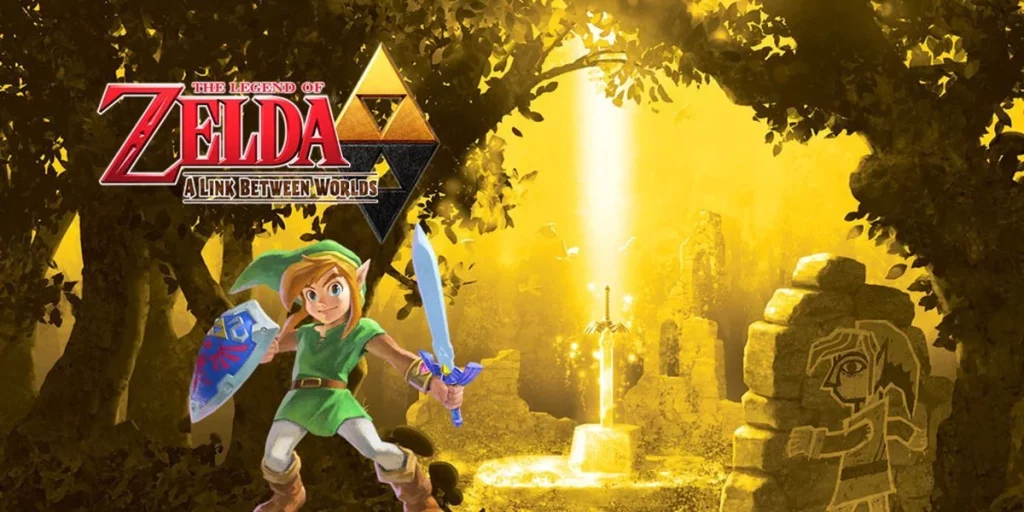
At the same time, things were not going so well for portable parts either. Mostly because after the release of Spirit Tracks, most of her team switched to the development of Skyward Sword. As a result, exactly three people remained on the development of the new portable part, of which two had somehow distinguished themselves before: Hiromasa Shikata, one of the game designers of Twilight Princess, and Shiro Mori, lead programmer of Phantom Hourglass and Spirit Tracks. They were tasked with brainstorming ideas for a new installment of The Legend of Zelda for the upcoming Nintendo 3DS.
Initially, due to the possibility of network play over a wireless connection, they began to think in the direction of developing the idea of Four Swords, but Miyamoto immediately rejected this idea, considering it outdated. For a long time, the trio couldn’t think of anything, until Shikata accidentally came up with the idea that Link could blend into the walls. Mowry turned this into a prototype in which Toon Link can transform into two dimensions and move through walls. This time, Miyamoto approved the concept. However, half a month after the show, the team was sent to help with other projects of the company.
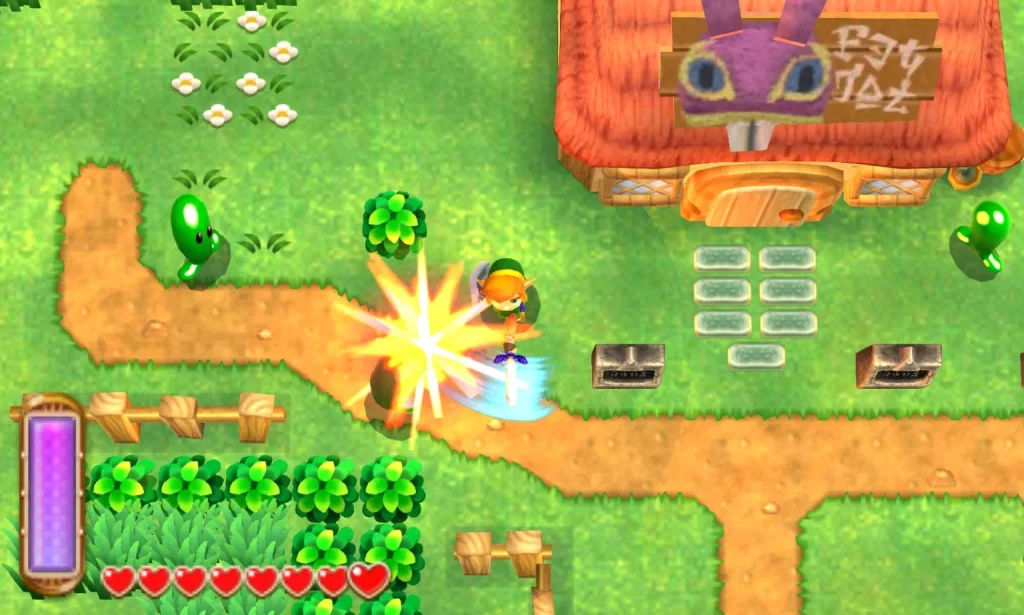
But before that, they managed to show the prototype to Aonuma in the hope that he would save this project and resume work on it in the future. As a result, this is exactly what happened right after the development of Skyward Sword was completed. Considering that only the authors would be able to properly develop their ideas, he put Shikata and Mori in charge of developing a new game.
In parallel to this, Aonuma and Miyamoto discussed the idea of a 3DS port of A Link to the Past. Miyamoto said that he would like to see the game in stereoscopic 3D, a staple of the 3DS, but Aonuma offered to make an entirely new game based on that prototype. It seemed to him that the usual port is not very interesting for the players, in contrast to the new idea, which can show the contrast between two and three dimensions.
By this point, Miyamoto had done little to no work on the main Nintendo games, but had mostly been mentoring the company’s young employees and simply approving or rejecting ideas for new games. When Aonuma received permission from Miyamoto to create a new 3DS title, it meant that he and the team were now fully responsible for the game’s design.
By the time the full-fledged work on this project began, Aonuma already knew the reaction of the players to Skyward Sword and realized that the audience did not like the linear The Legend of Zelda. So, it was necessary to change something else in the games of the series. And it was Shikata, who became the main game designer of the project, who began to propose these changes.
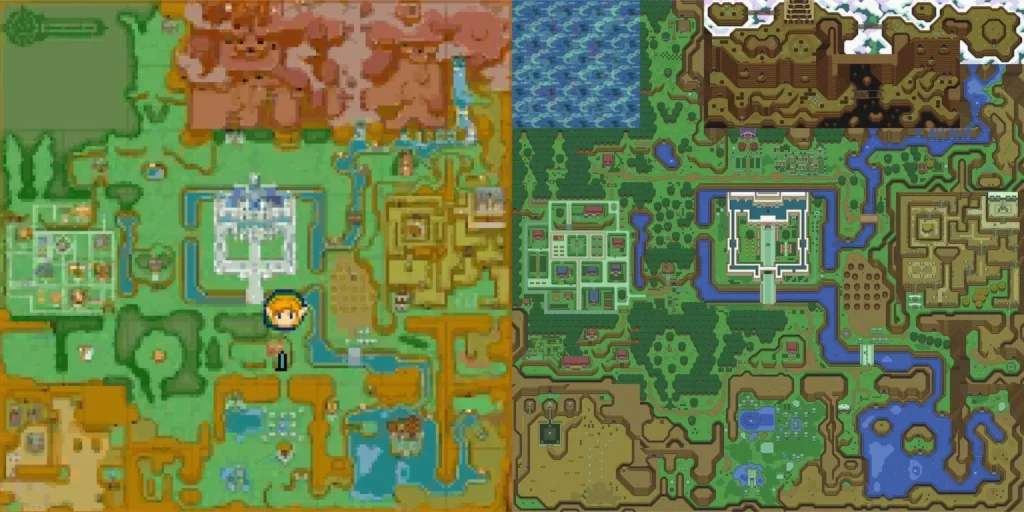
So he proposed a non-linear passage of the dungeons. At first, Shikata thought that A Link to the Past had such an opportunity, until after the second playthrough, he realized that this was not the case at all. Therefore, it seemed right to him to implement this in a new part. Aonuma liked the idea, but soon found many problems with it. The main one lies in the series’ traditional “new dungeon-new item” progression system. In order to implement non-linearity, it was necessary to give all the items to the player from the very beginning. So they came up with the idea of “renting items” that disappear from the player after defeat and return to the store. and with the possibility of buying them forever, but at a much higher price. This, according to the team, simultaneously raised the value of money in the game, provided an incentive to avoid death, and also introduced non-linearity to the game.
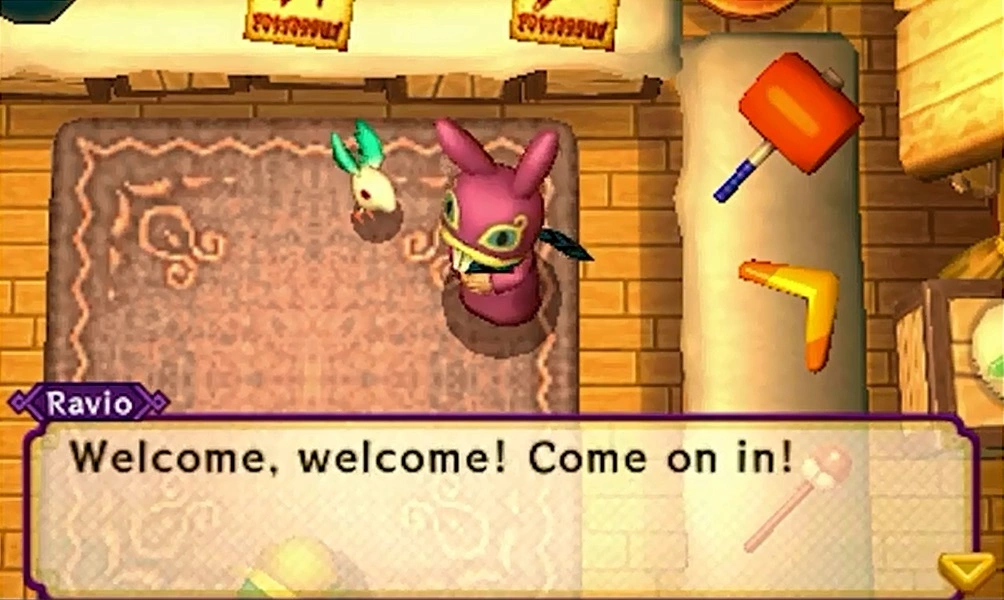
This innovation gave the developers a huge amount of creative freedom in how the game could be designed. Along with this, it was decided to add the ability to quickly move around the map, as well as create two versions of Hyrule, as in A Link to the Past. Only this time, a twisted version called Lorule. Soon the game was named “A Link Between Worlds.”
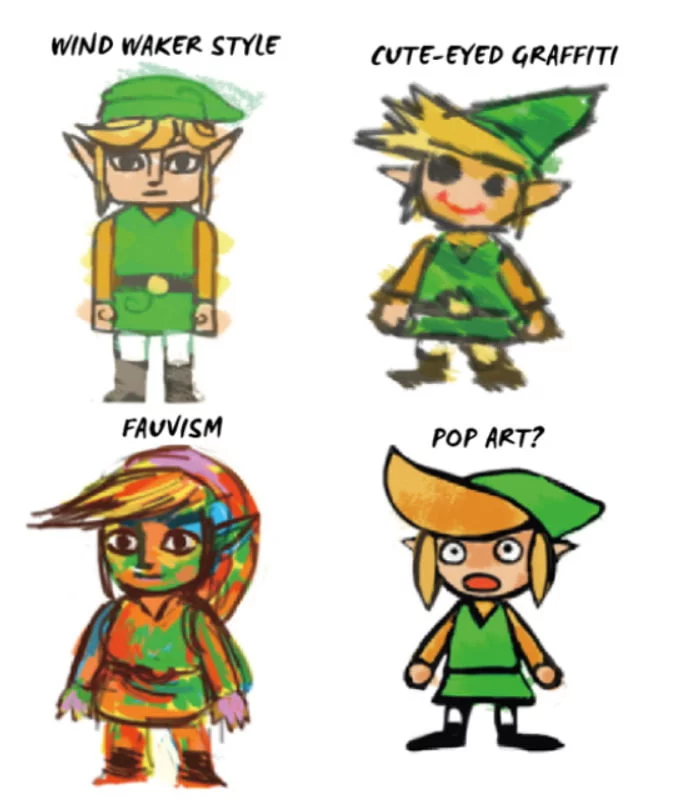
There were many experiments with the visual style. But if for the usual three-dimensional form it was decided to leave Cartoon Link with minor changes, but for the two-dimensional form, they tried many options, until they settled on a fresco stylization. This gave rise to the basis of the plot, in which the main villain is a crazy artist who turns people into paintings using magic.
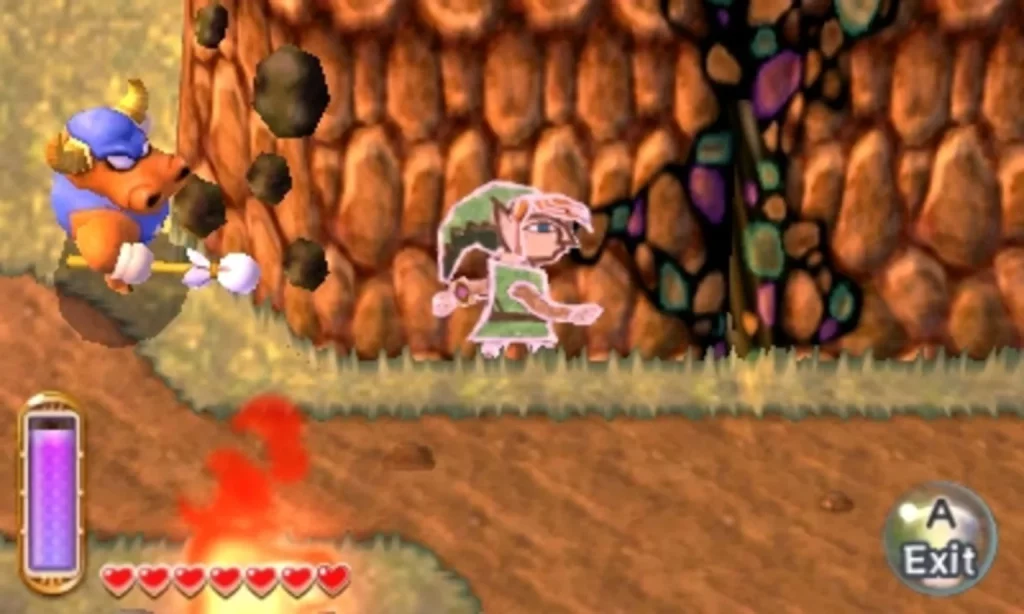
Since A Link Between Worlds was originally conceived to use stereoscopic 3D, all technical and visual aspects were made with it in mind. As a result, the game runs at 60 fps to ensure smooth 3D. The use of this technology also influenced the design of levels. This is how dungeons were made, with heavy use of layering and verticality to showcase a sense of depth that was nearly impossible in previous top-down The Legend of Zelda games.
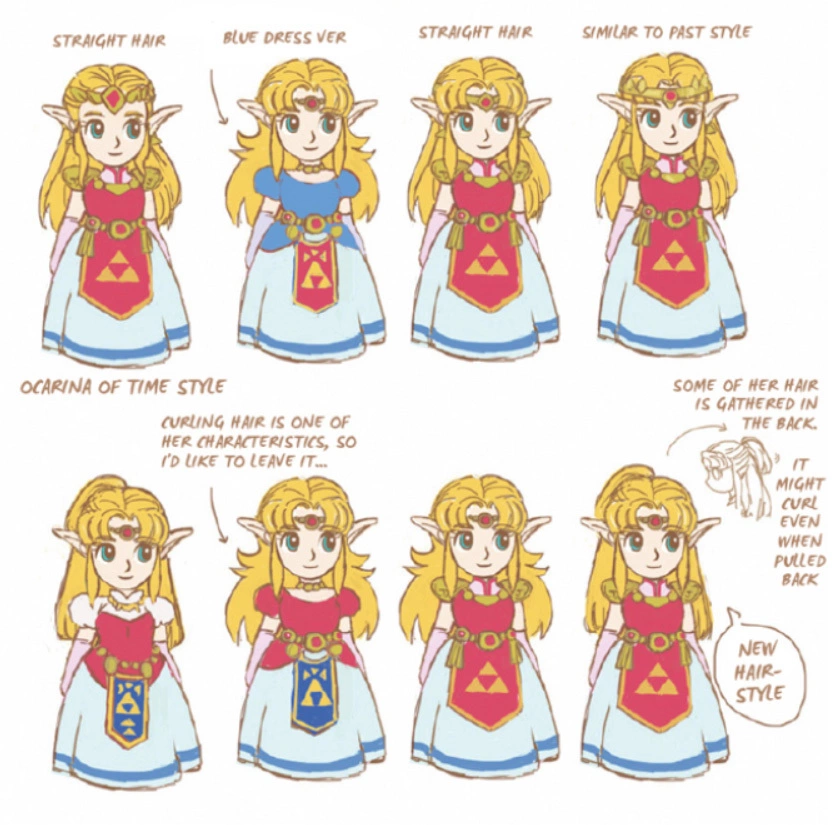
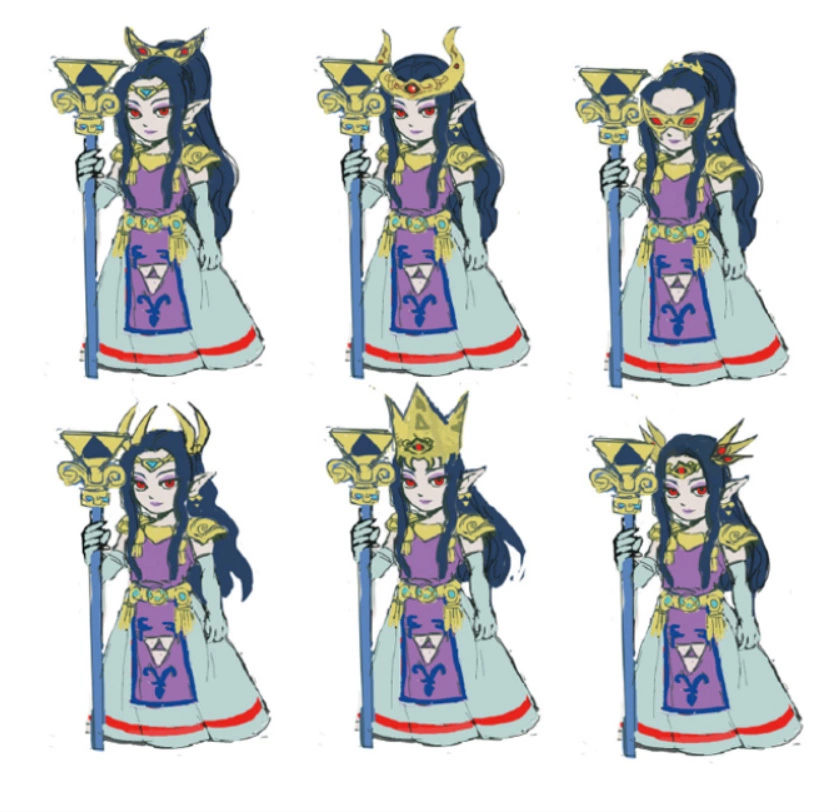
As development progressed, a new goal for A Link Between Worlds was formed-to challenge the conventions of the series’ traditions and make important changes to the established formula. This part can be called the first truly non-linear game of the series, which gave a whole new level of freedom of exploration. as well as puzzles, which this time actively used vertical gameplay. Aonuma has repeatedly said that this was only possible thanks to the new team members, similar to how Aonuma himself and Koizumi changed the series in Ocarina of Time at one time.
A Link Between Worlds was released in November 2013 in the West and in December in Japan, eventually selling just over 4 million copies. Most importantly, the game received critical acclaim from both critics and gamers alike, giving the team confidence that they could handle the new Wii U title.
The Legend of Zelda: Tri Force Heroes
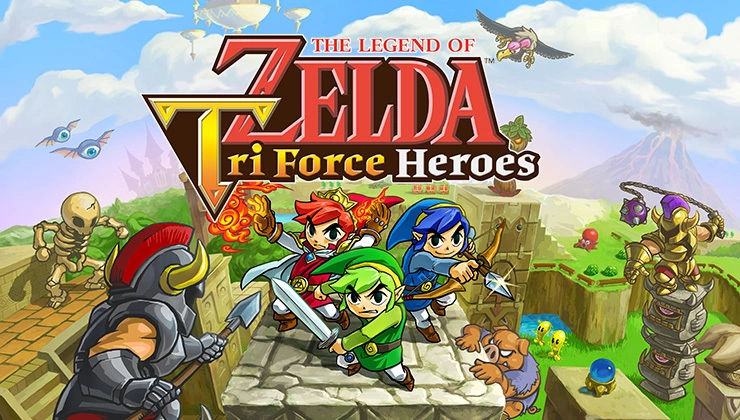
Immediately after the completion of the development of A Link Between Worlds, a new, portable part was launched. And once again, most of the team left for another project-a new game in the series for Wii U. Fortunately, at this point, Nintendo was actively collaborating with Grezzo, which had already made a port of Ocarina of Time and was working on Majora’s Mask on the 3DS. Now they are used to creating levels, enemies, and the interface, while the Nintendo team programmed the basic mechanics and developments for the levels.
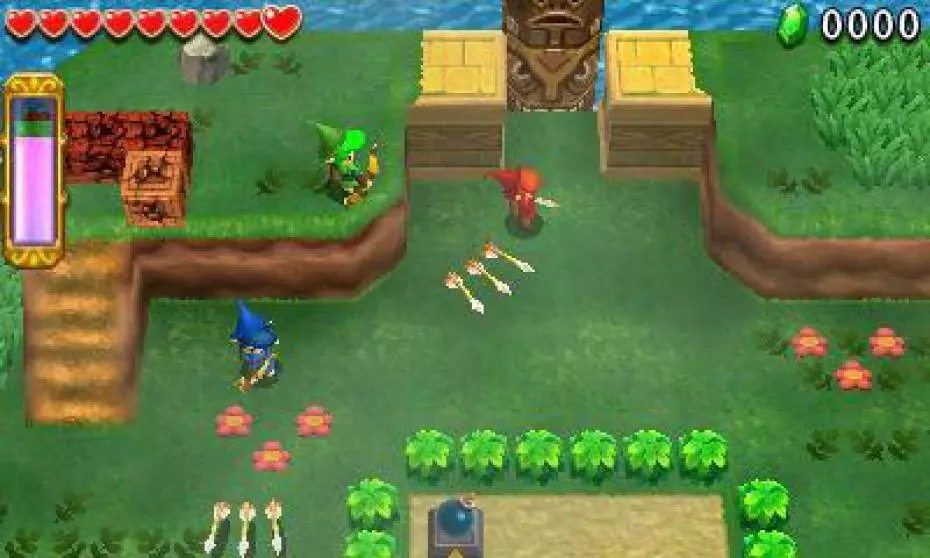
Even during the development of A Link Between Worlds, Shikata wanted to make a multiplayer game because he felt the 3DS, with its easy communication between consoles, contributed to this. And it just so happens that Mori later came up with a cooperative mechanic, the essence of which was that players would be able to climb on top of each other and form a totem pole. This idea seemed interesting to Aonuma, and he gave the go-ahead to continue the work. However, at the same time, he insisted on the possibility of a single-player game.
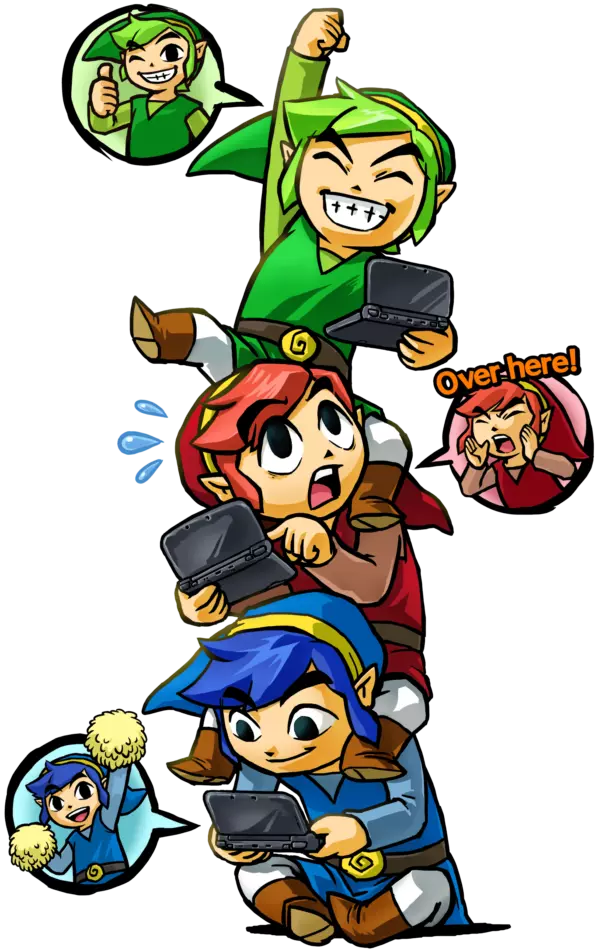
At an early stage of development, the team thought about the introduction of voice chat when playing online. However, Shikata ultimately felt that this would lead to situations where an experienced player gives instructions to others, which, in his opinion, contradicts the spirit of a joint search for solutions to problems. Instead, he came up with the idea of communication icons inspired by the Line messenger. These icons did not contain specific commands, but conveyed the player’s current desires. The team felt that this would be a puzzle in itself.
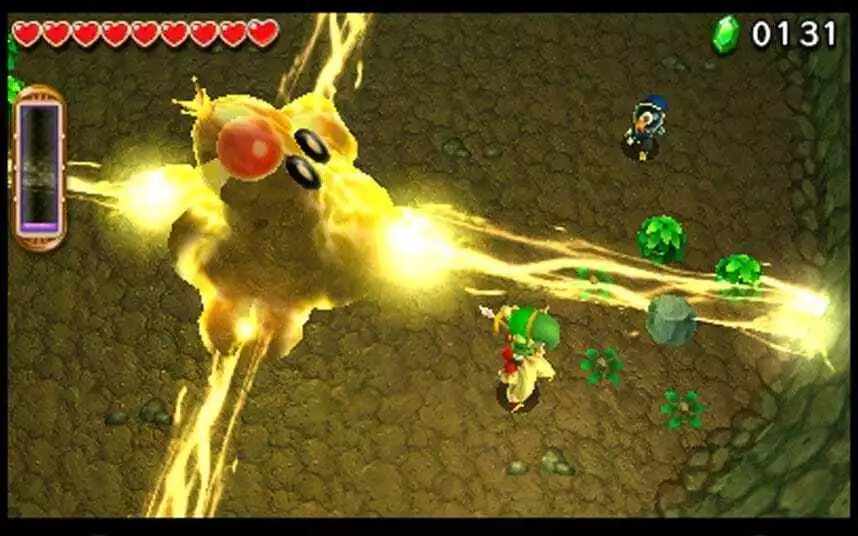
Ordinary riddles, on the other hand, were decided to be entirely focused on objects that are best suited for a cooperative game. So, for example, it was possible to grab other players with a boomerang. And as rewards, give outfits for the character in the spirit of customization, as in Phantom Hourglass and Spirit Tracks. In addition, this led to the creation of the game’s story about a fashion-obsessed kingdom and its princess, who is bewitched to constantly wear an ugly permanent jumpsuit, and the players must disenchant her. Along with this change of mood, Link’s image also changed to a more cheerful one, returning to the almost original Toon Link, in contrast to the less “cartoonish” one in A Link Between Worlds. But despite this, Nintendo will claim that this is the same Link.
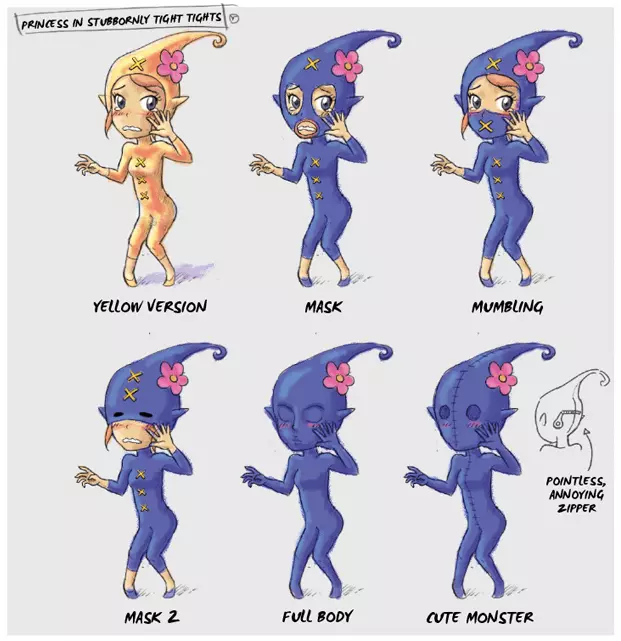
This part, which eventually received the name Tri Force Heroes (with the original name translated as “Three Musketeers of the Triforce”), was released in October 2015 and became one of the weakest parts of the series, with the lowest ratings and sales of just over 1.33 million copies. And also the strangest plot in The Legend of Zelda, which is completely canon.
The Legend of Zelda: Breath of the Wild
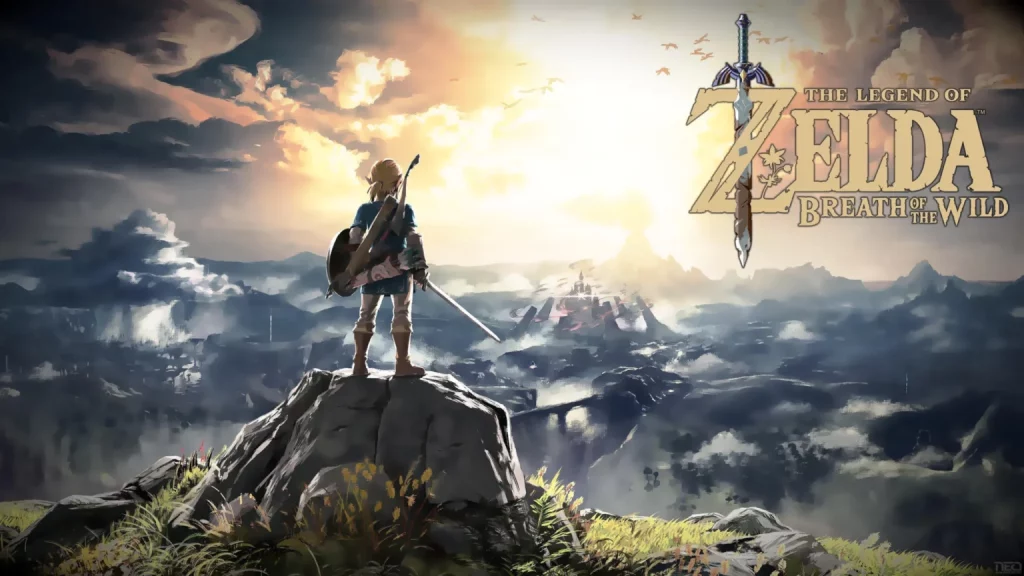
Meanwhile, after the successful ideas of A Link Between Worlds, Aonuma and the team seriously thought about what the new Zelda should be for Wii U. Players are unhappy with the linear adventure, indifferent to the series’ usual progression, and the success of the non-linear part was yet to come. But the team knew one thing: the foundations of the series must be changed. Reinvent it.
Fujibayashi was back at the head of development, deciding to radically revise the approach to the series. So he outlined the main ideas: the game should be in a large, open, seamless world and also seriously change the player’s progression. Aonuma suggested that we start by rethinking Link and his adventures. Moreover, giving the opportunity to speak to absolutely everyone, both Nintendo veterans and new employees, The most extraordinary options were proposed, up to and including Zelda about an alien invasion of Hyrule.
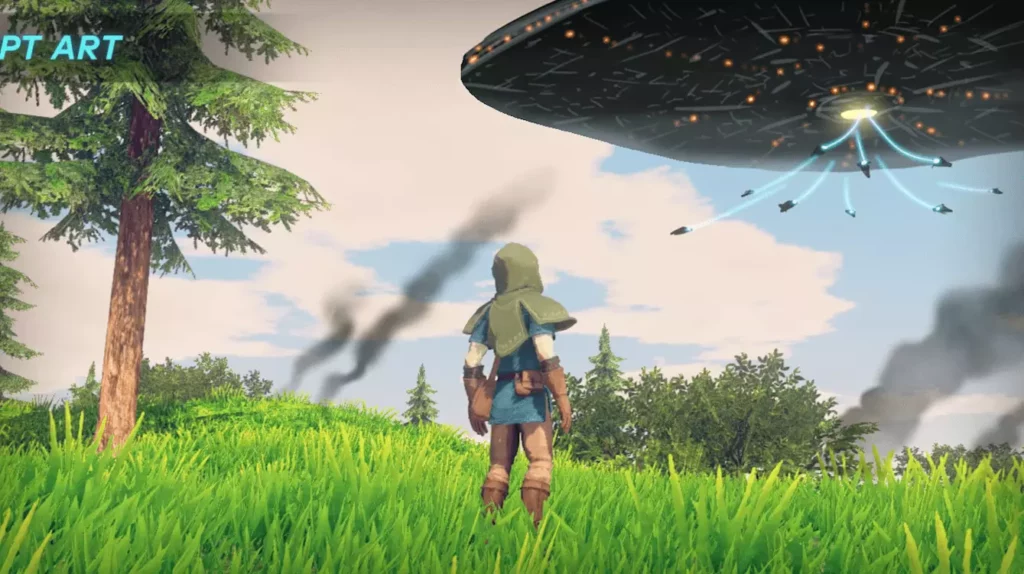

Interestingly, the image of Link in blue clothes with a cape and bags appeared almost at the very beginning. Since the game was planned with a completely open world, they wanted to emphasize the spirit of adventure. And the blue color of the clothes would stand out against the background of the green world. Well, because Aonuma felt that the usual image of a green tunic and a hat had become too predictable. And also, as his mentor Miyamoto did earlier, he asked not to make Link too “cool” so as not to create a feeling of a “perfect” hero who has nowhere to develop.
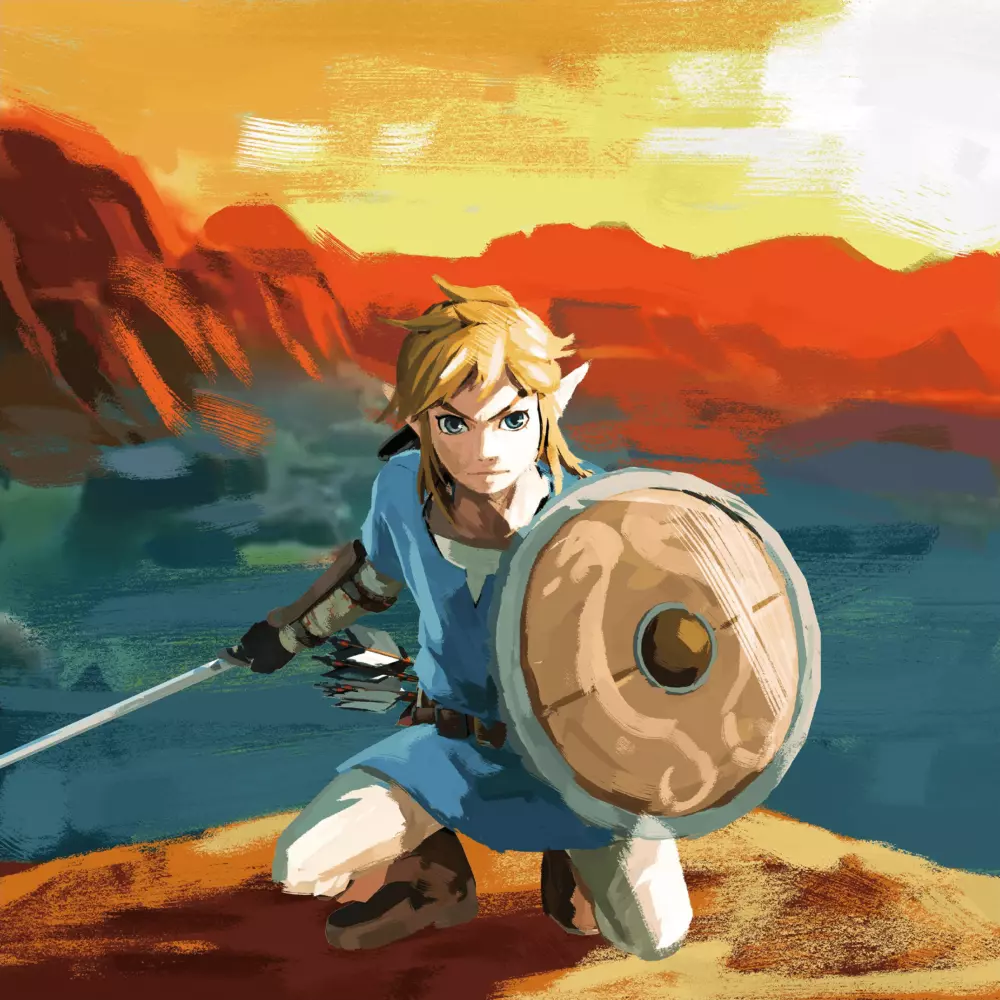
At the same time, the general style of the game was also thought over. Satoru Takizawa, art director of the project, experimented with a variety of options with the team. They tried PBR (Physically Based Rendering) with different Link models from The Wind Waker, Twilight Princess, and Skyward Sword. In the end, it turned out that it was The Wind Waker’s style that looked the most interesting. As a result, the team made a scene from there, but with modern shaders and lighting methods, after which they decided to use cel-shading again. but with realistic proportions of the characters, so as not to once again scare away the audience with a “too childish” appearance. According to Takizawa, but not too realistic, so as not to remind players of real life, but at the same time, so that the basic physics-based mechanics are read intuitively.
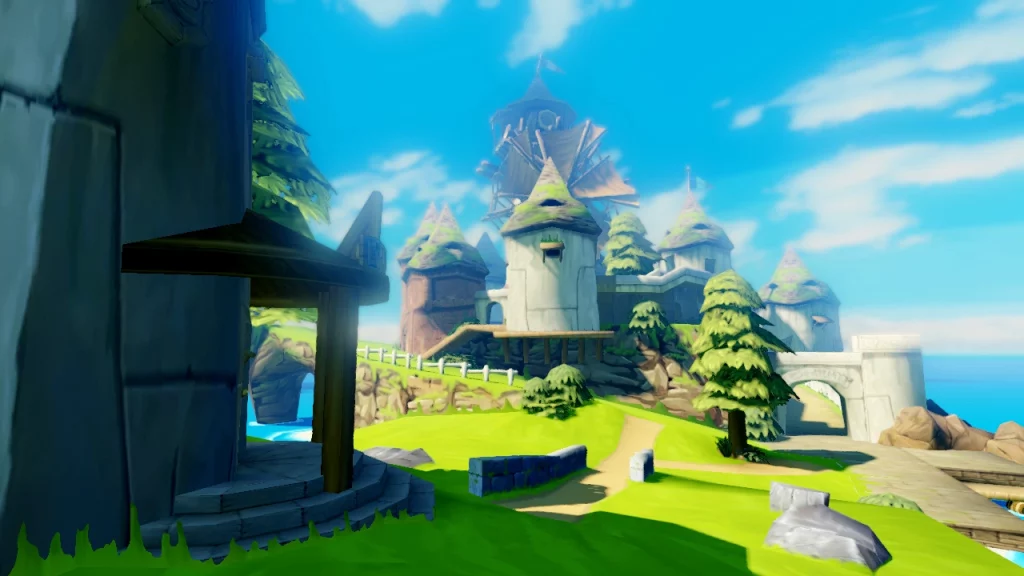
At the same time, Fujibayashi continued to think about how to rethink the conventions of The Legend of Zelda games within the framework of an open world. He wanted to create a game in which the player would explore the world, notice an interesting place, and try to experiment with what he could do in this world. Experiments in this direction began with the creation of a zone in which the player could go anywhere without impenetrable walls. If there was a rock ahead, Link could climb onto it, and then slide down and continue on his way. This turned the obstacles not into a limitation but into another type of puzzle: somehow get through directly or try to find a bypass. In Fujibayashi’s opinion, this brought a whole new freedom to the exploratory spirit of The Legend of Zelda. The innovation is so radical that it is the first game in the series to feature a jump button.
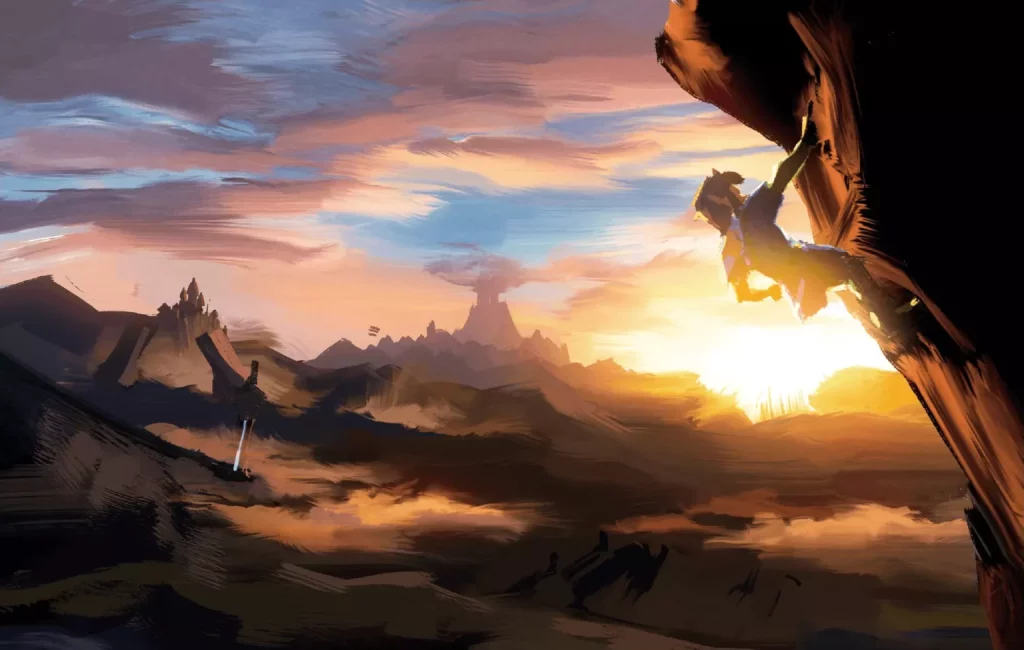
To convey this idea to Miyamoto and Aonuma, Fujibayashi and the team made a prototype of such an open world. They built an early version of the Plateau—the game’s starting location, where Link emerges from the Sanctuary of Life—and let people explore it.The team placed many climbable objects and secrets in places where Miyamoto and Aonuma could go during their exploration. When Fujibayashi was asked what the players would do in this game, he replied that they would be able to do “everything.” As a result, the team received permission to continue developing this idea.
Initially, open world experiments were carried out on the map of Twilight Princess as the largest in the series. They tried to make it seamless using the computing power of the Wii U. The team succeeded, after which the development of an entirely new map began. When working on the game world, the “field rule of triangles” was used, in which various triangular objects were scattered on the map. This form performed two functions at once: it attracted attention and gave players the choice to go through the top or around. Large triangles became mountains and served as landmarks that could be seen from a great distance. The middle triangles became structures that the player could explore. The small ones turned into stones and small obstacles to keep the players on their toes. Rectangular shapes were also used, which served to completely hide things from view with their gradual opening as they approached the edge.
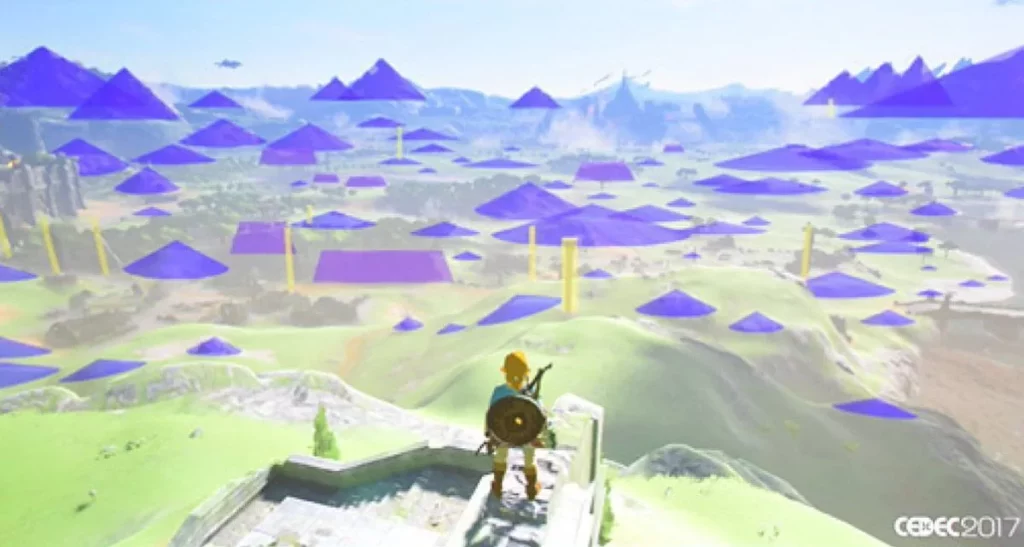
The main task was to fill the world as densely as possible. The team did this by balancing three key words: distance, density, and “time taken.” Since this was Nintendo’s first project of its kind, Fujibayashi and the landscape team had to take a map walk through their native Kyoto to determine how big they wanted the game world to be. This gave the team an idea of how to distribute events, encounters with enemies, and other such elements, considering both distance and density. The third keyword, “time spent”, was used to refer to the amount of time the player can spend on one element of the world, depending on its size and complexity.
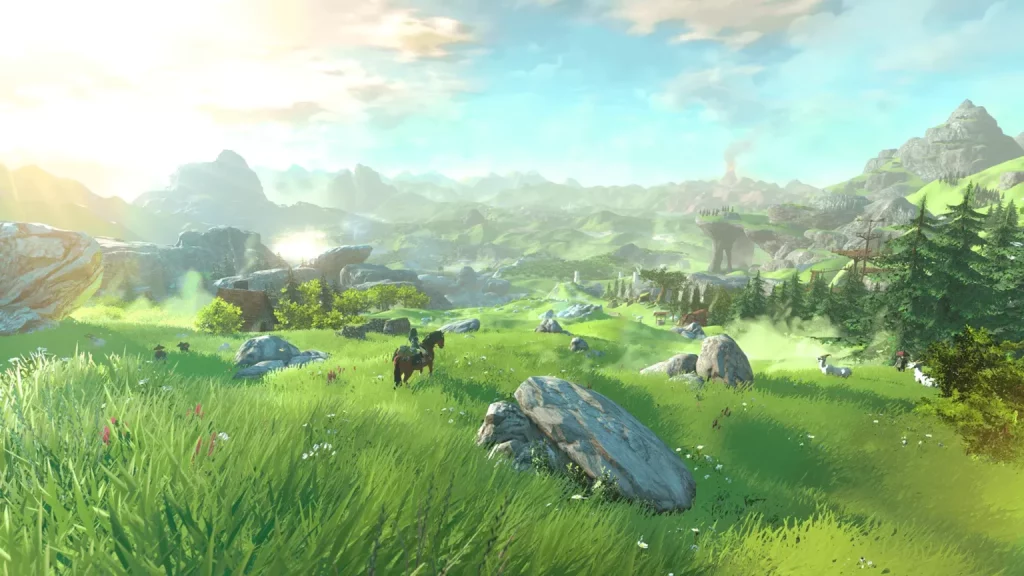
The team also tried to make sure that players had enough reason to visit every part of the game world. Initially, they tried to do this through the towers, filling the space between them with various events. However, it seemed to the testers that they were simply being driven from tower to tower, so the team decided to reconsider their approach. They began to use the concept of “gravity”, strategically placing objects of varying visibility and significance on the map, which were supposed to direct the player in different directions, allowing him to be distracted by them and constantly discover new things for himself. Given the number of testers involved, Aonuma asked the team to create a tool that allowed them to track the movements of up to a hundred players, updating their travel markers every hour. This allowed the team to identify areas of the map that players weren’t interested in and modify them to make them more appealing.
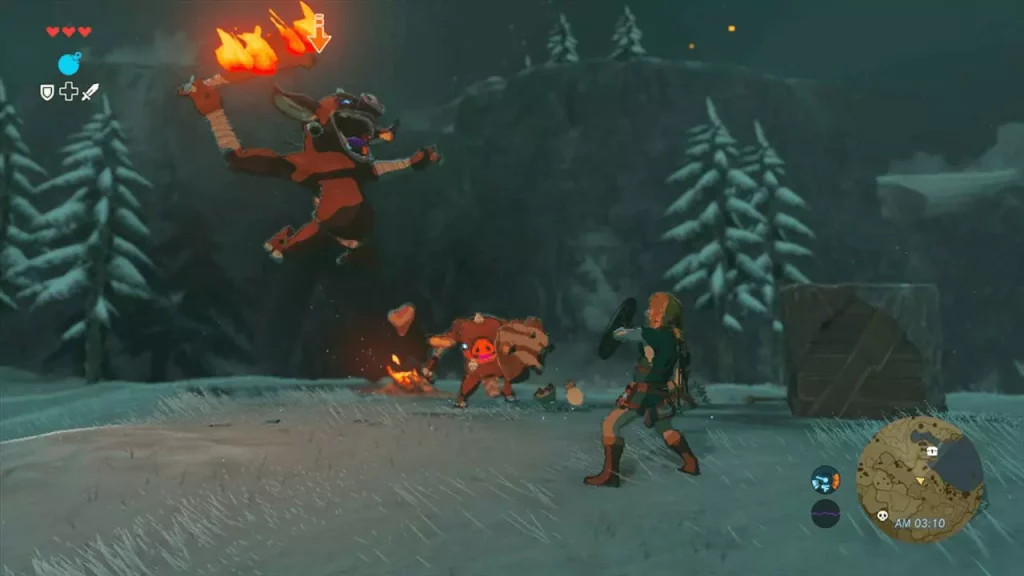
It turned out that this approach also has a different effect on players with different playstyles. So the more aggressive players gave priority to enemy camps because of the search for better equipment, and the researchers, on the contrary, activated the towers first. At night, the “gravity” approach worked in a different way: attention was drawn to those structures that emitted light.
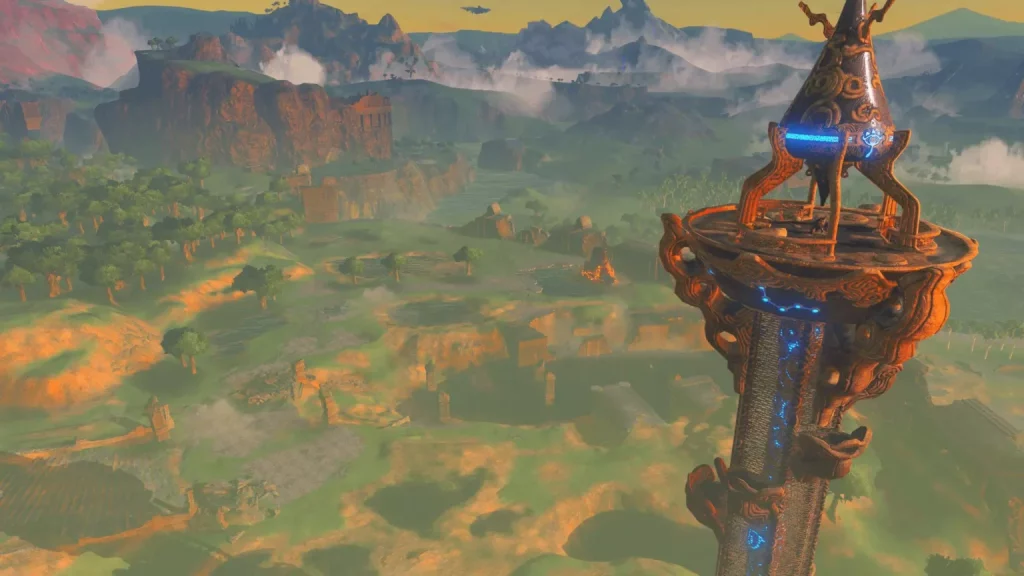
The map of the New Zelda was 12 times larger than in Twilight Princess. For help in creating it, the team turned to Monolith Soft, the creators of the Xenoblade series and who had previously helped develop Skyward Sword, for help. They had a lot of experience in creating open worlds and, most importantly, a large staff of designers who helped create environments and dungeons for the new part of The Legend of Zelda. During the development process, the team also realized that in open worlds, not only story events and quests are important but also ordinary travel and exploration of the world, so they left some areas simply empty but with beautiful views.
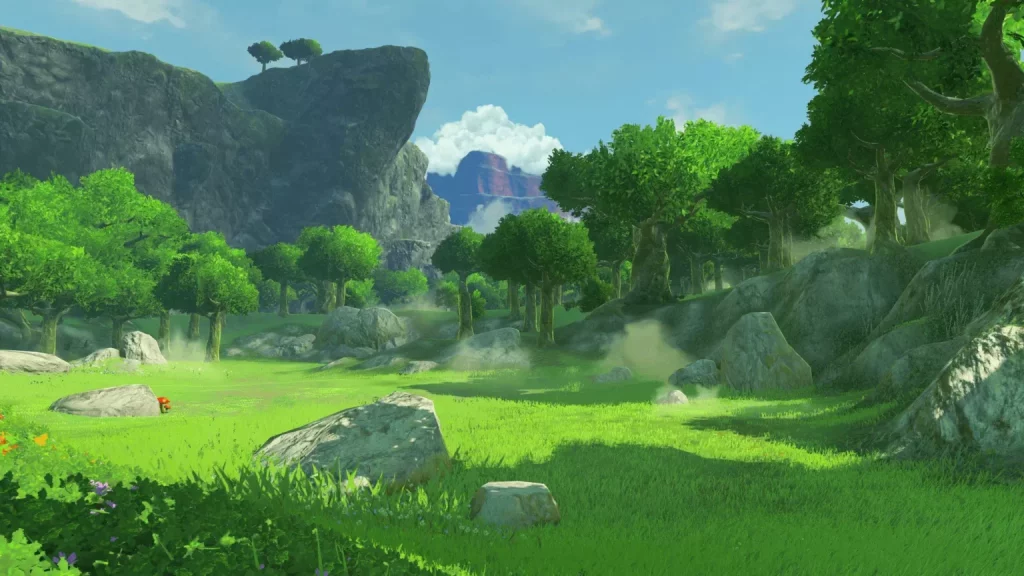
At the same time, the team also studied Western open-world games, specifically The Elder Scrolls V: Skyrim, to identify potential issues and how this type of gameplay could be improved. And we set ourselves the task of making the world in such a way that it can be studied in short sessions, so that players do not do the same thing for too long. Since dungeons in Skyward Sword sometimes took several hours to complete, the team decided to focus only on the four main dungeons and a number of smaller puzzles, which became the Sanctuaries of Trials.
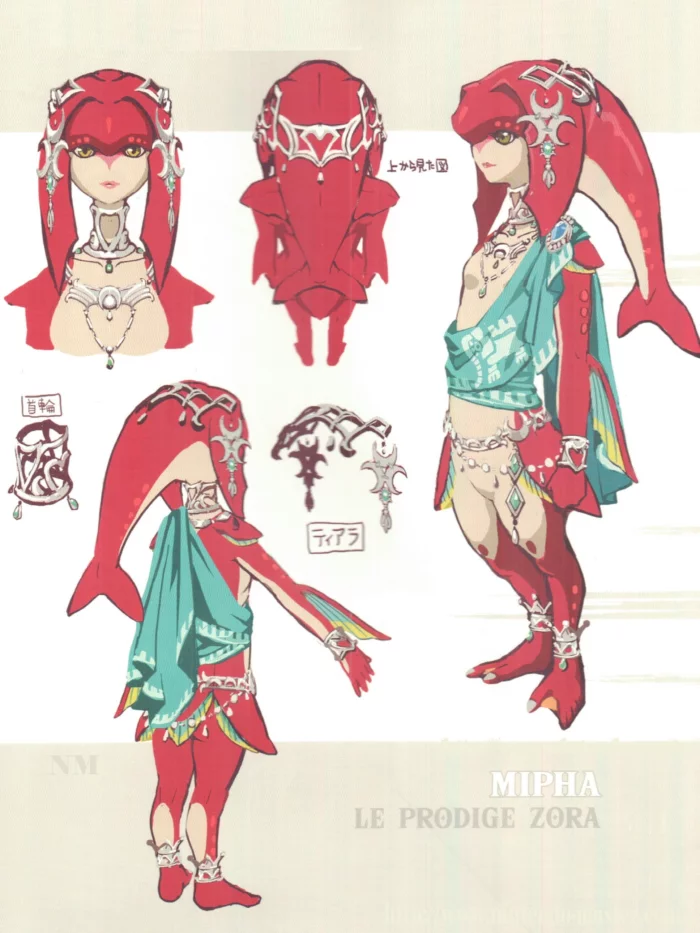
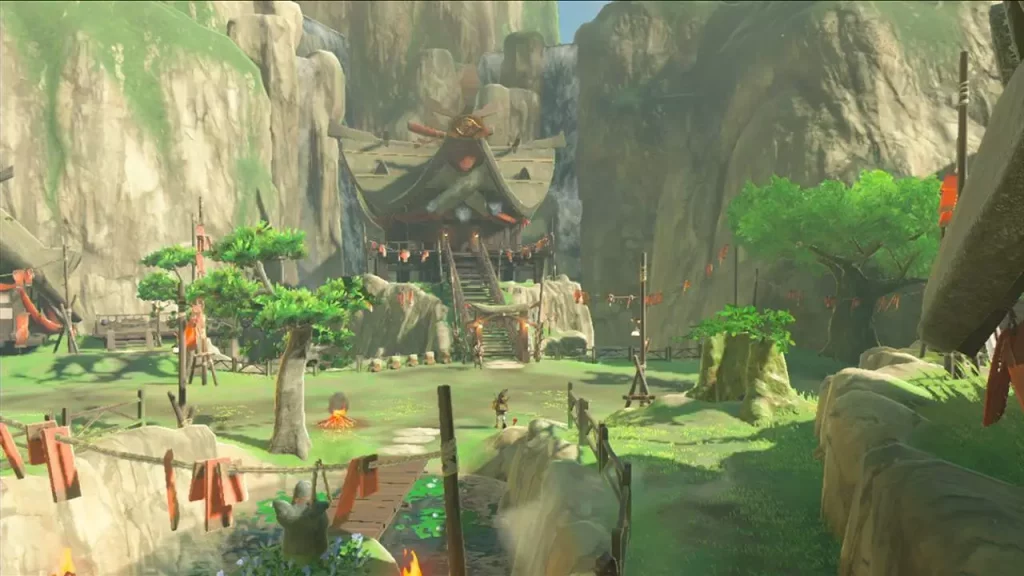
It took a lot of effort to create a convincing world. including the study and processing of the series’ main regions, tribes, and cultures The Shiika people, whose history is the basis of the world of New Zelda, have changed the most. They decided to make them in the Japanese style, inspired by the culture of the Jomon period. So the Shiika people began to resemble shinobi, and the village of Kakariko was modeled after a Japanese mountain village. In addition to them, we finalized the backstories for the traditional peoples of The Legend of Zelda—Gorons, Zora, Rito, and Gerudo. and also added a new one—the mysterious disappeared Zonai, whose legacy is reminiscent of the fact that Hyrule once belonged to non-Hylians and Shiika.
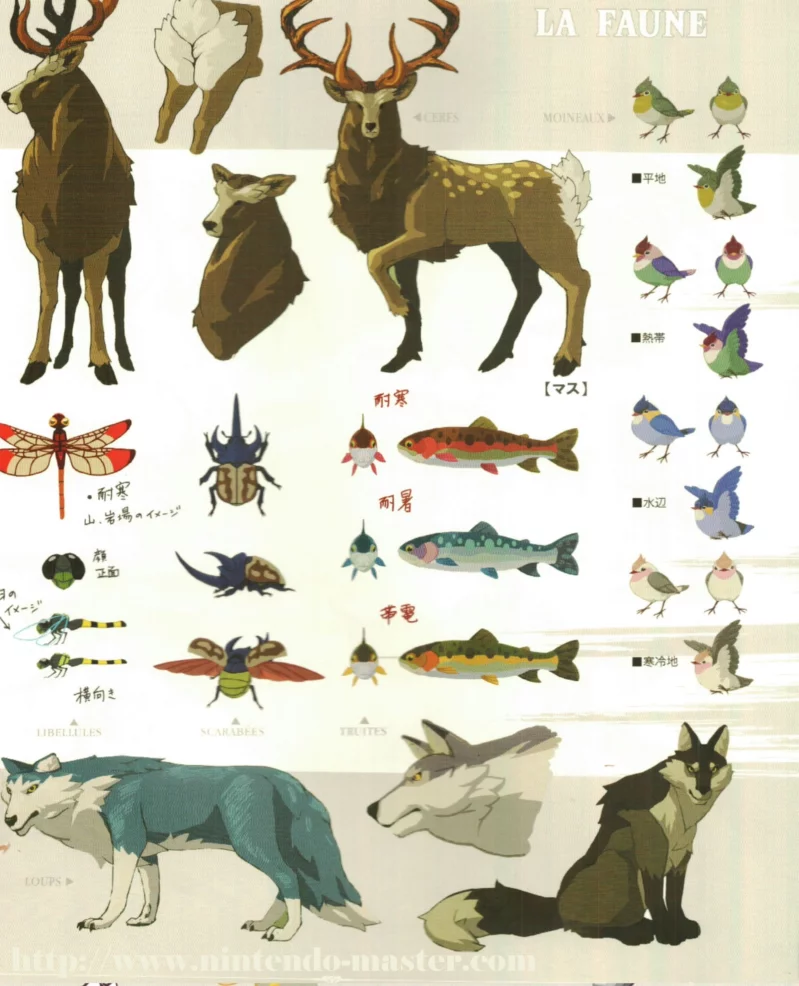
A lot of attention was paid to the wildlife, adding a lot of wild animals with which you can interact. Most of the fauna were made non-aggressive towards the player, but defensive if provoked. The addition of animals allowed for a rethinking of the treatment process. So Link was given the opportunity to hunt and cook, and not, as before, “mow hearts out of grass.”
During development, there were a lot of things that I had to convey visually, since other ways were simply not available. One of them is odor. The console can’t mimic the sense of smell, but I talked to landscape and effects designers about how to create a world that gives the impression of smelling. For example, in the real world, a special smell appears before the rain. I wanted to create its illusion with visual effects. At the same time, I focused on creating a world where imitation sounds could be transmitted. I wanted to create an onomatopoeia of wetness, staleness, and dryness that could be felt and conveyed without sound effects. If we could imitate senses such as smell and touch with visual information, the game world would become truly alive, and this was one of our main goals. ()
Satoru Takizawa
Thanks to such a study of the open world and wildlife, they decided to give it the name Breath of the Wild.
But an interesting open world is made up not only of places and events, but also of the mechanics available to the player for interacting with this world. The team understood this. And they also understood that creating new unique puzzle mechanics each time would require huge resources, so Fujibayashi began to think about how to mass-produce puzzles according to predetermined sets of rules. And in the end, he came to what he called “multiplicative gameplay”—when one mechanic comes from another.
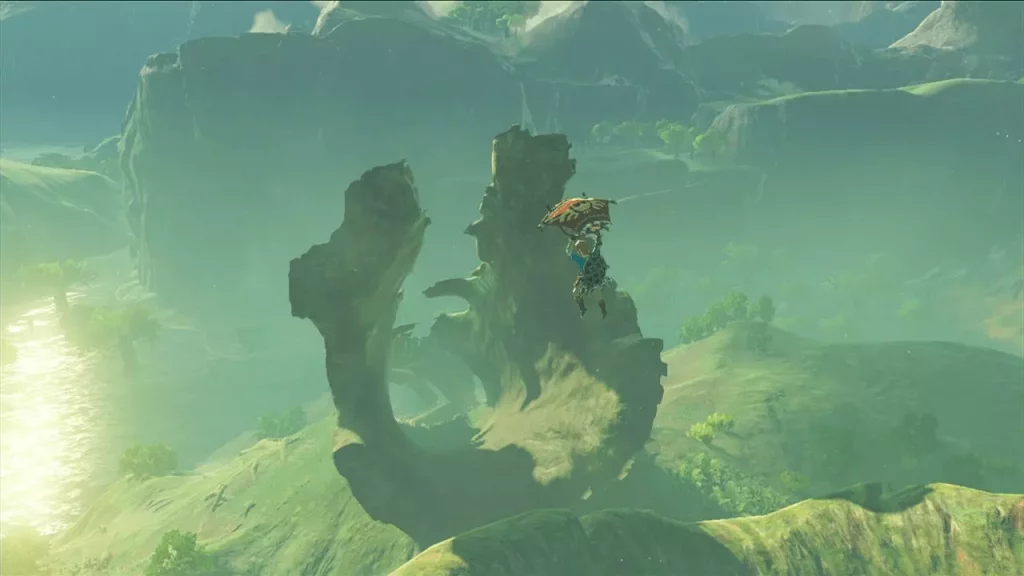
Fujibayashi was inspired by the mechanics of the glider, which emerged as a consequence of the mechanics of rock climbing. One interaction of the player with the world led to the expansion of its new possibilities. Together with technical director Takuhiro Dohta, he studied past games in The Legend of Zelda series for the mechanics of interacting with the world. So, in Ocarina of Time and Twilight Princess, they remembered the possibility of cutting trees and watching them float down the river. From A Link to the Past, they took the unrealized idea of burning grass, which had to be shelved due to lack of equipment and time to implement. But now they had it all, as well as the desire to make puzzles based on the intuitive laws of physics. Fujibayashi and Dohta believed that in this way, the player would be more involved in the game and begin to experiment with the opening of available mechanics.
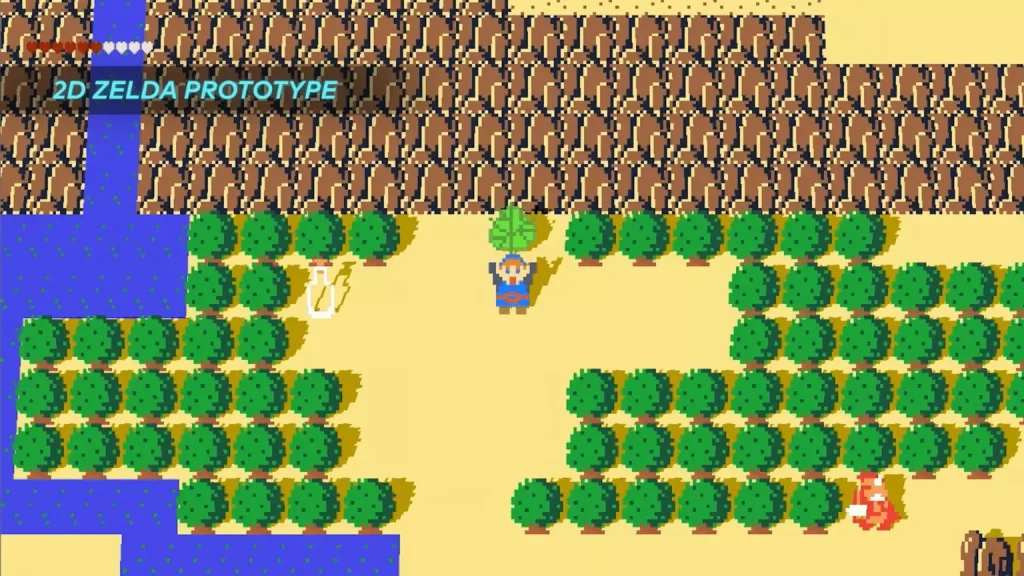
To convey this idea to the team, Dohta made a prototype that resembles the original The Legend of Zelda but with new gameplay features. Link could now set fire to trees and spread fire to nearby bushes with the wind. Or cut down these trees, throw them into the water, and swim on them. Or set fire to arrows, shooting them through a fire. After that, the team created a completely new physics system, where elements like fire and water could interact with almost all objects, causing various reactions. Slightly exaggerated versions of the laws of the real world, which, due to their plausibility, would encourage players to actively experiment with them.
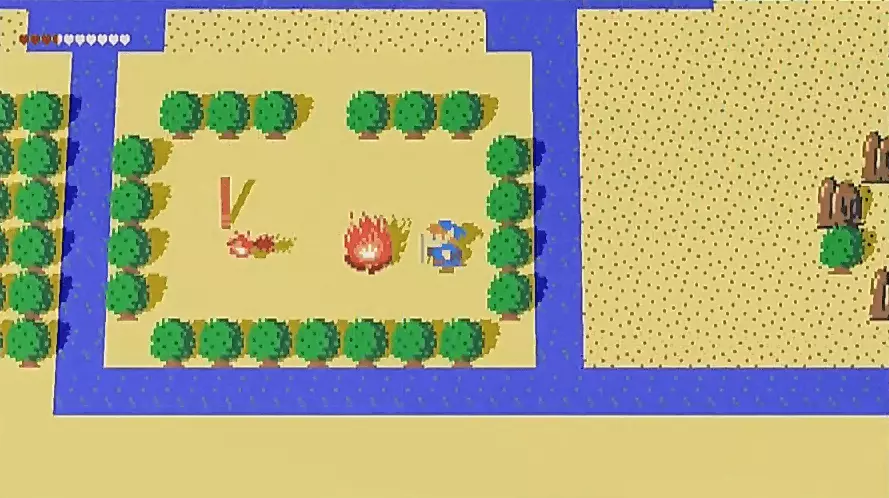
And to emphasize the naturalness of interaction with the world, the user interface was completely redesigned. If in Skyward Sword it was cumbersome and intrusive, then for Breath of the Wild it was decided to make it as inconspicuous as possible. The key to this was a “warm white color,” which the team called “Zelda white,” and they used it in the icons, which became simple and almost invisible, not distracting from the game itself.
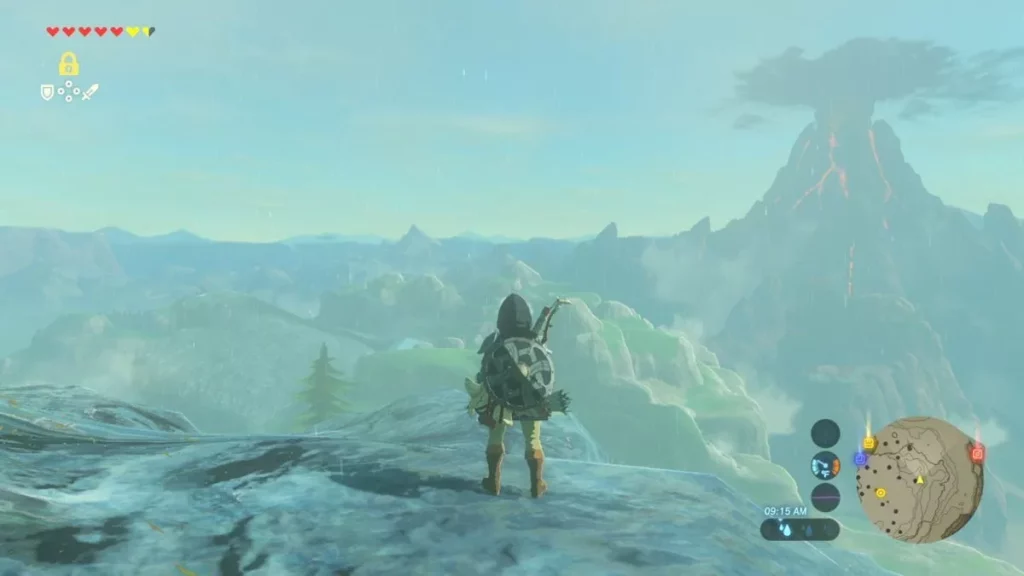
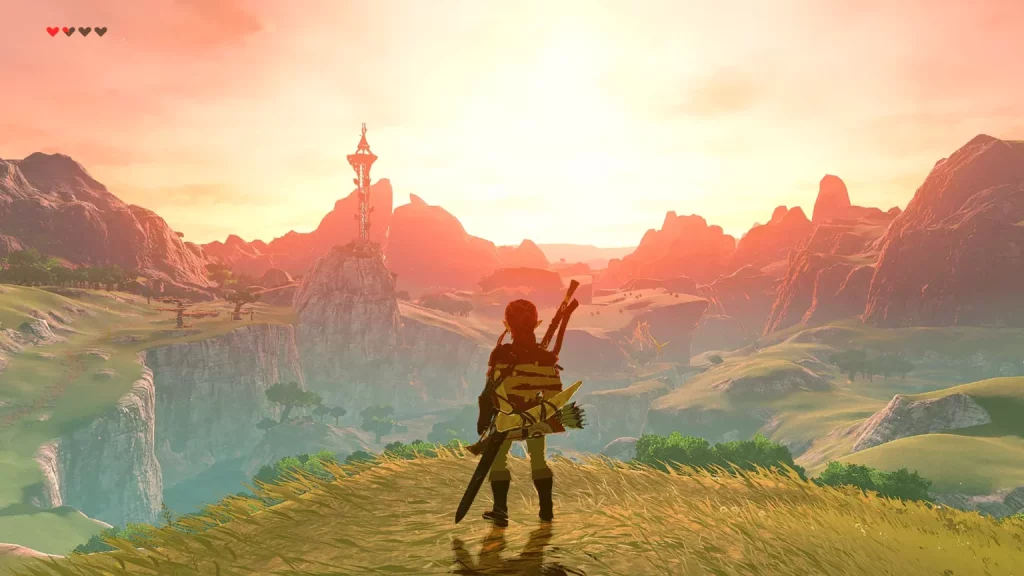
However, because all of this took a long time to develop, it was decided in 2015 to relocate Breath of the Wild. This gave the developers not only additional time to refine the game but also the opportunity to add even more new mechanics. And then, at the beginning of 2016, it became known about the imminent release of the Nintendo Switch, as a result of which the game was decided to be released at the start of the console. True, for this it was necessary to redo the plot of the game. So, initially, the Shiika Stone was given much more attention.
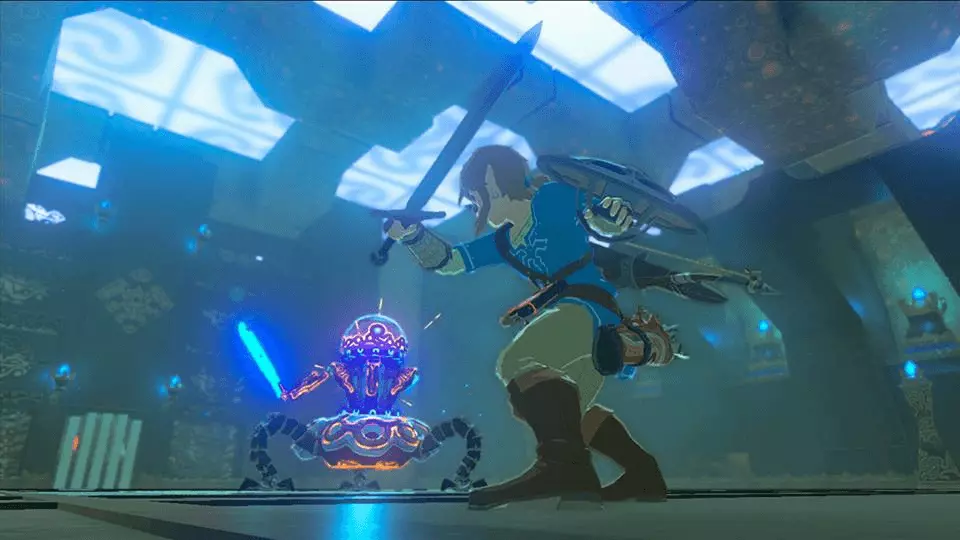
As a result, Breath of the Wild was released worldwide for Wii U and Switch in March 2017 and became a hit. It is favored by critics and casual players alike, and it is the first game in the series to come close to Ocarina of Time and outsell all previous titles, selling over 20 million copies to date.
The Legend of Zelda: Tears of the Kingdom
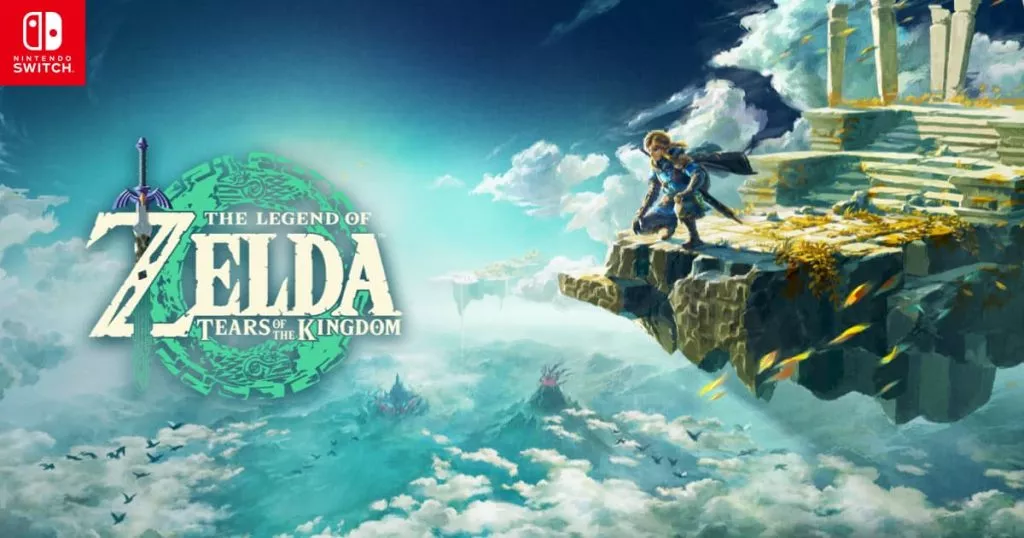
Development of Tears of the Kingdom began in 2017 after the completion of Breath of the Wild. Initially conceived as DLC ideas, it evolved into a new game due to an abundance of concepts. The game was announced at E3 2019 as a sequel to Breath of the Wild, with a gameplay trailer unveiled at E3 2021, revealing story elements and a targeted 2022 release. However, the release window was later changed to Q2 2023. Additional information was shared in the September 2022 Nintendo Direct, including the official title and a release date of May 12, 2023. A later Nintendo Direct in February 2023 teased more gameplay elements.
Tears of the Kingdom was directed by Hidemaro Fujibayashi and produced by Eiji Aonuma, following the team’s inability to incorporate all their ideas into Breath of the Wild’s DLC. New elements in Tears of the Kingdom include floating islands above Hyrule, reminiscent of The Legend of Zelda: Skyward Sword. The involvement of Zelda creator Shigeru Miyamoto was reduced due to scheduling conflicts.
The development team aimed to create a new experience while retaining similarities to Breath of the Wild. They revisited ideas originally intended for its predecessor and expanded exploration areas into the sky and underground. The game reintroduced large dungeons connected to Hyrule’s surface, showcasing Link’s abilities and gadgets. The ability to build new items and experiment was encouraged, with Zonai devices serving as tools for creativity. The theme of “hands” was central to the game, symbolizing connection and cooperation. The Ascend ability originated from a debug feature and was inspired by games like Red Dead Redemption 2 and The Elder Scrolls V: Skyrim. Tears of the Kingdom underwent refinement and a one-year delay before its final release.
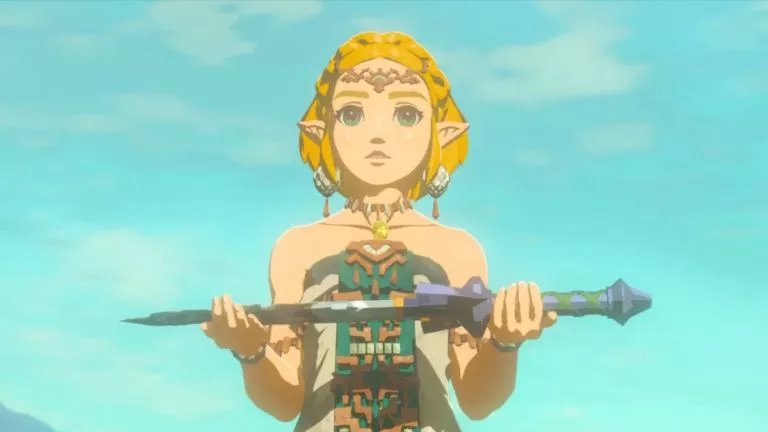
After the events of Breath of the Wild, Link and Zelda explore a secret passage beneath Hyrule Castle. They discover ancient Zonai ruins and murals depicting a great war against the Demon King. In the deepest chamber, they awaken a mummified Ganondorf bound by a disembodied arm. Ganondorf comes to life, attacking Link and Zelda with Gloom. Link’s arm is replaced by the disembodied arm, and Zelda disappears. Link embarks on a quest to restore his strength and save Zelda. With the aid of four companions and the power of Secret Stones, Link defeats monsters occupying Zonai temples. Link learns that Zelda was transported to the past and became a dragon. He retrieves the Master Sword and faces Ganondorf’s army with the help of the sages’ successors. Zelda’s draconic form assists in defeating Ganondorf. Zelda and Link return to the surface, bidding farewell to their allies.
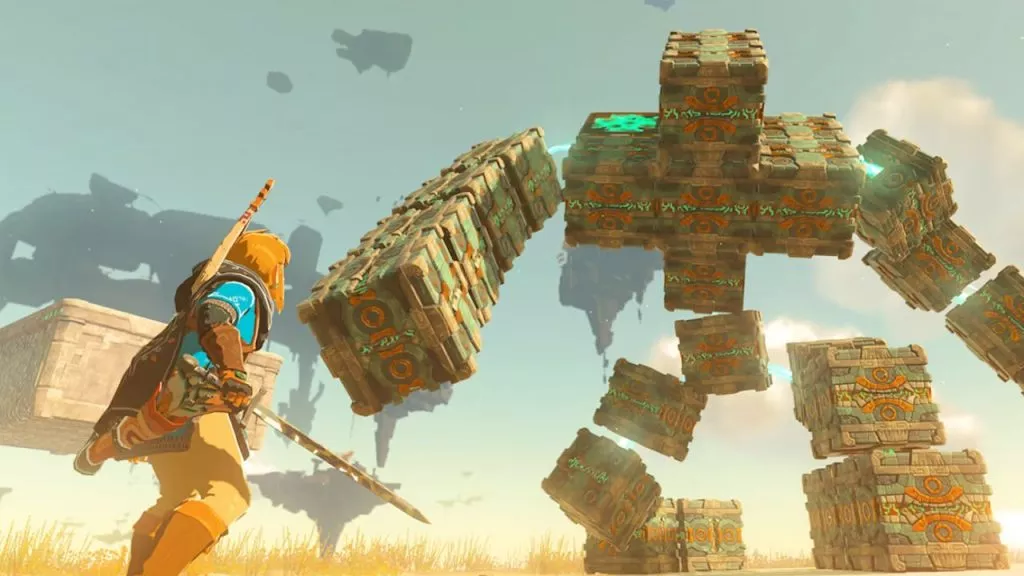
Tears of the Kingdom maintains a gameplay style reminiscent of its predecessor, introducing several notable additions. Among them are the inclusion of rail grinding and the ability for Link to construct various mechanical means of transportation using the Ultrahand ability. This grants him the capability to build cars, mechs, boats, and a plethora of other fascinating contraptions. Additionally, Link gains access to the Fuse ability, enabling him to enhance weapons by fusing them with objects, as well as fusing items with his shield and arrows. During the gameplay presentation on March 28, 2023, Eiji Aonuma showcased four new runes: Recall, Fuse, Ultrahand, and Ascend, further expanding Link’s arsenal of abilities.
Epilogue
The Legend of Zelda series has come a long way over the last 37 years, full of ups and downs, incredible triumphs and insulting failures. Just like its creators overcame a lot, learning from their own mistakes, first changing the industry, and then finding themselves on the verge of oblivion. To then continue to experiment again, realizing from my own experience that the only way to stay in the ranks is to constantly develop. Always look for new ways to surprise. constantly implement new ideas, albeit not always successful.
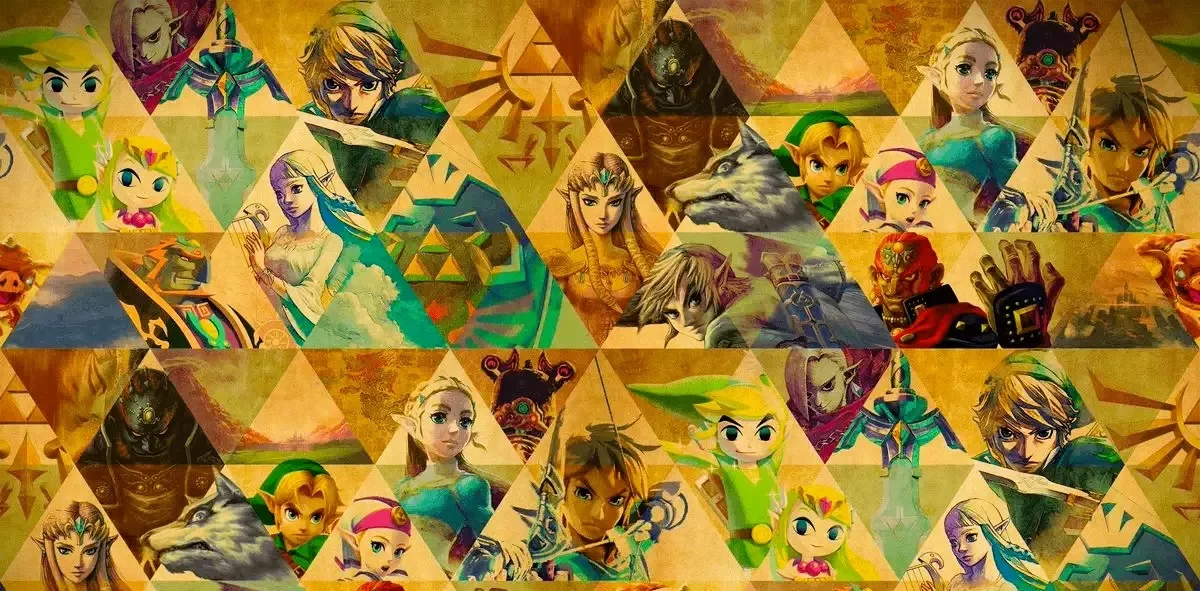
The Legend of Zelda: Tears of the Kingdom will be released soon, I hope you will supplement the article with information about this game
Done!